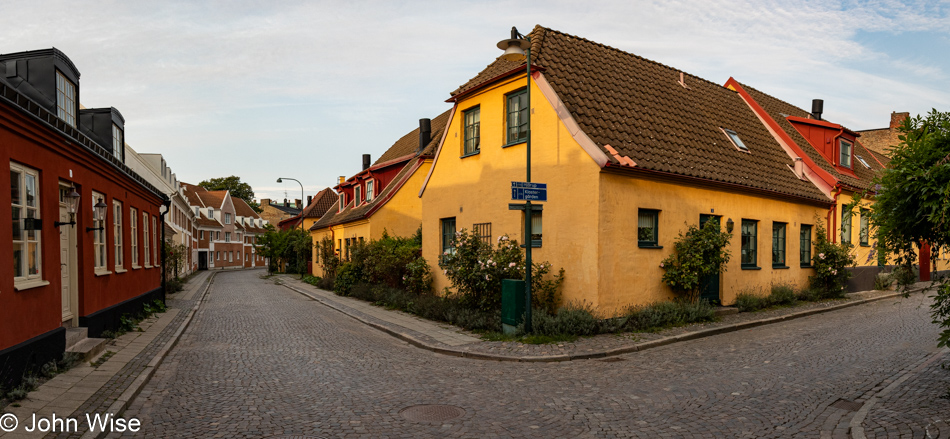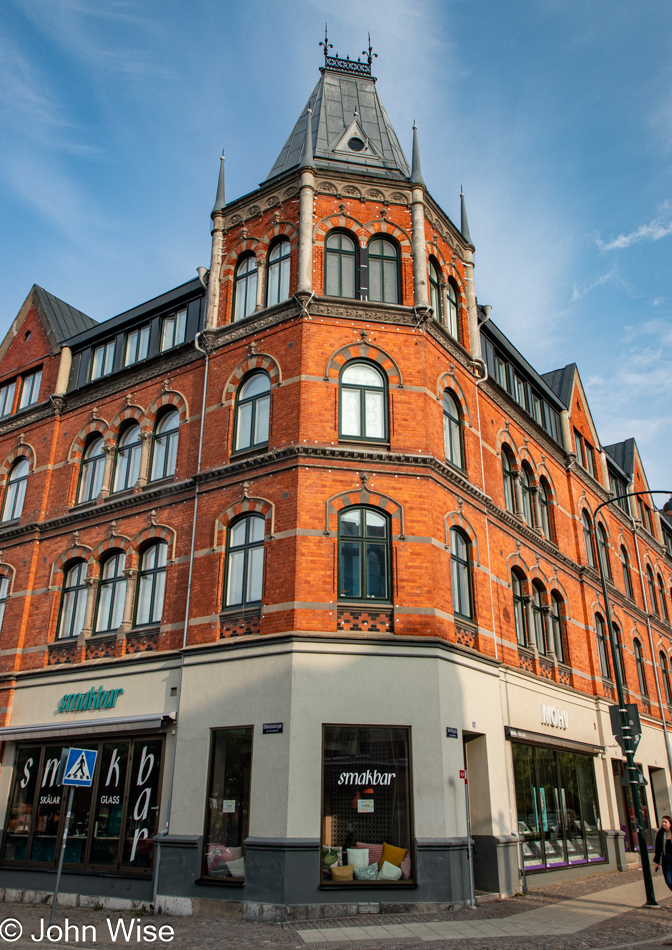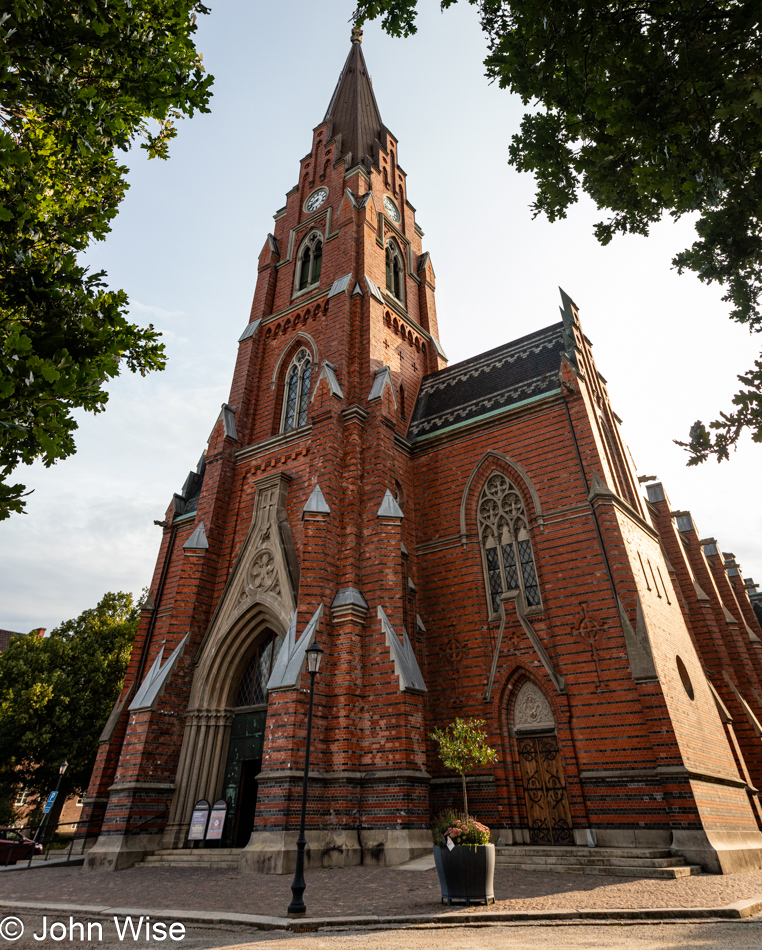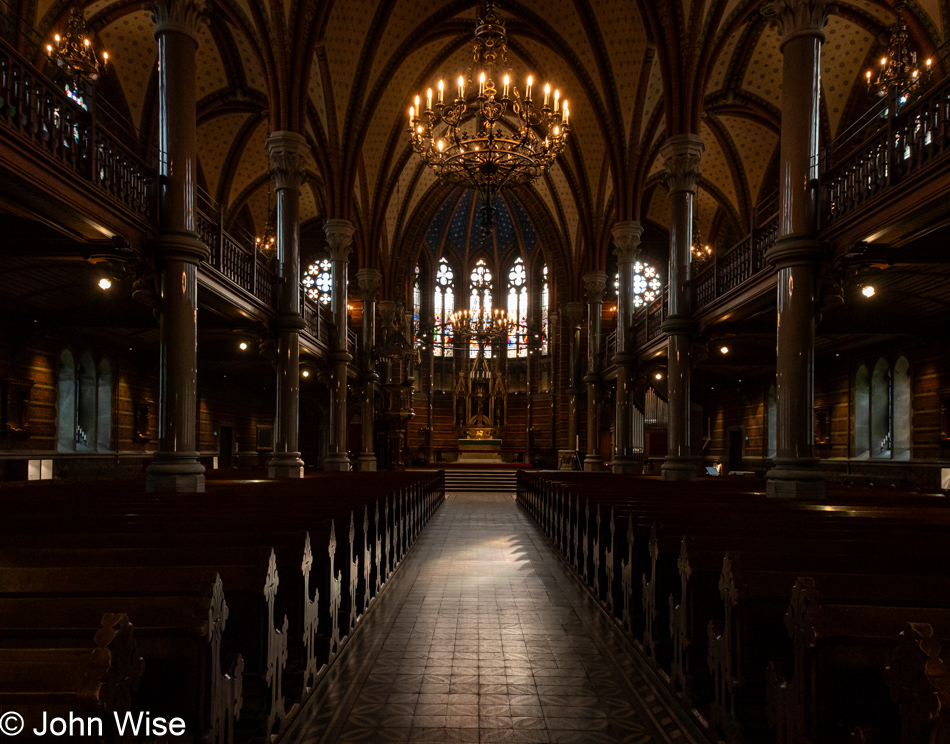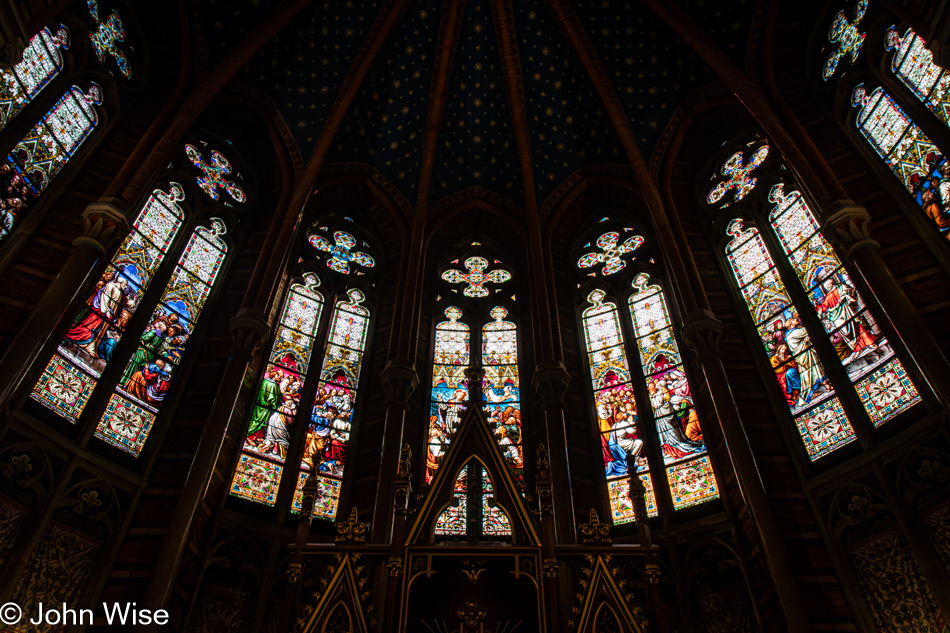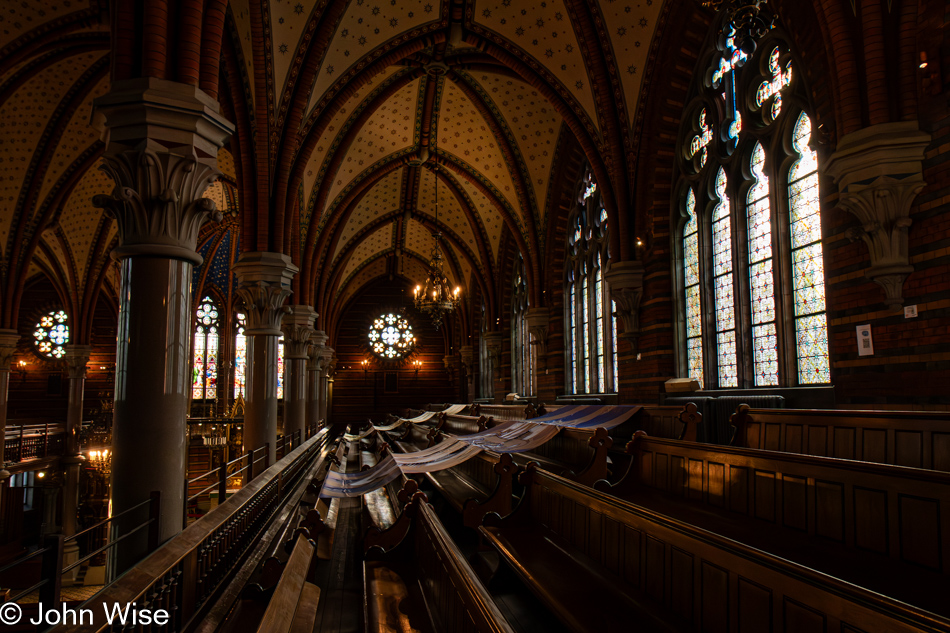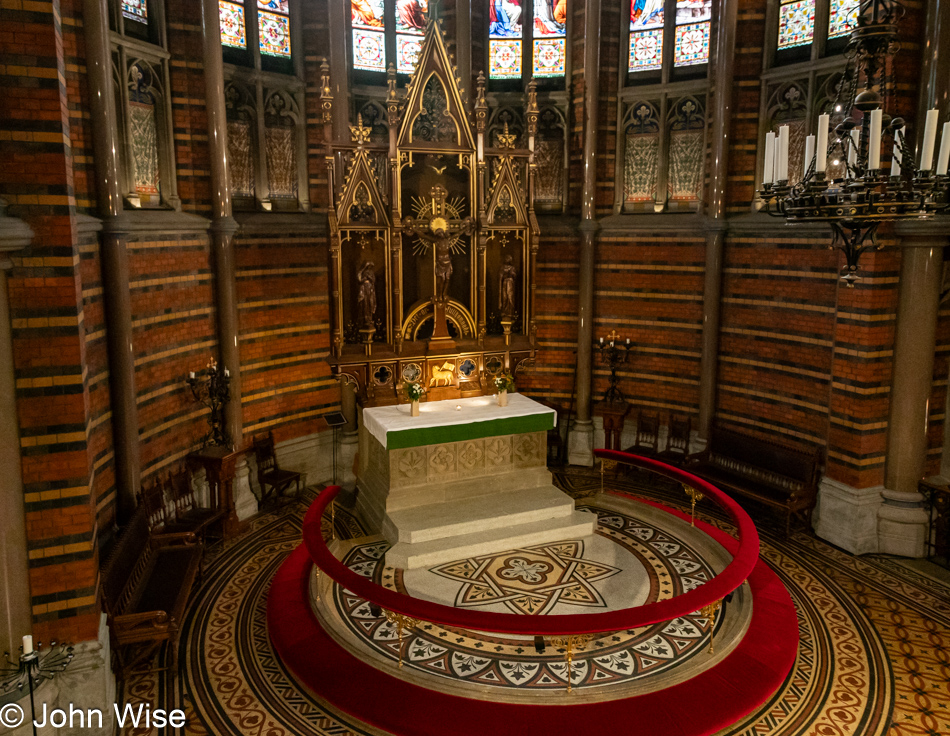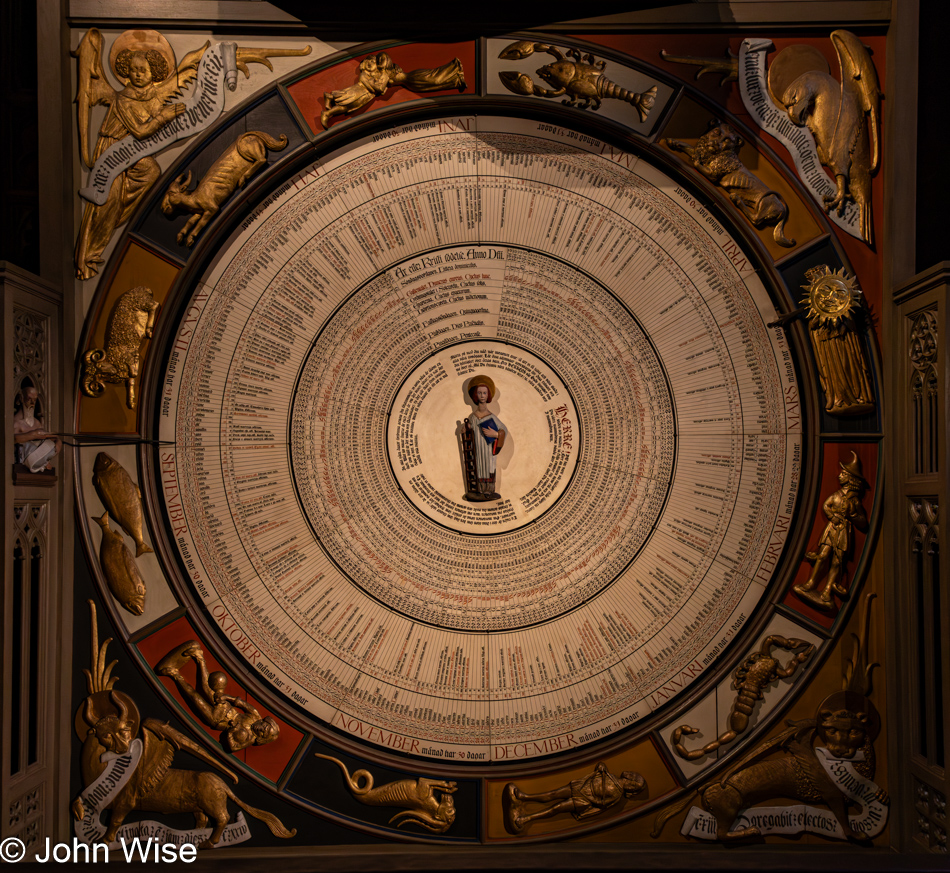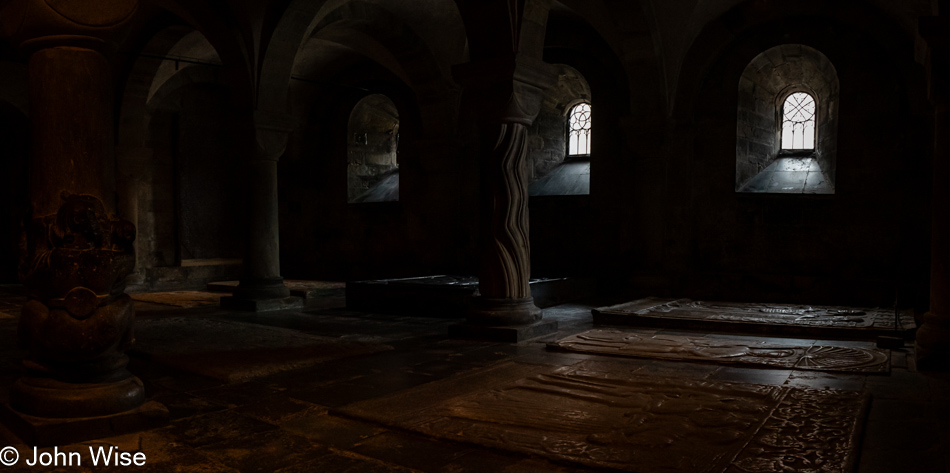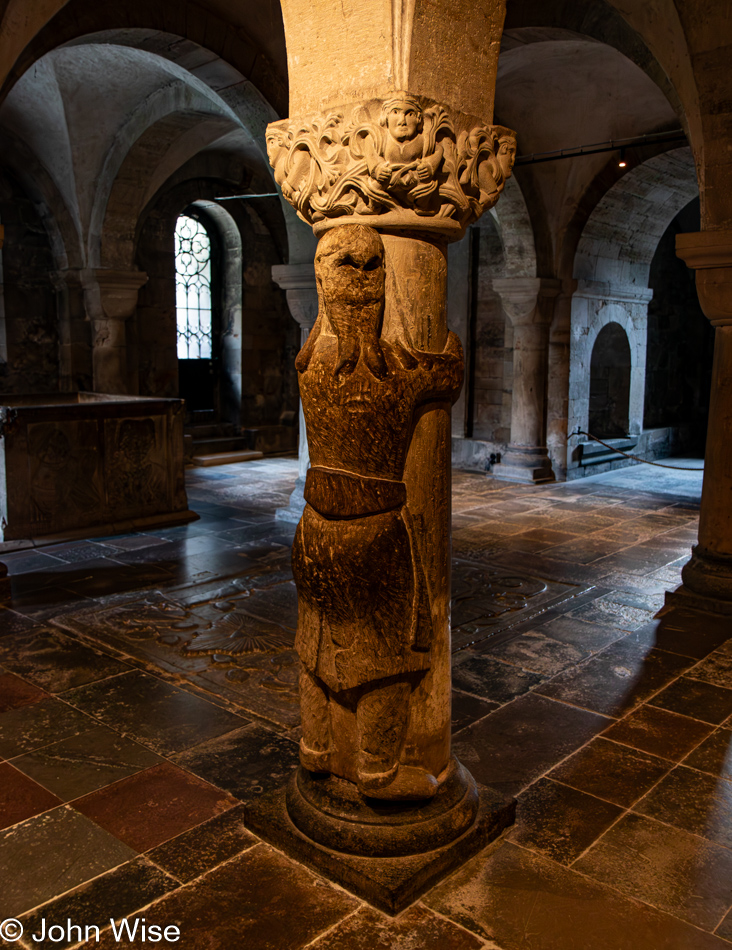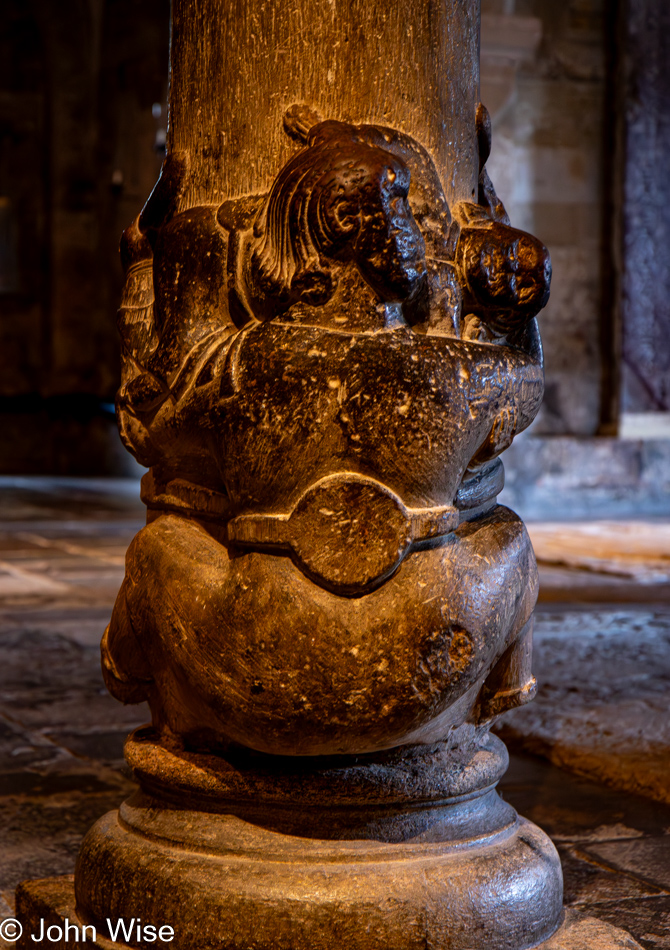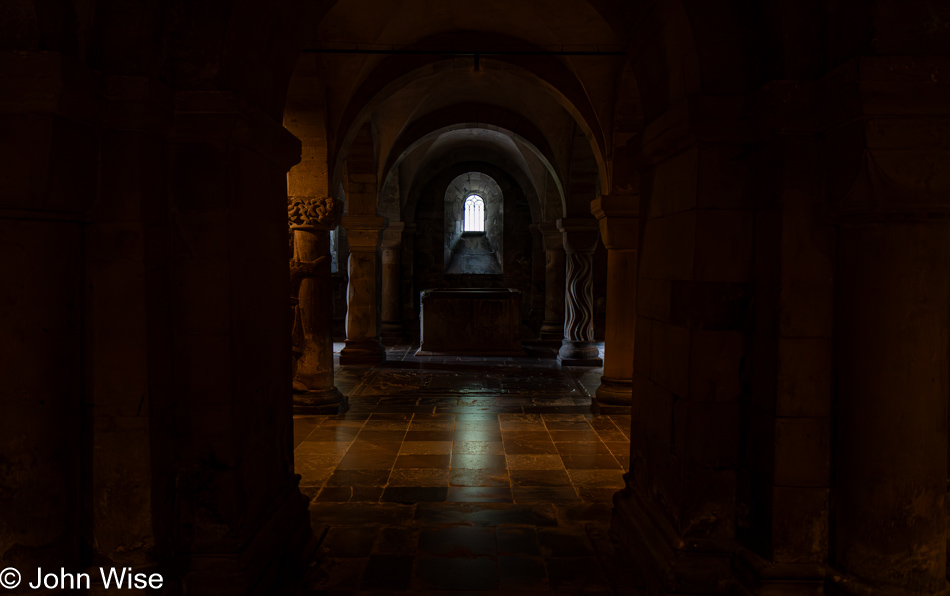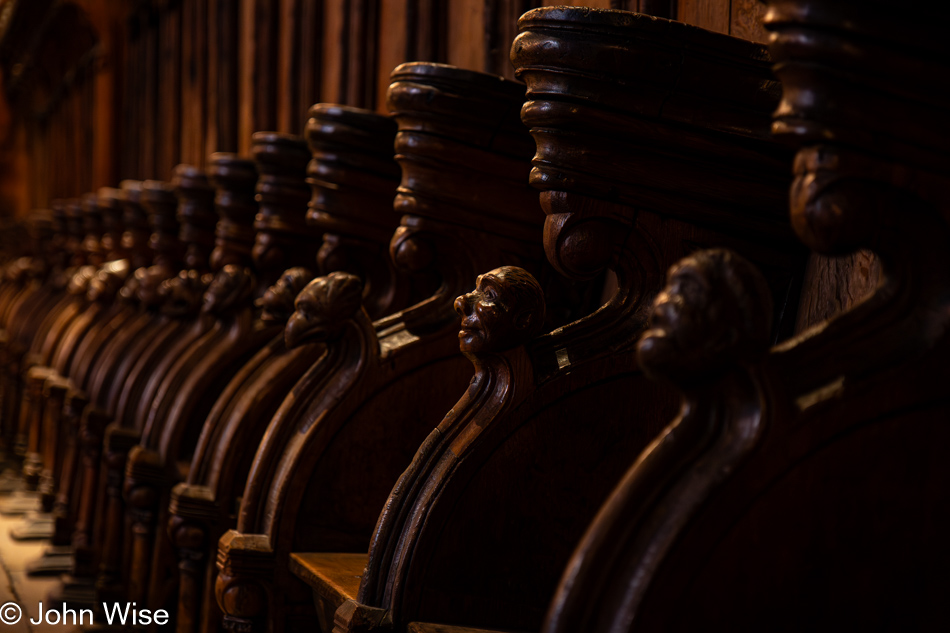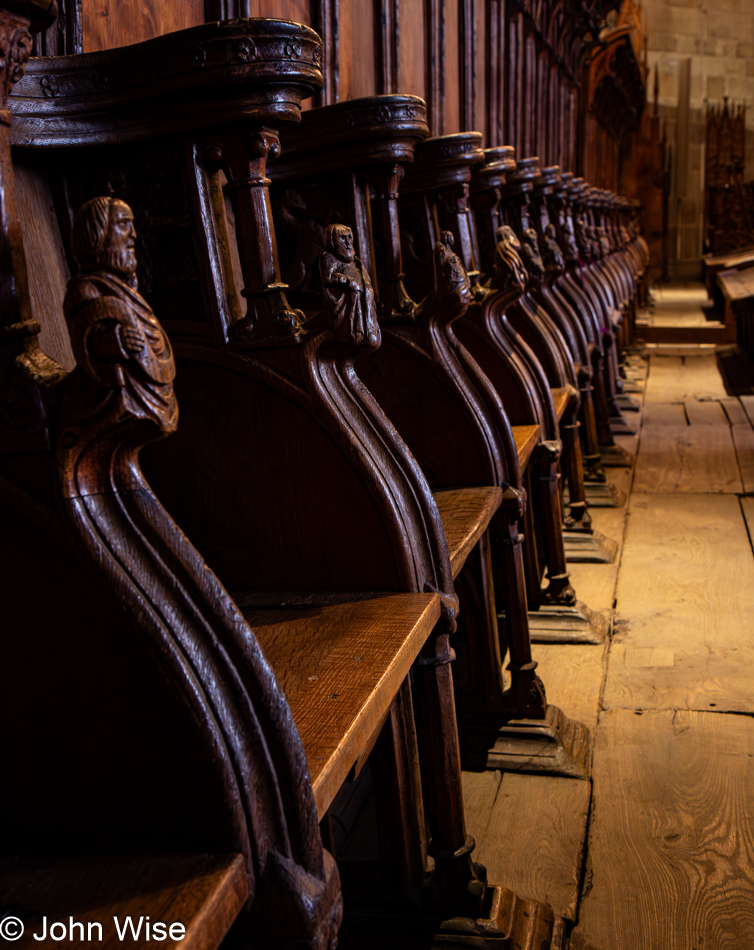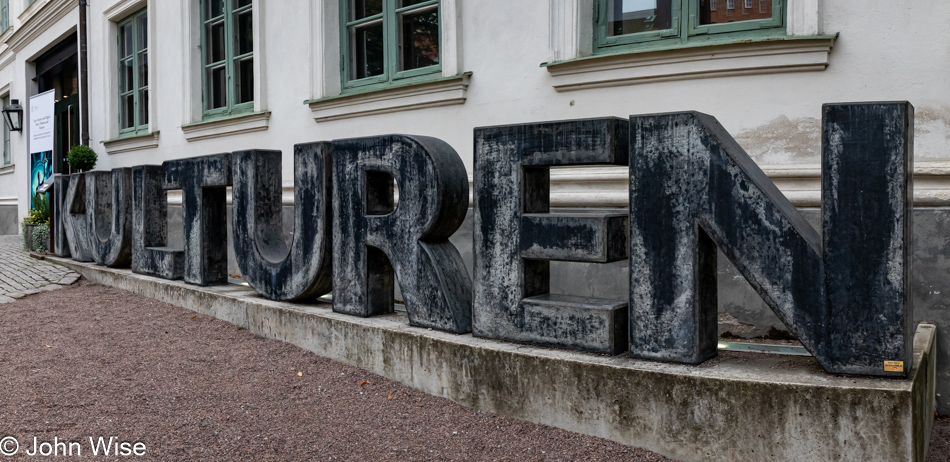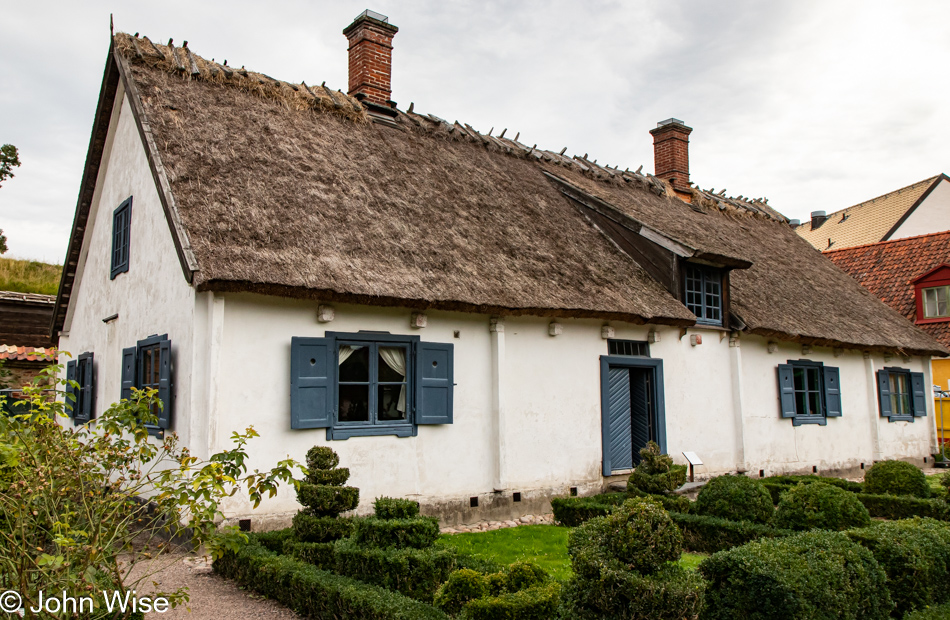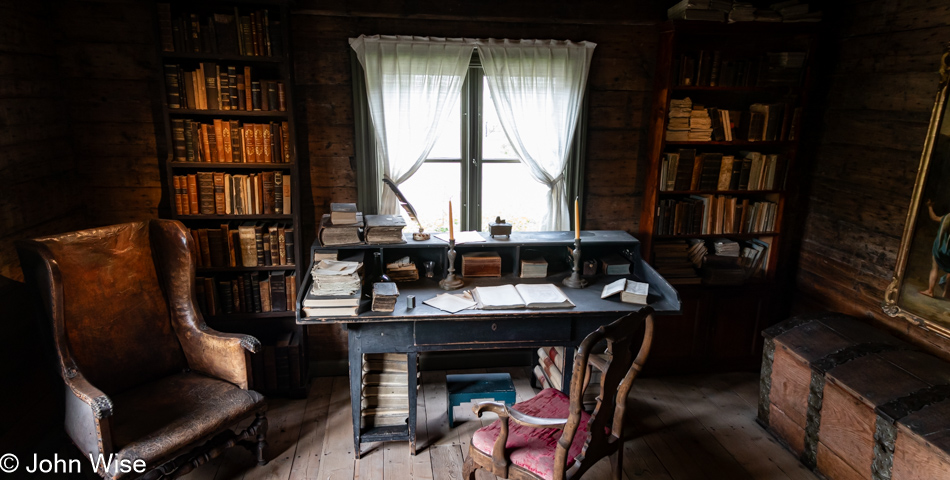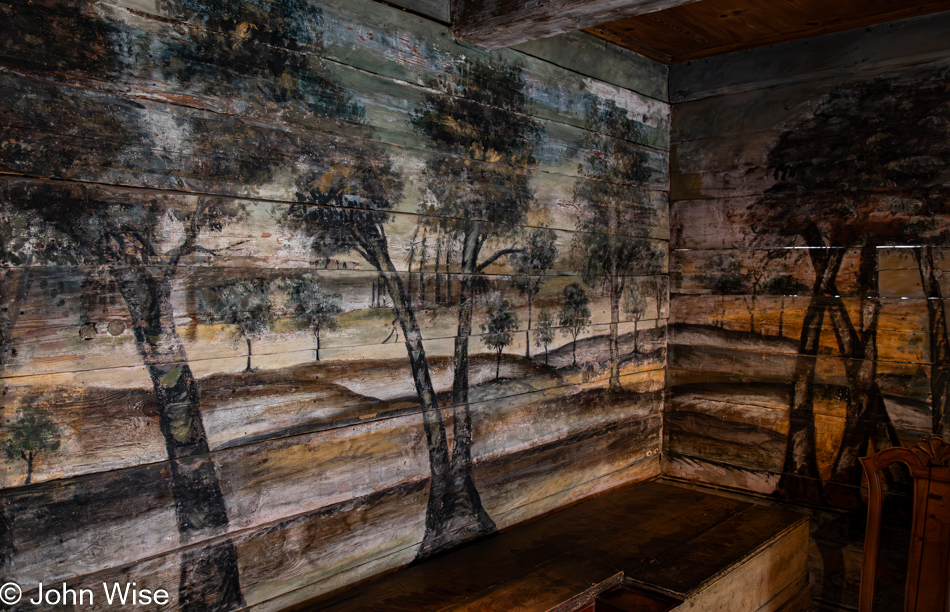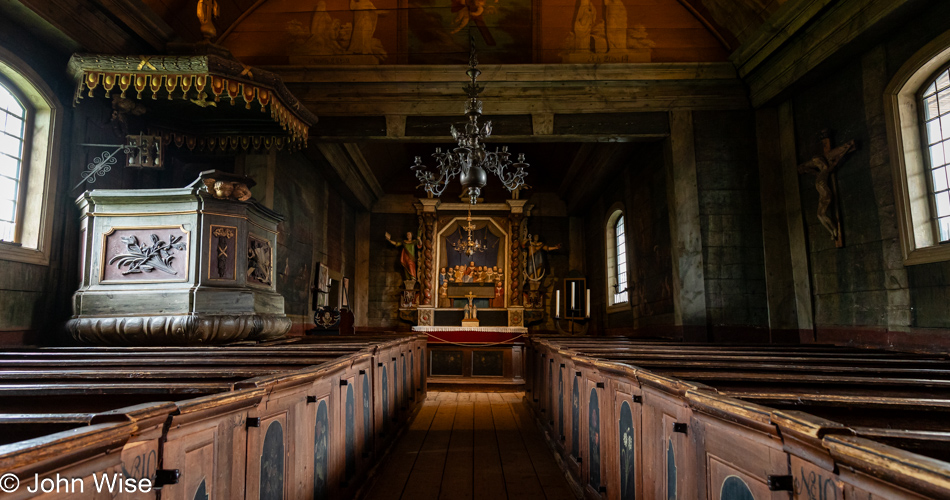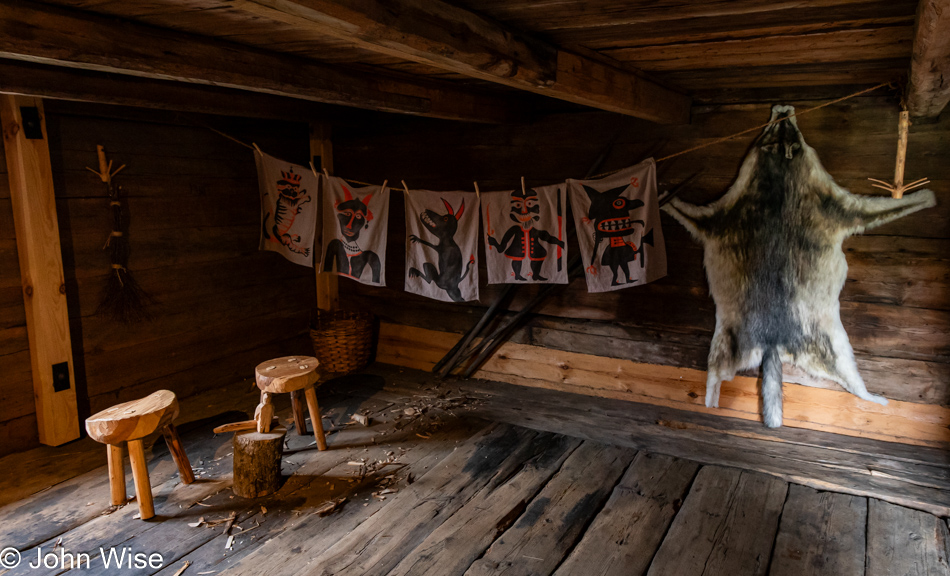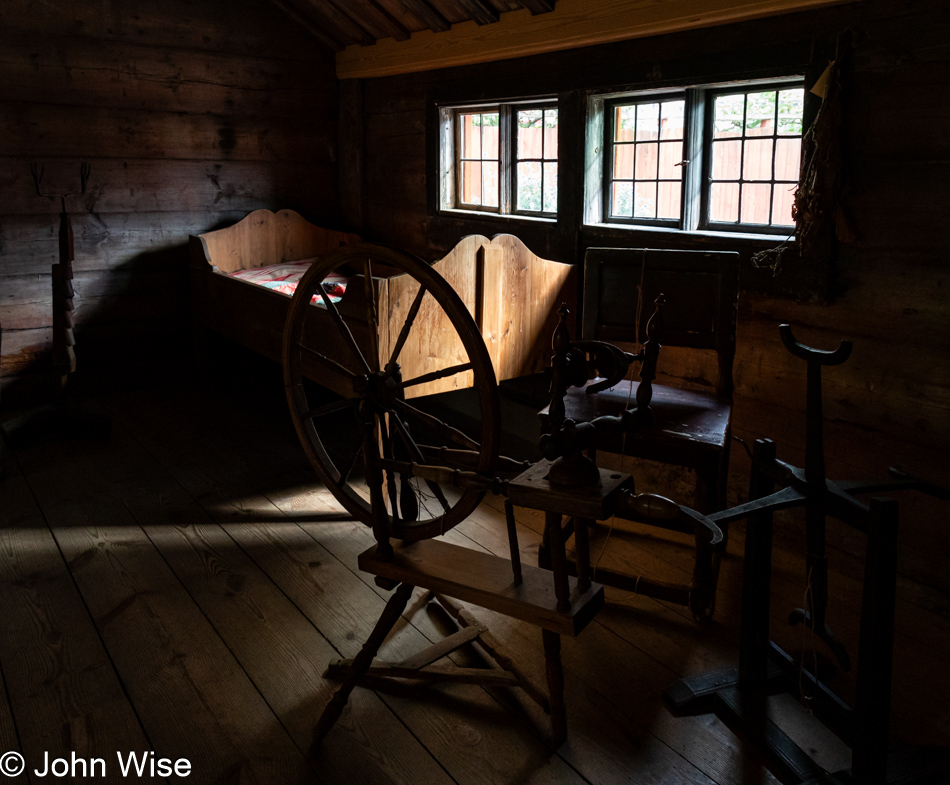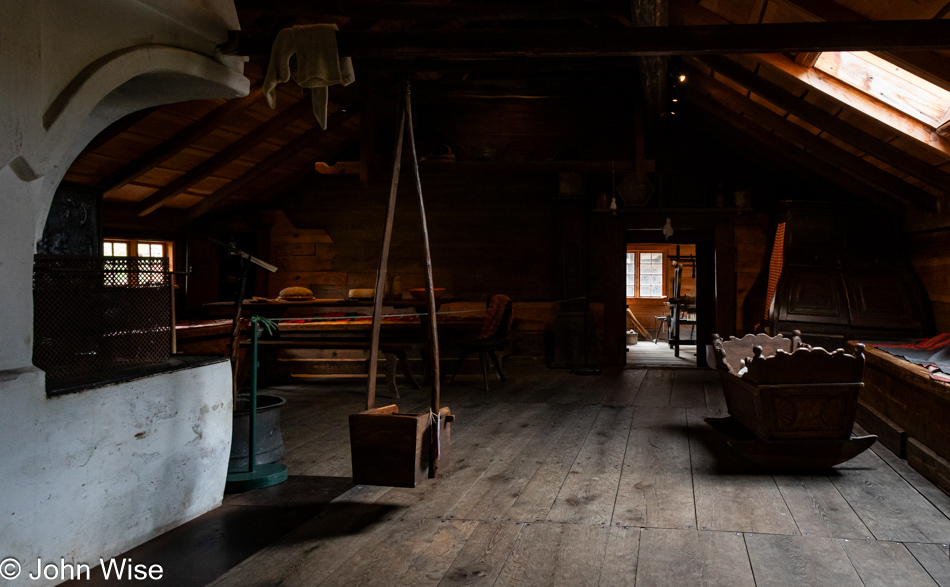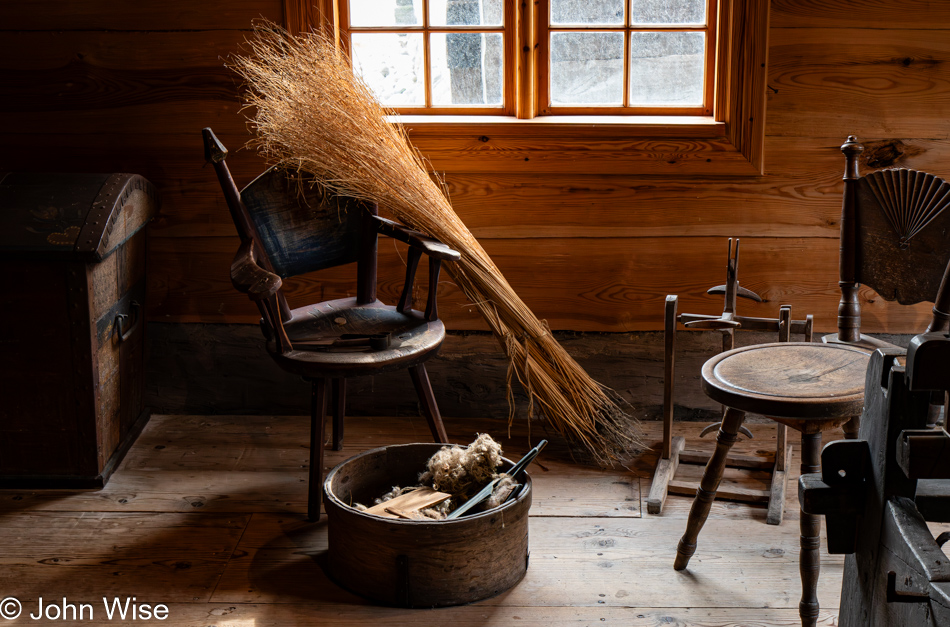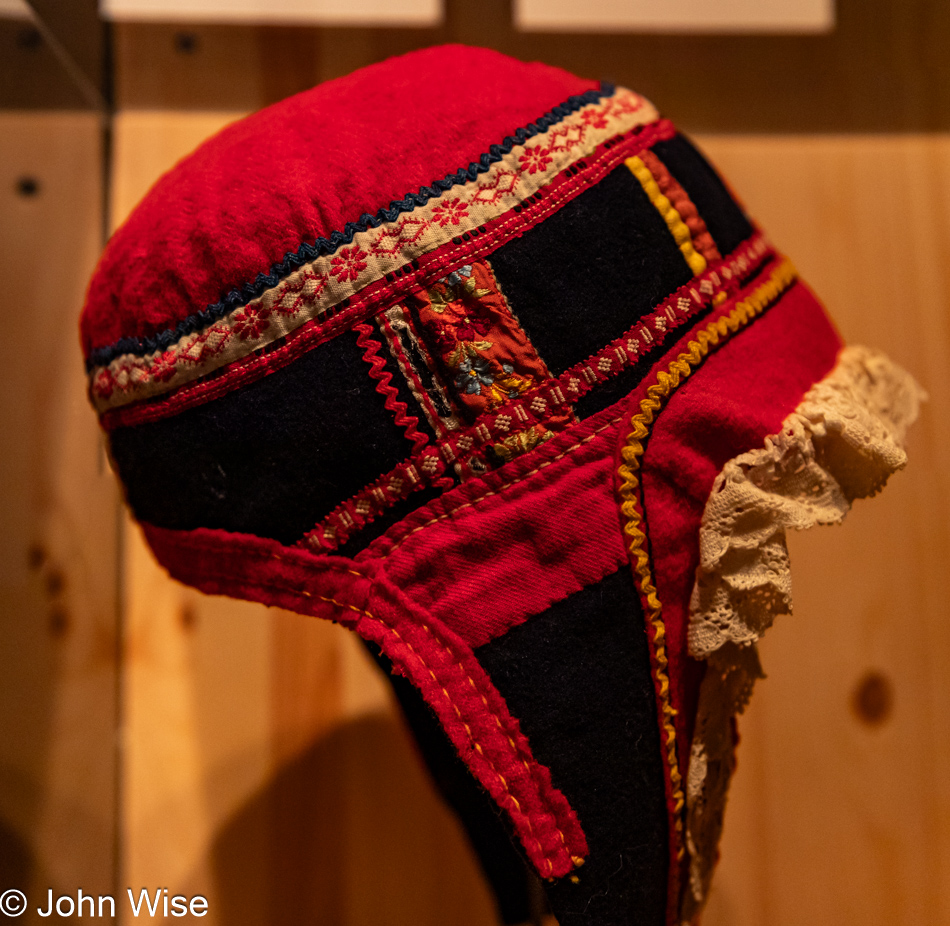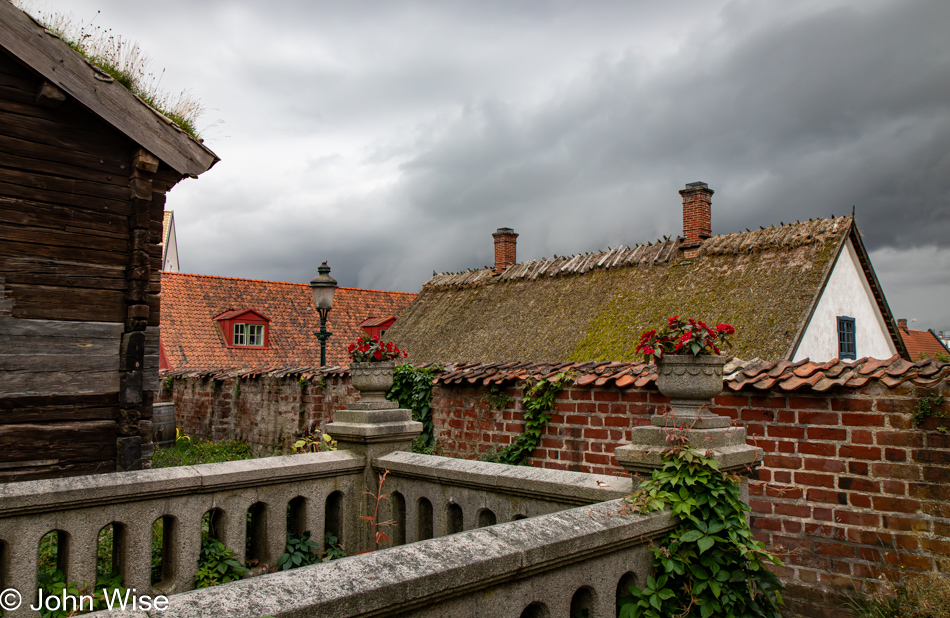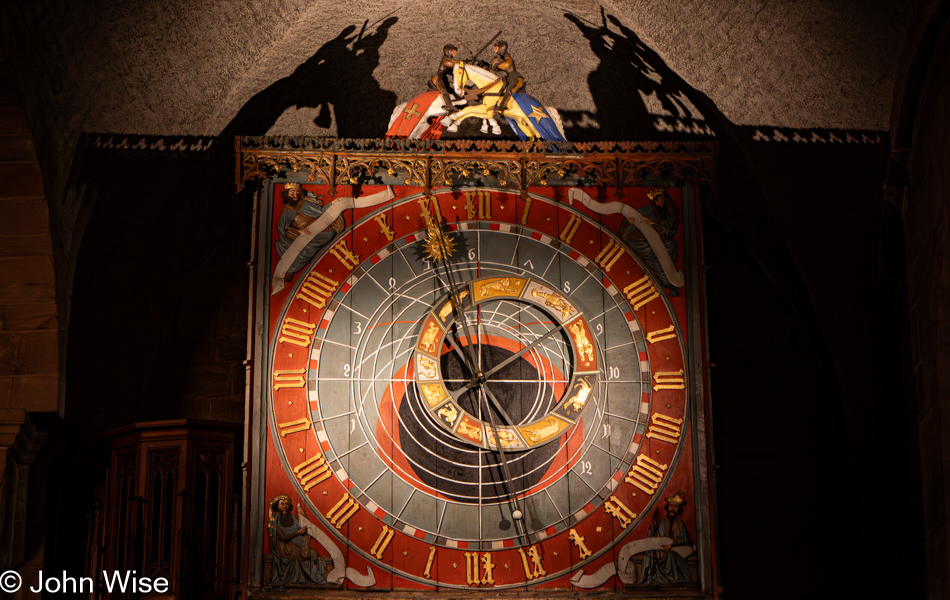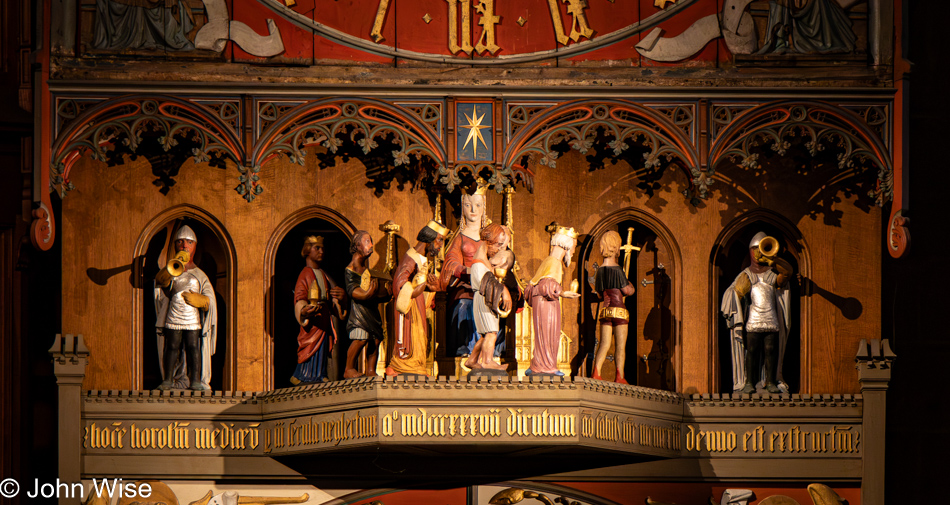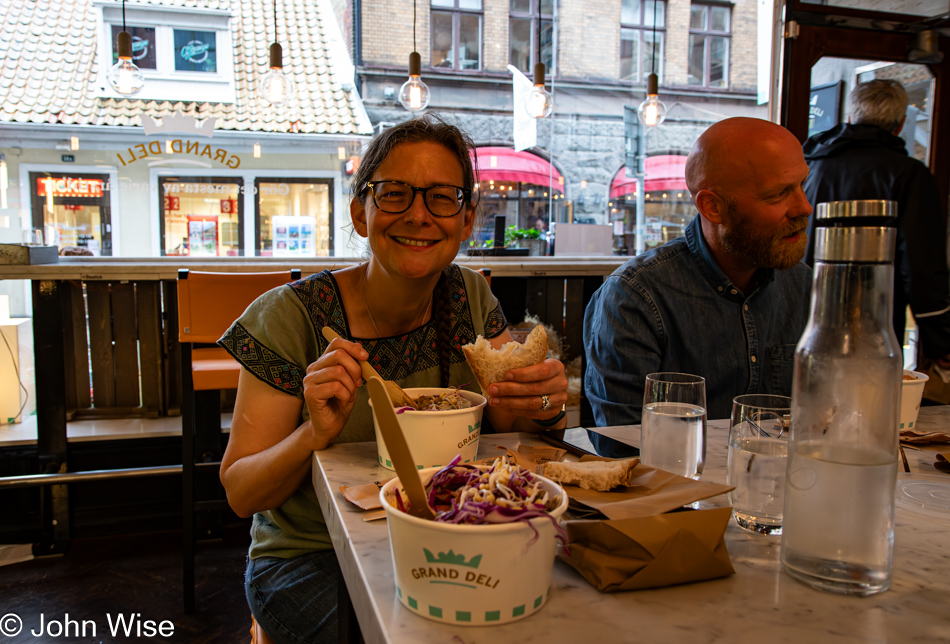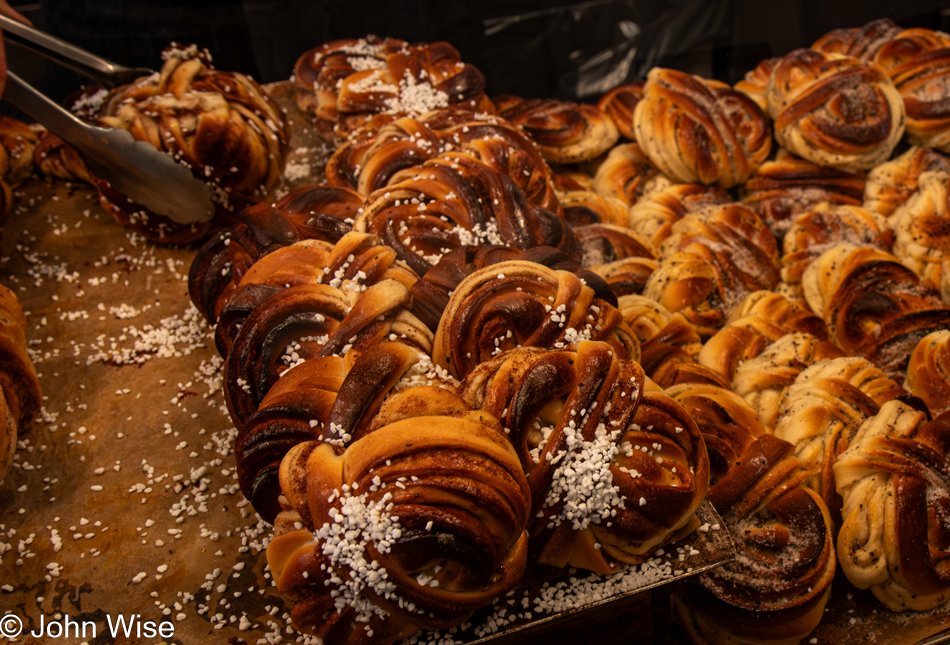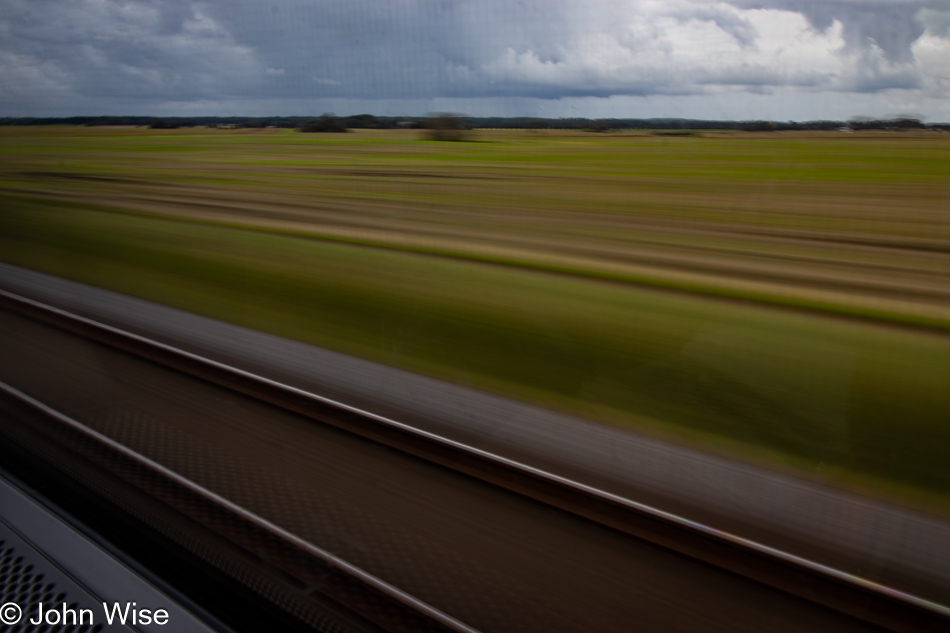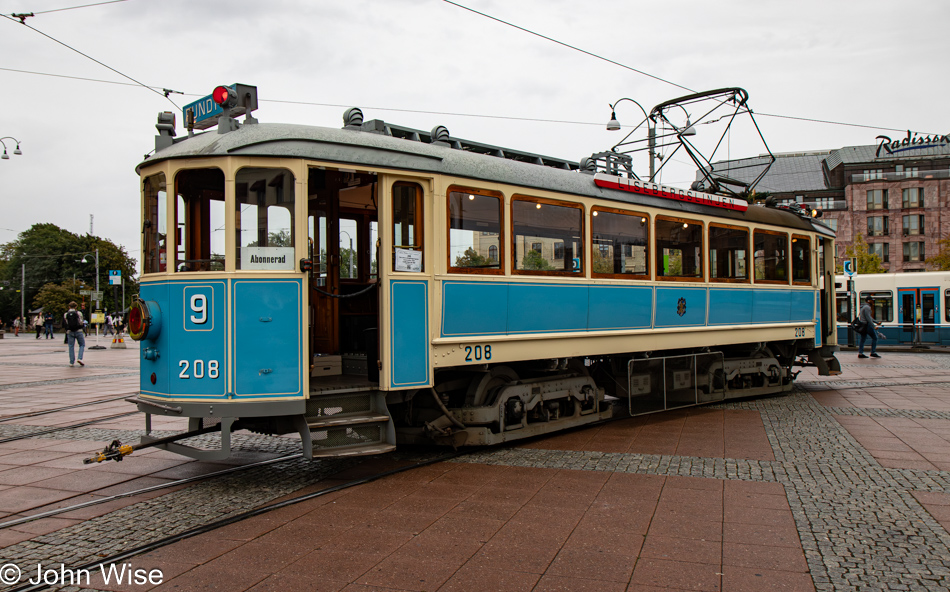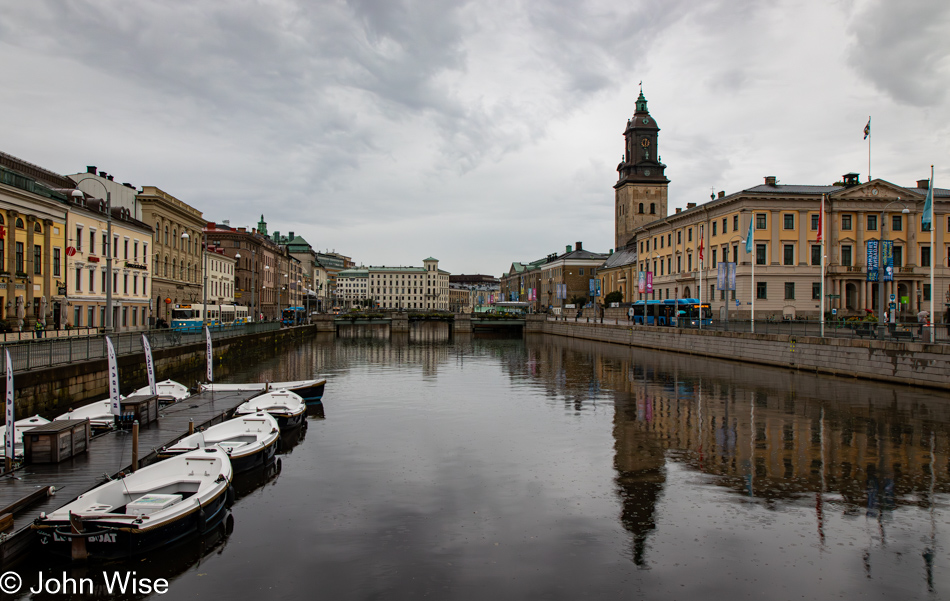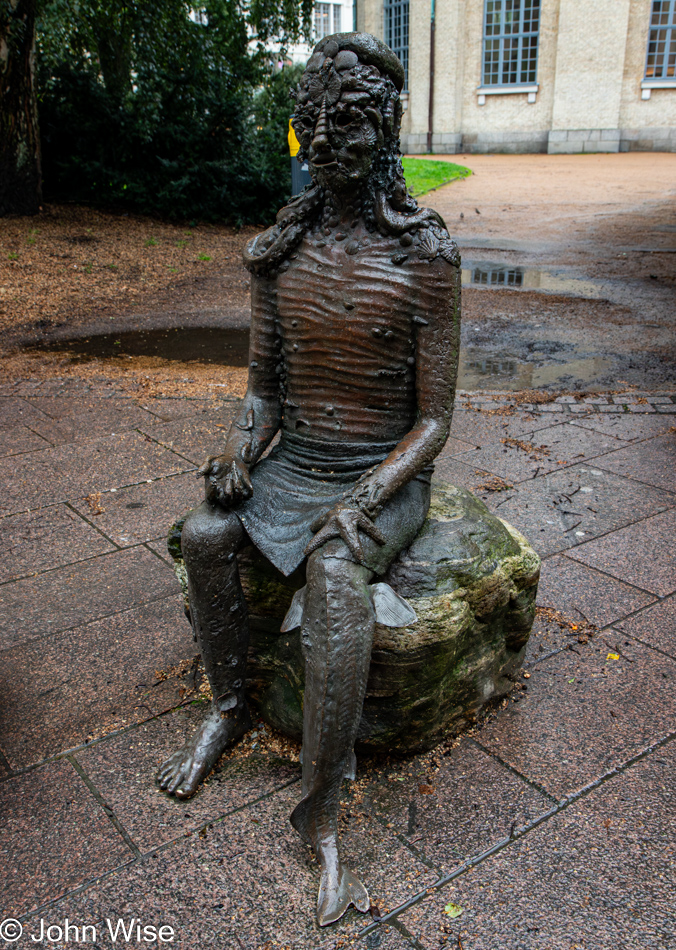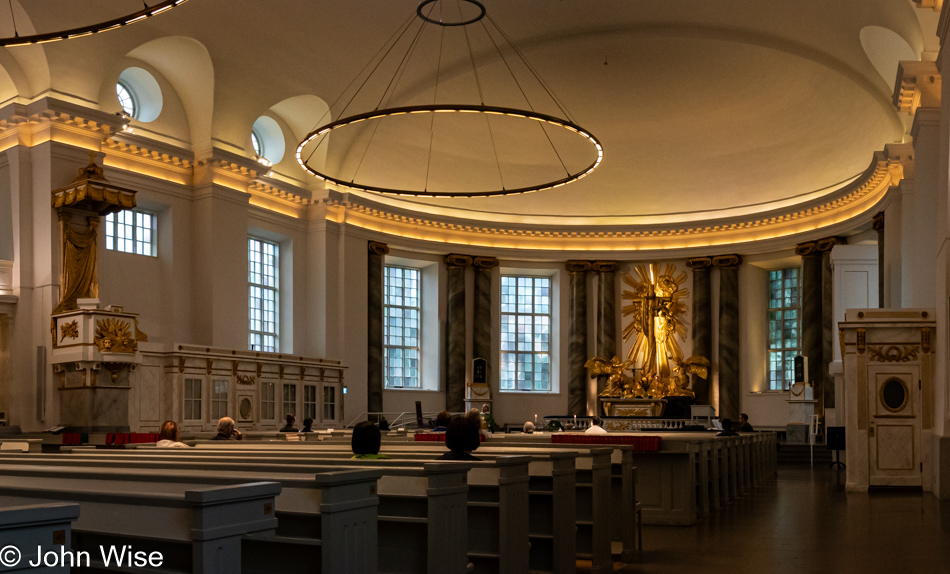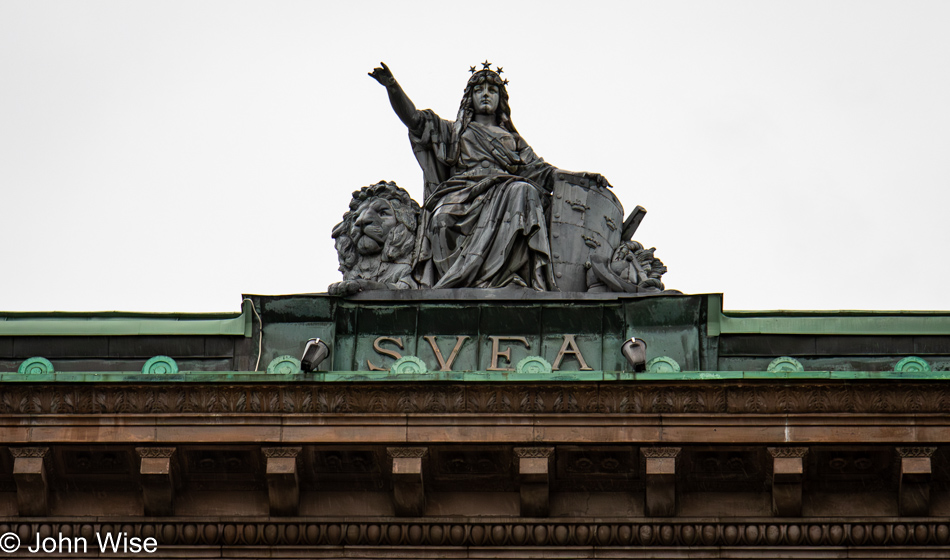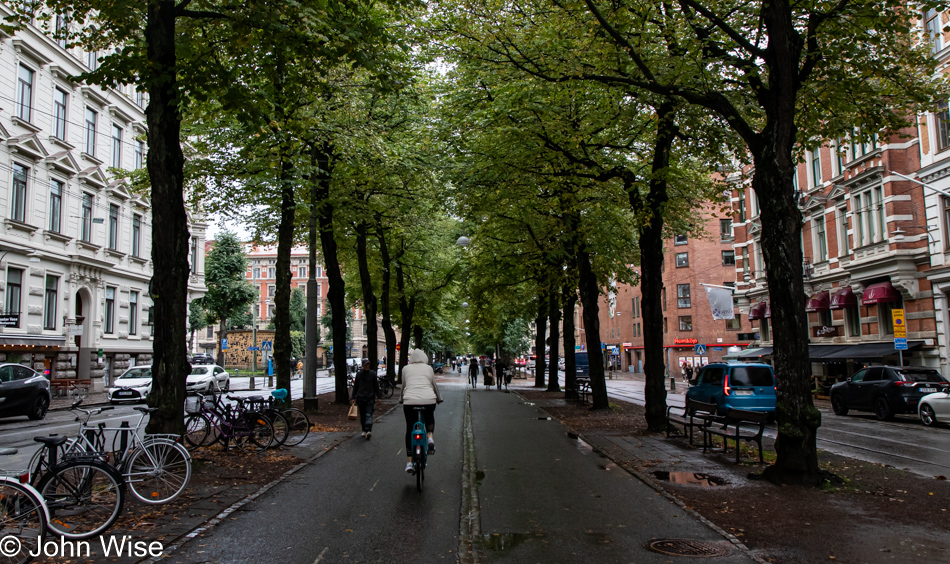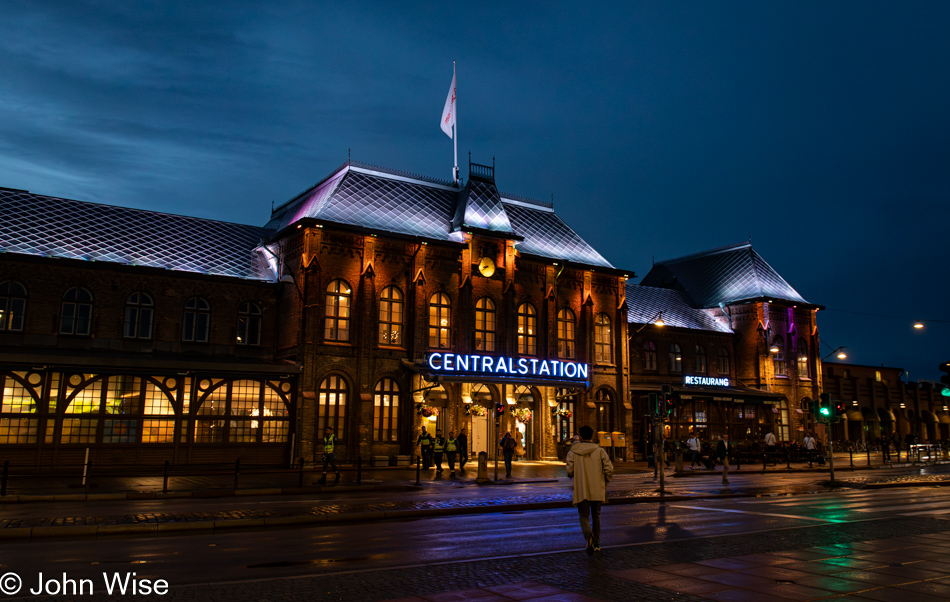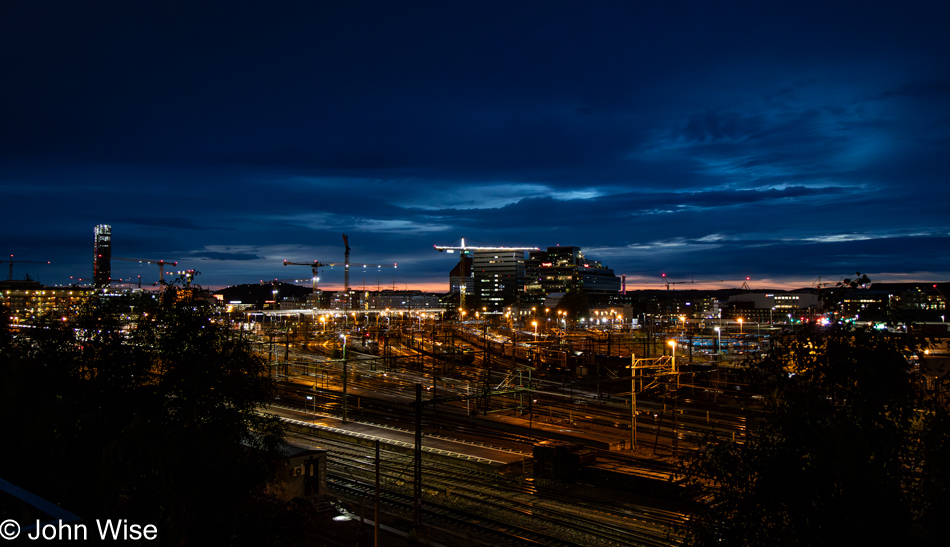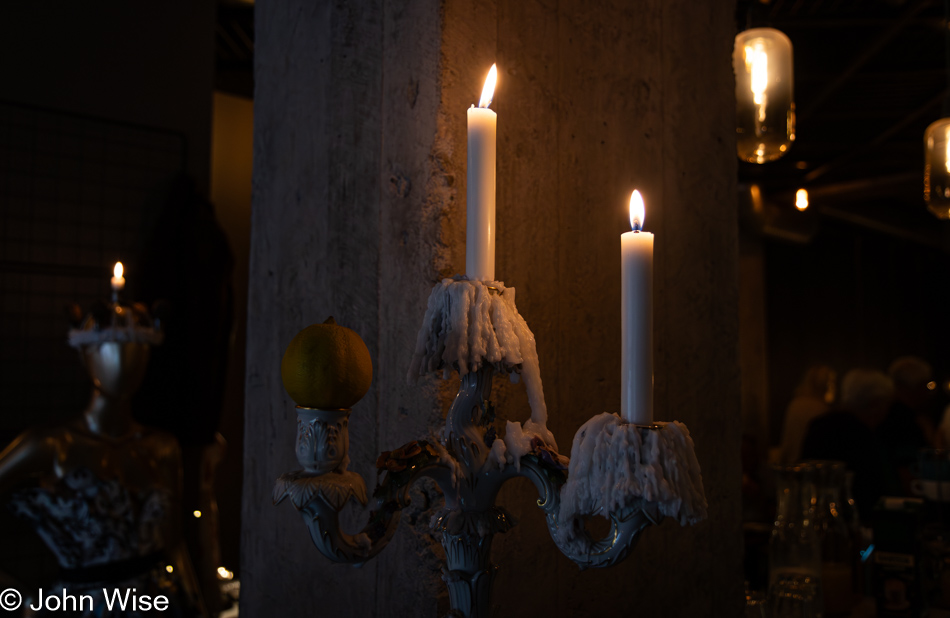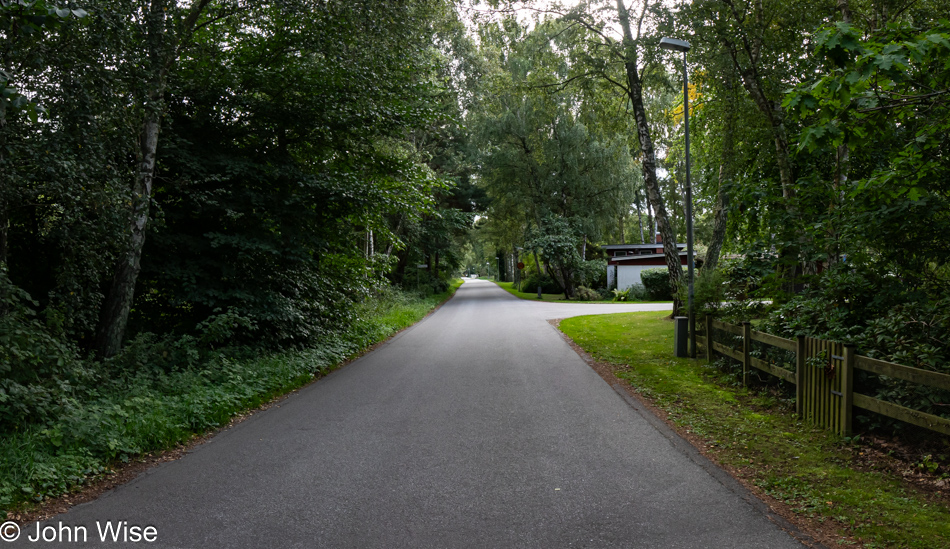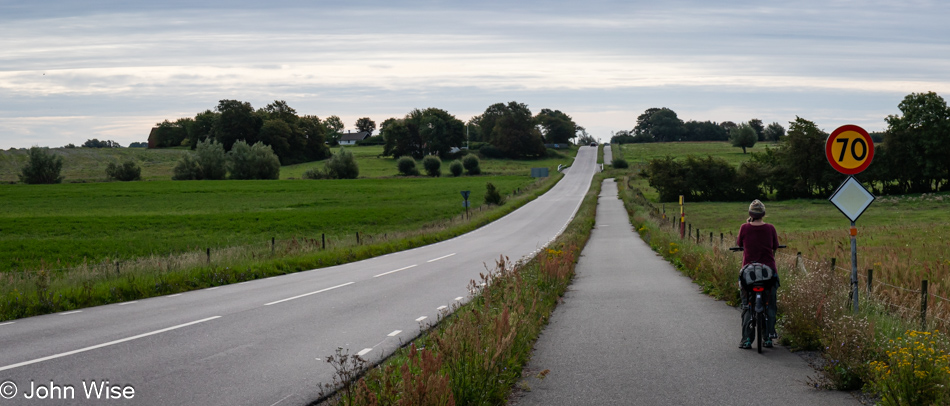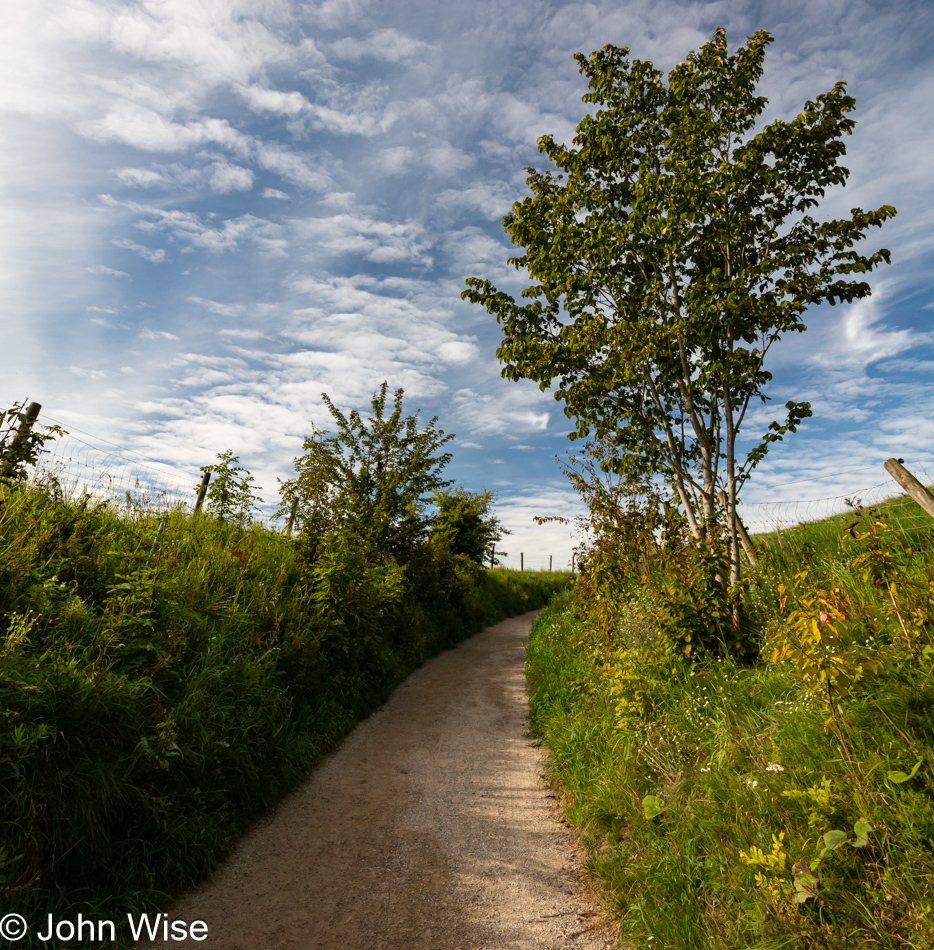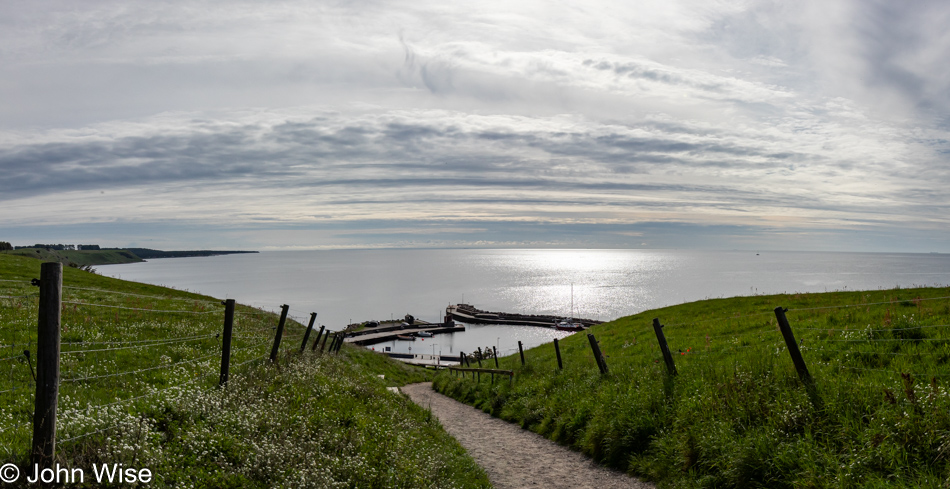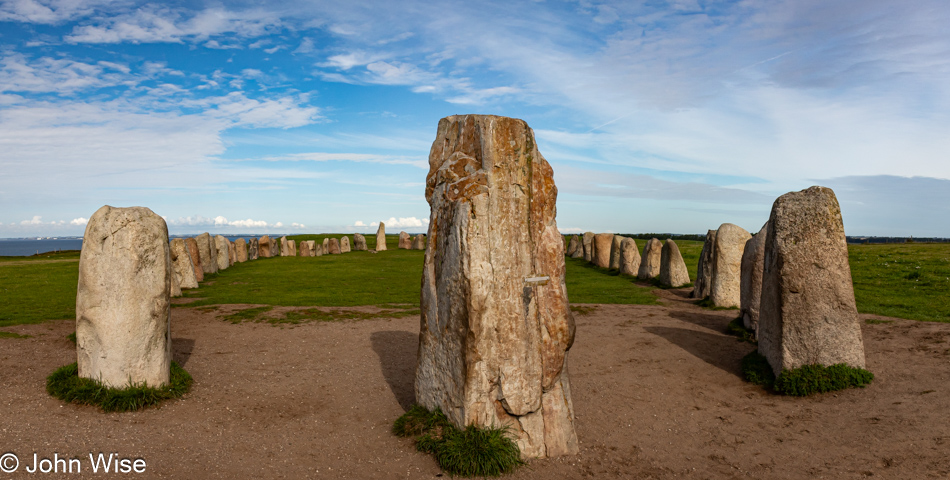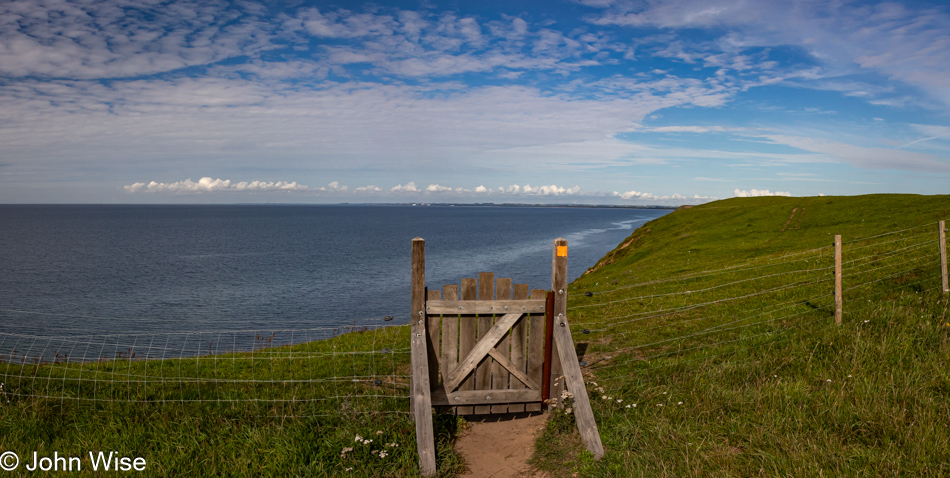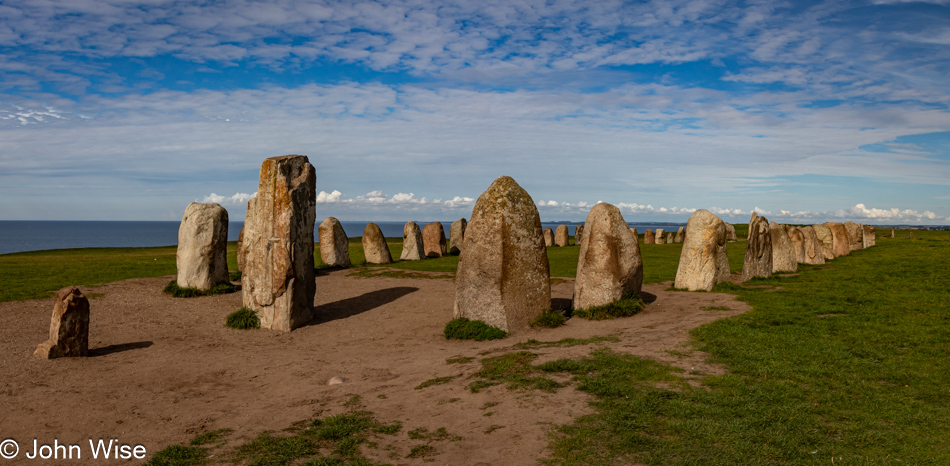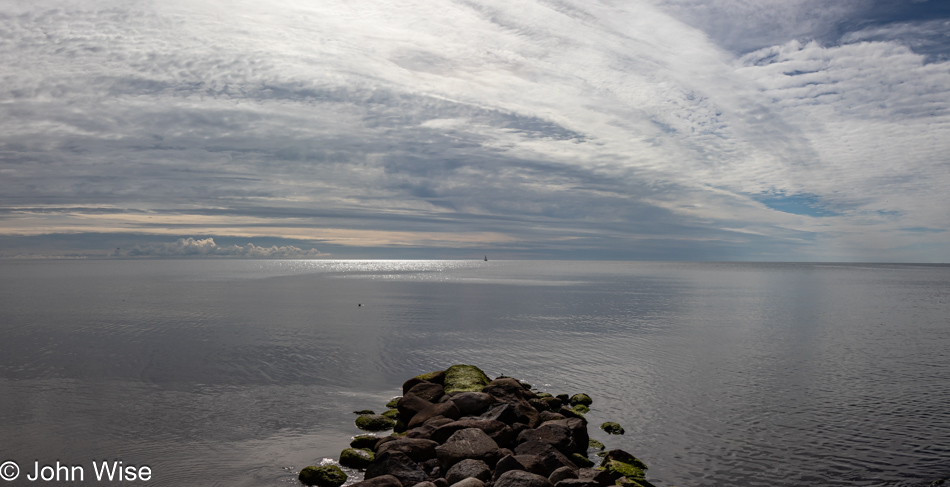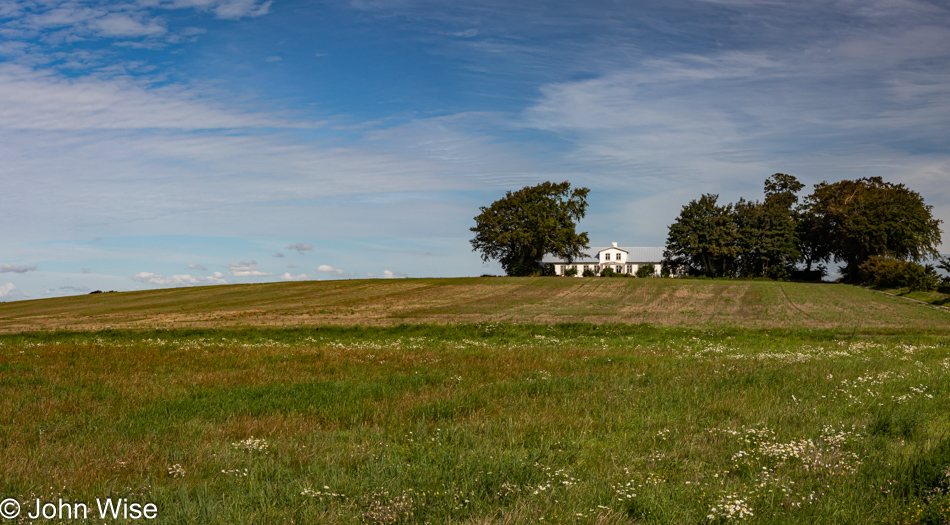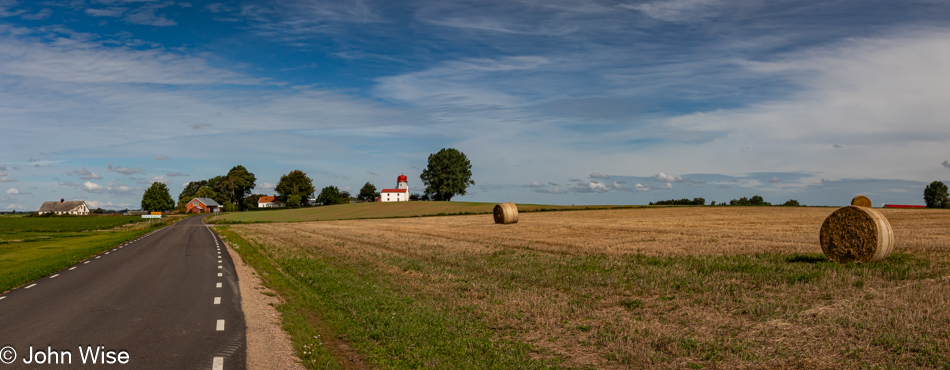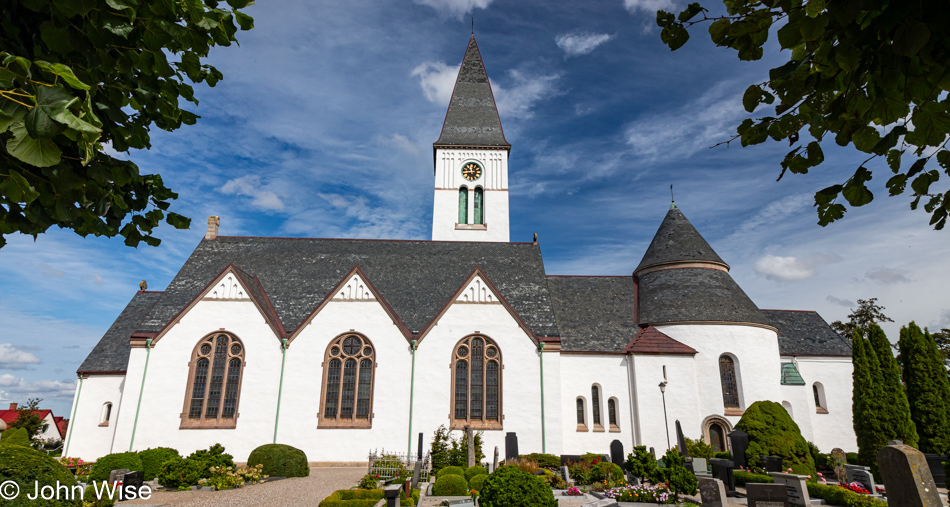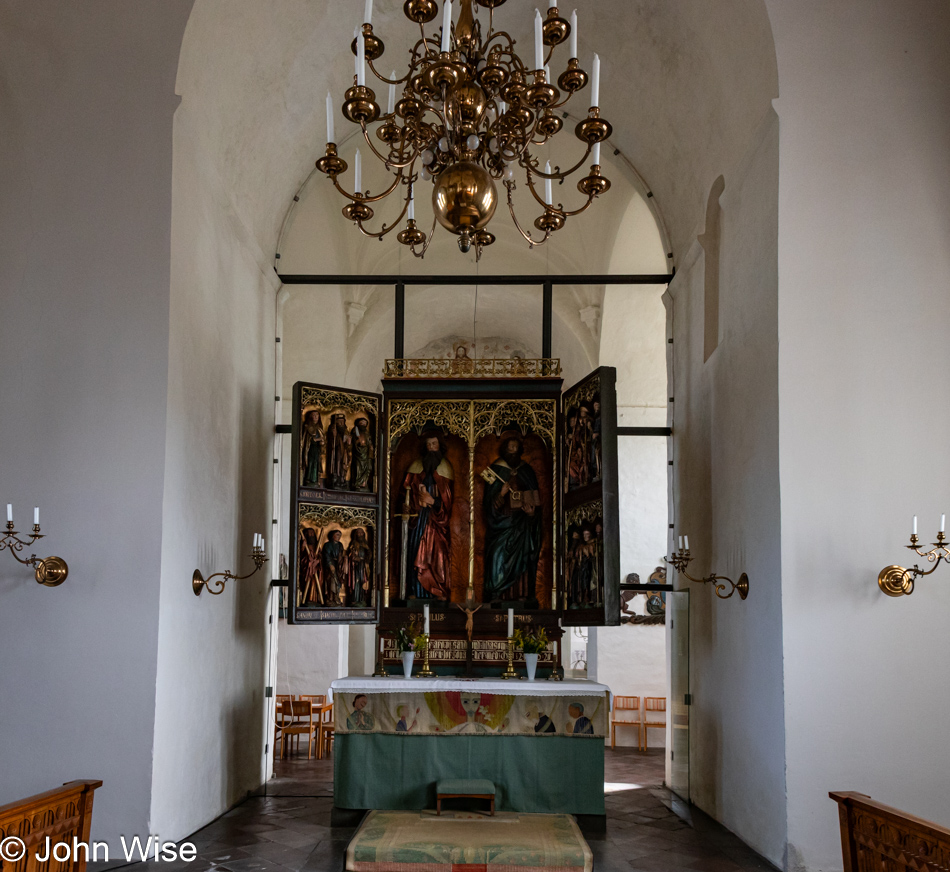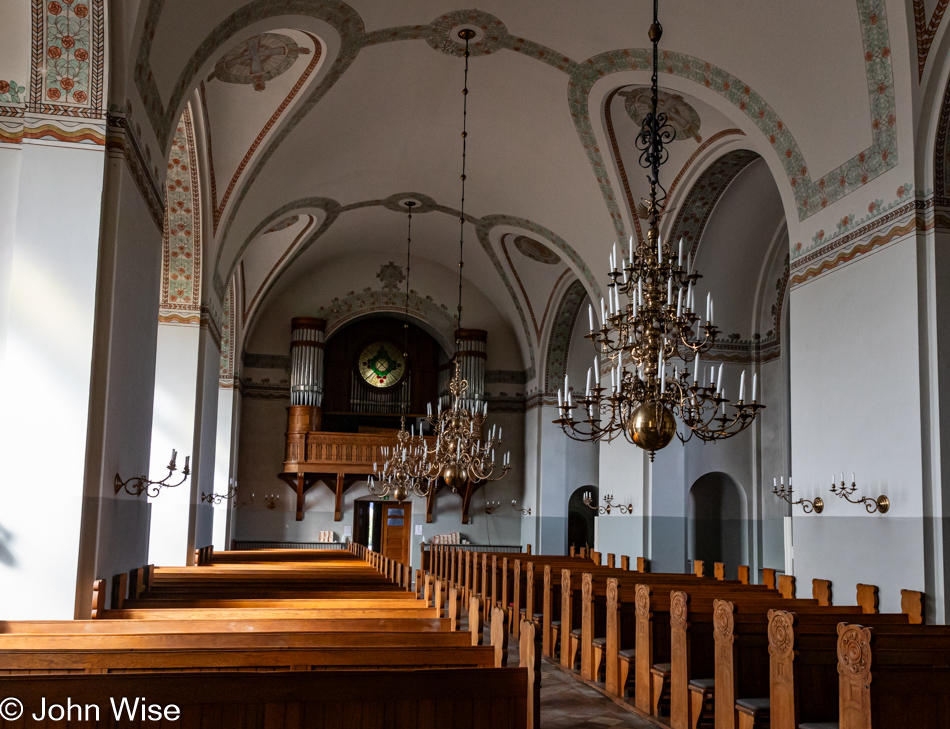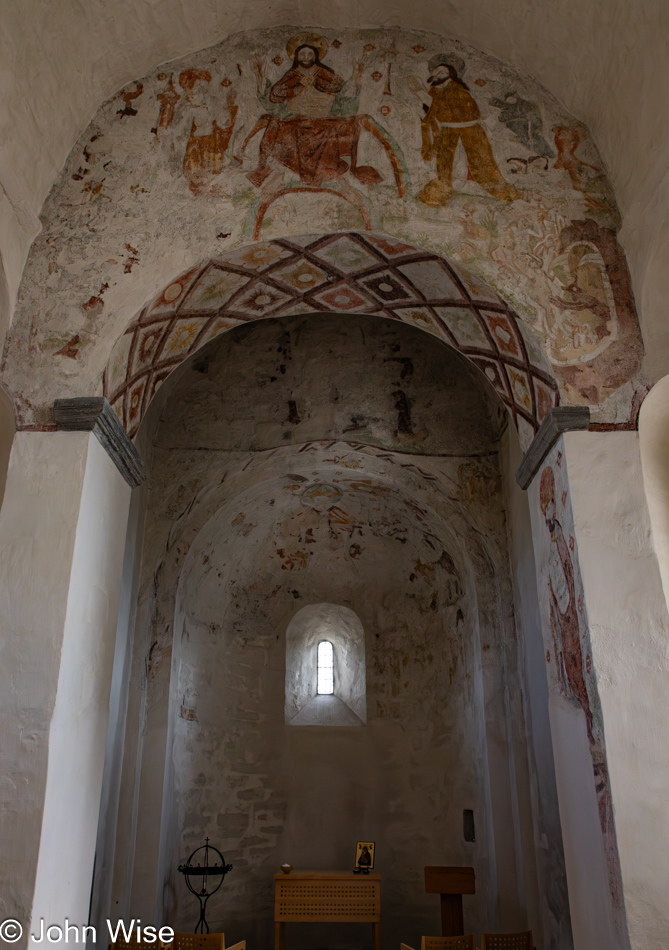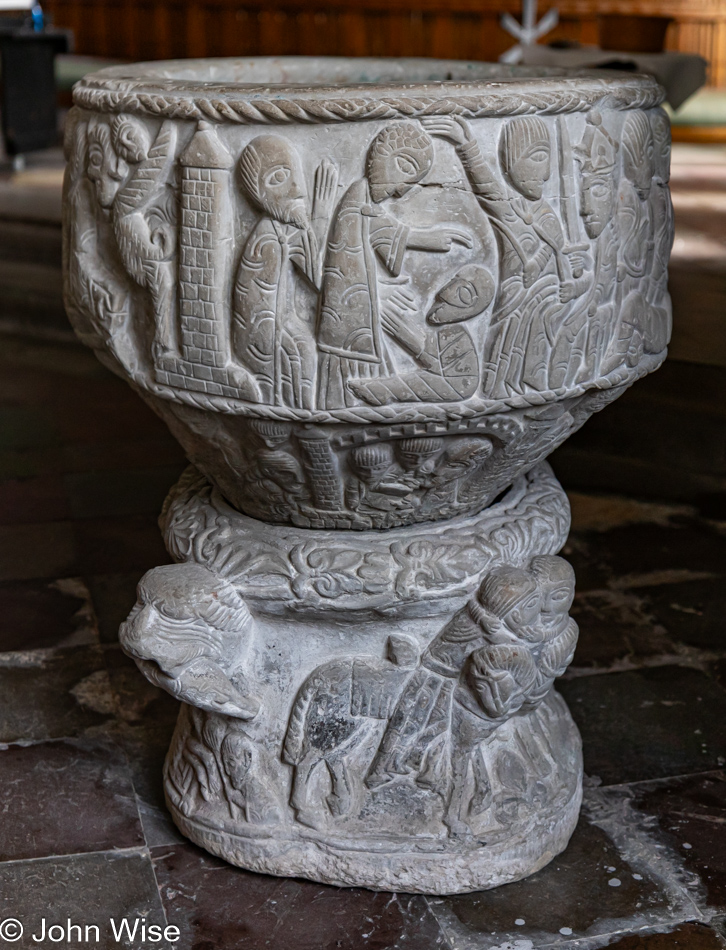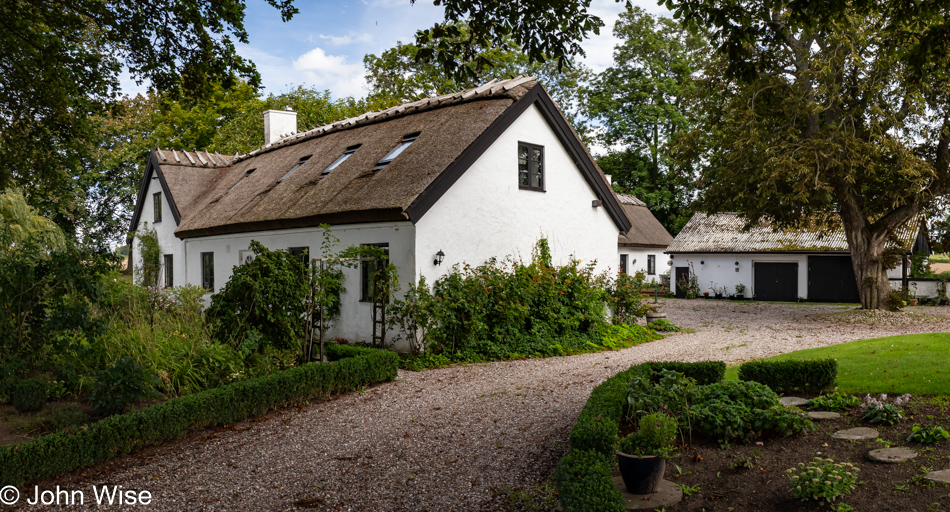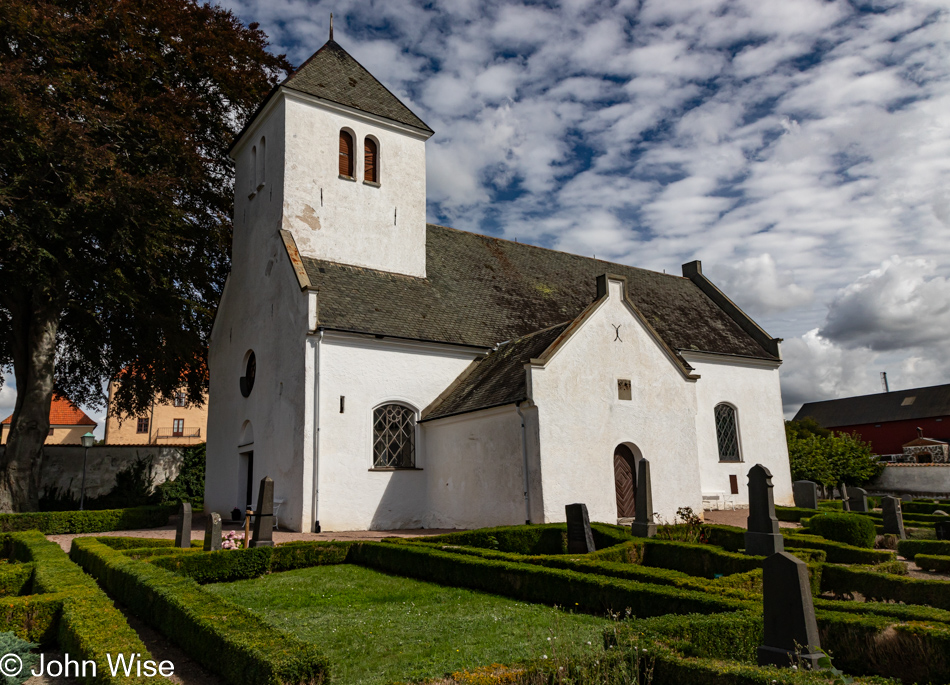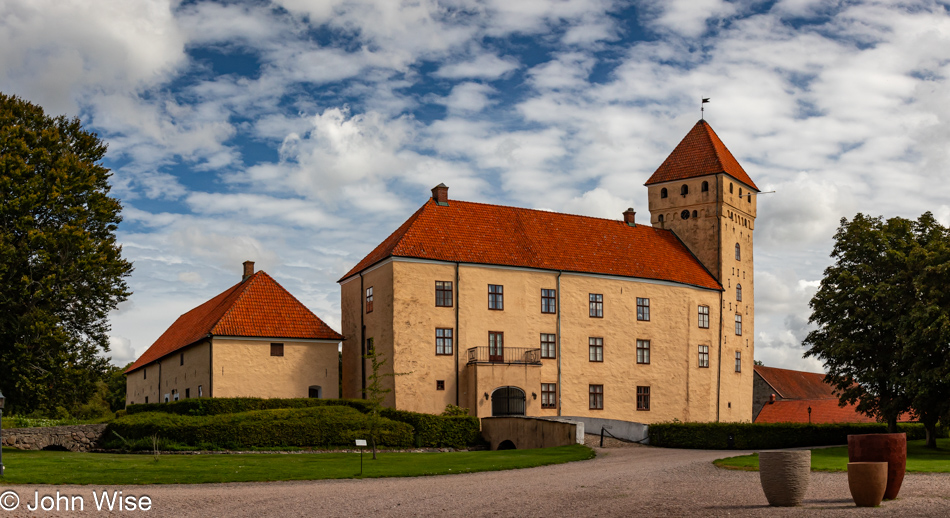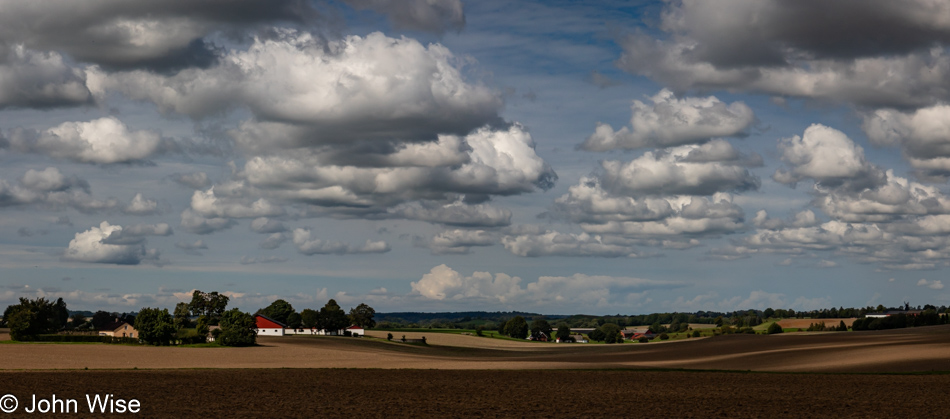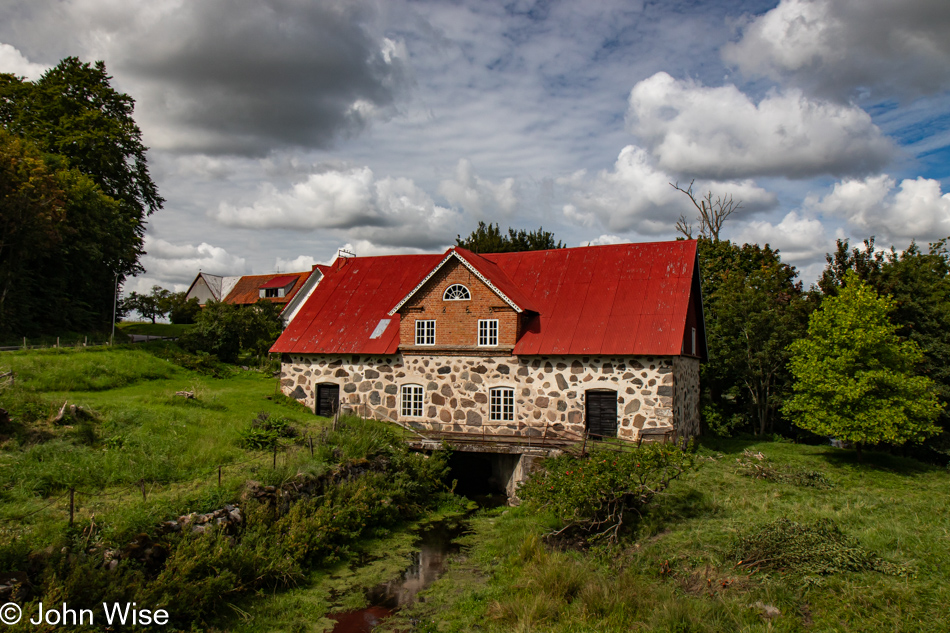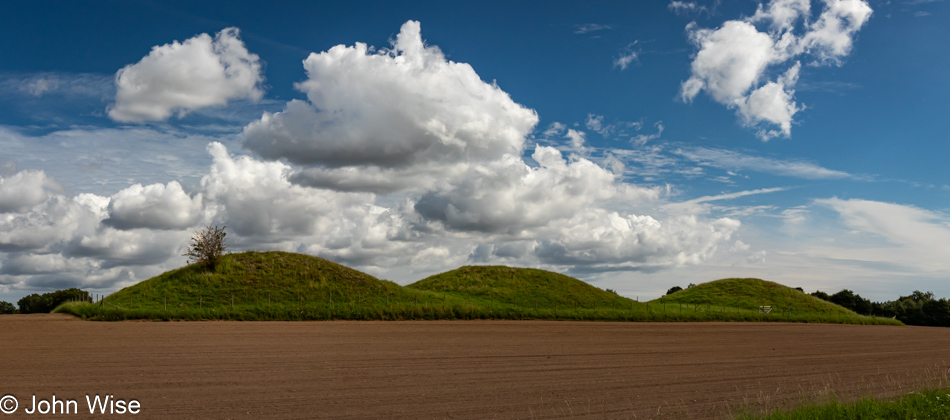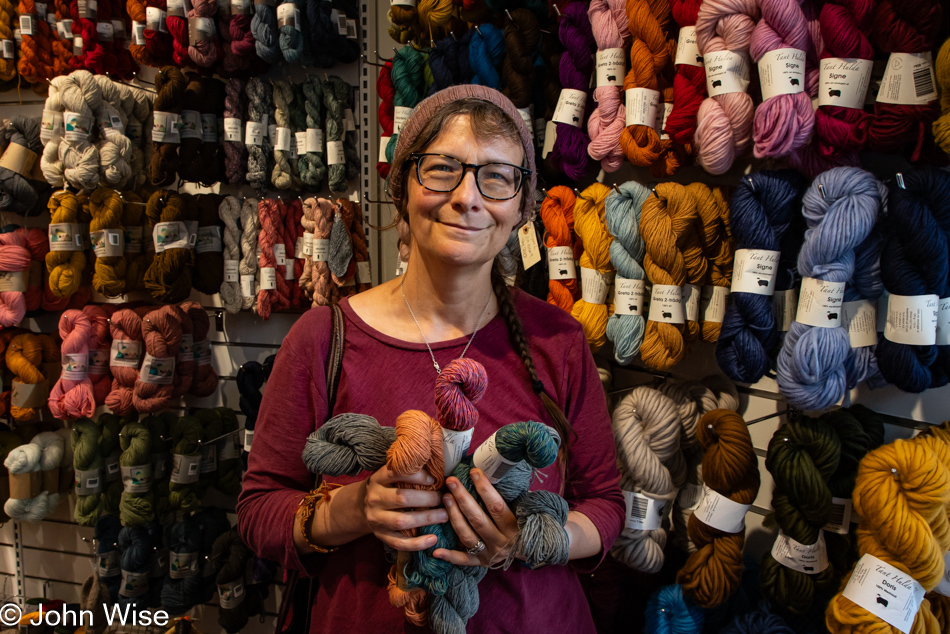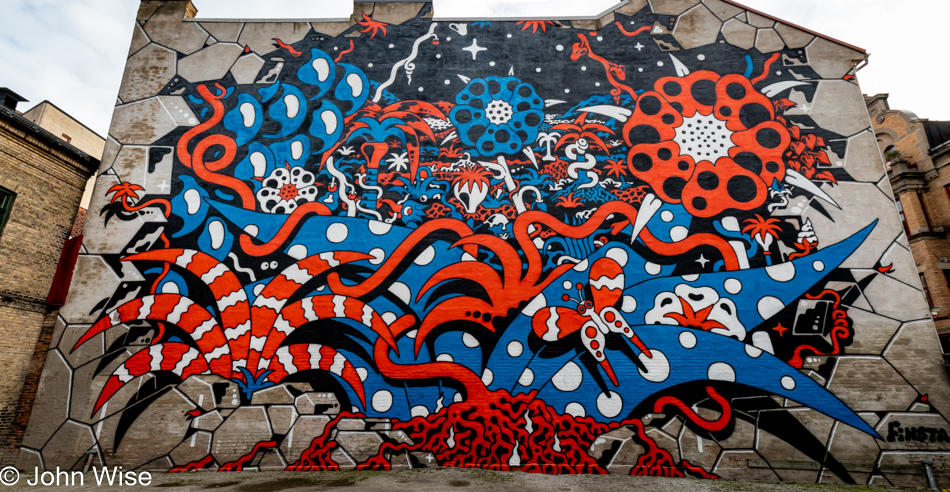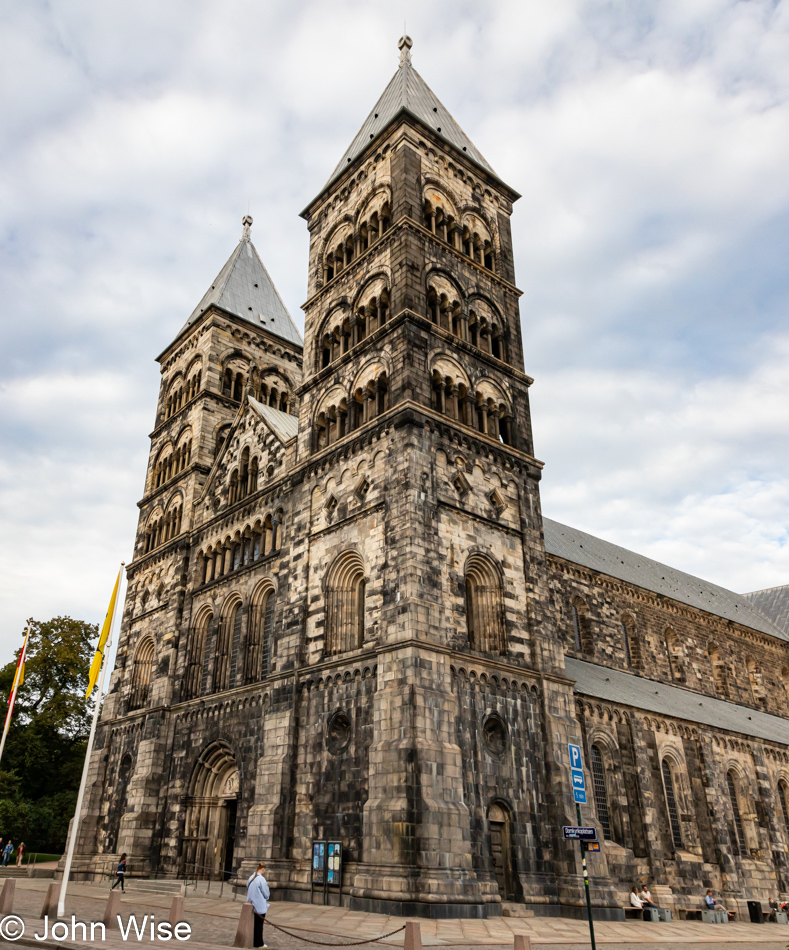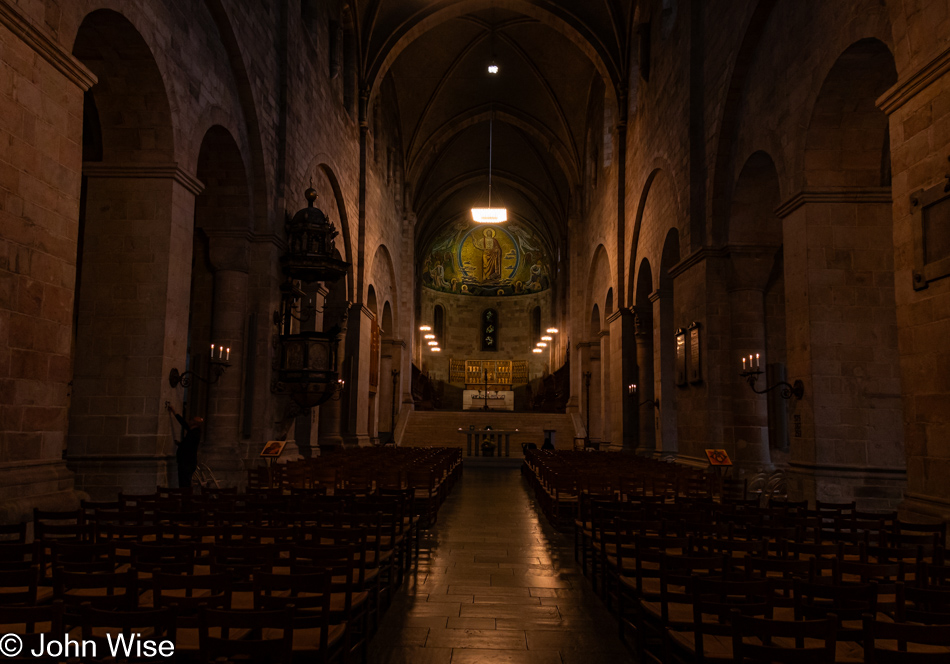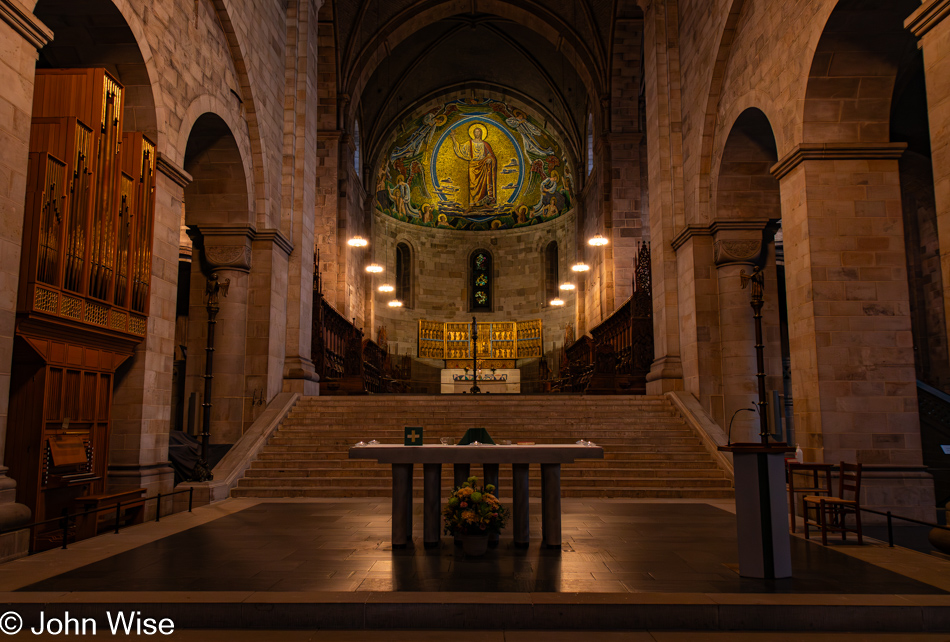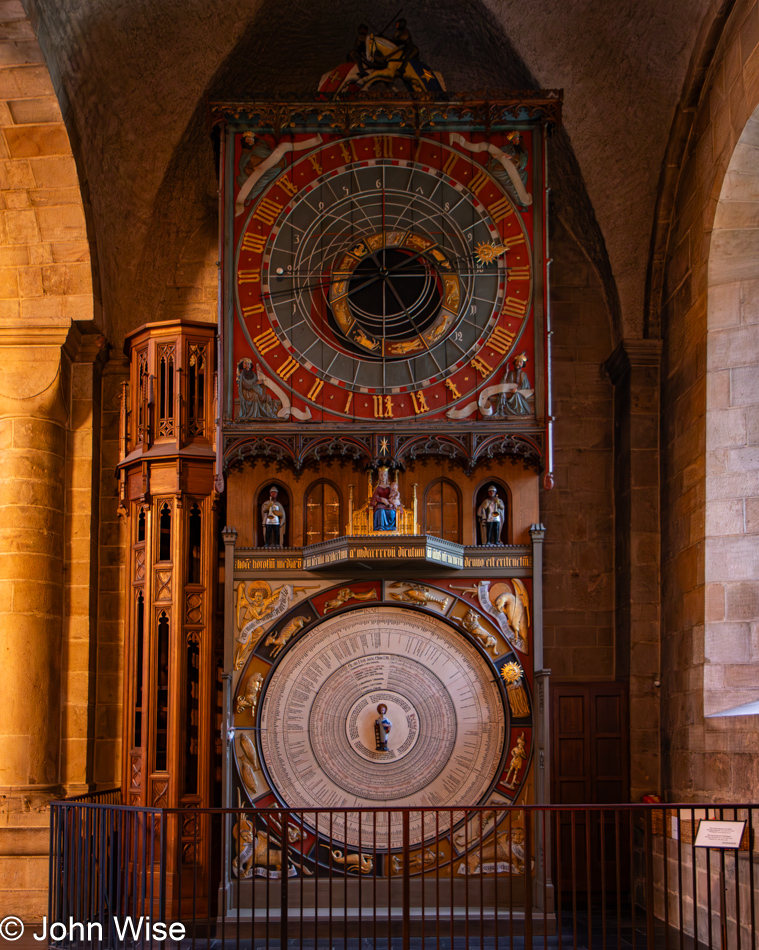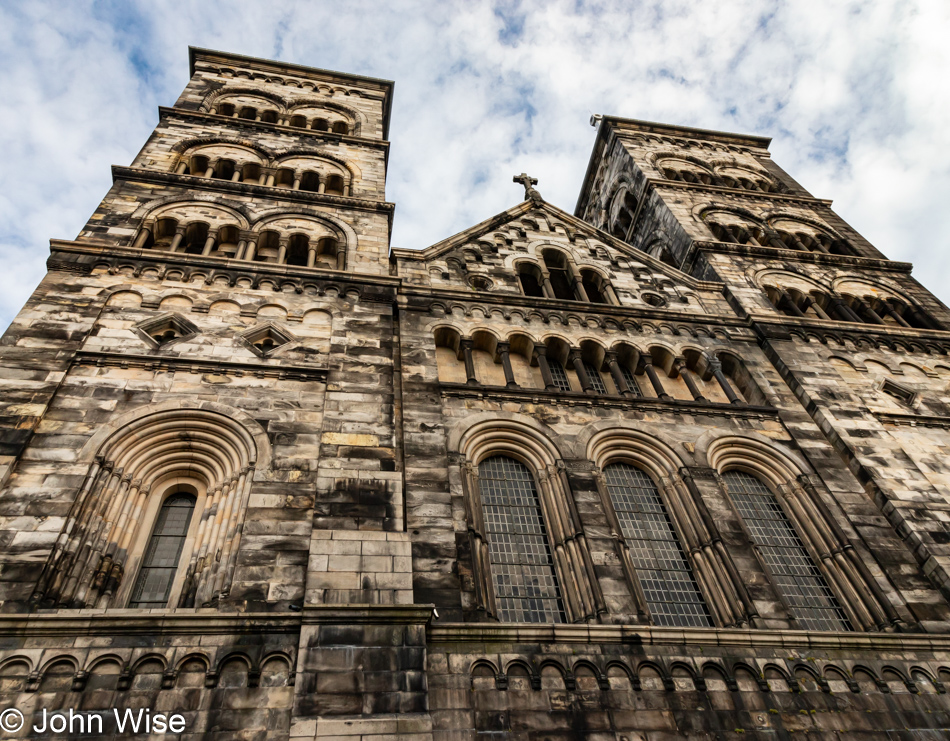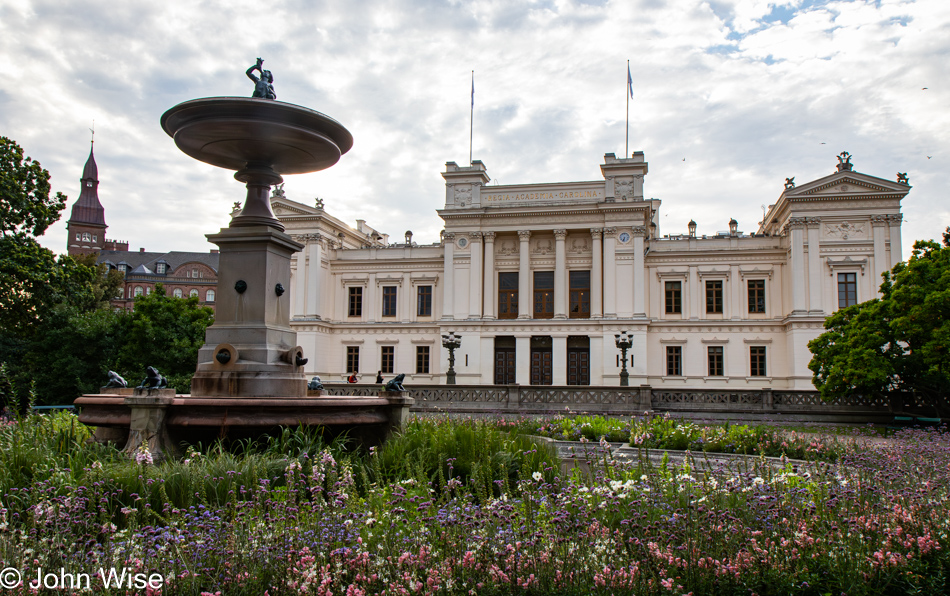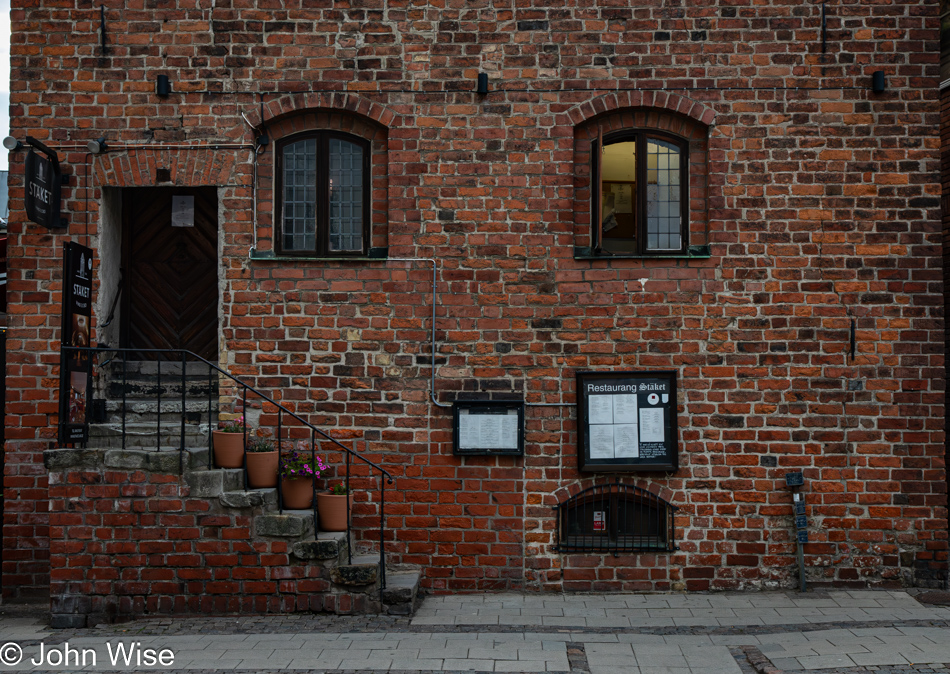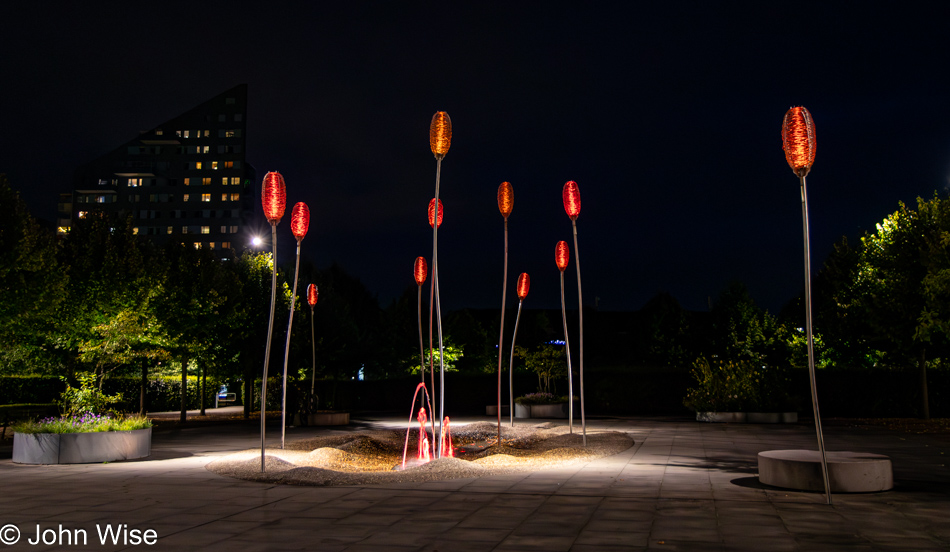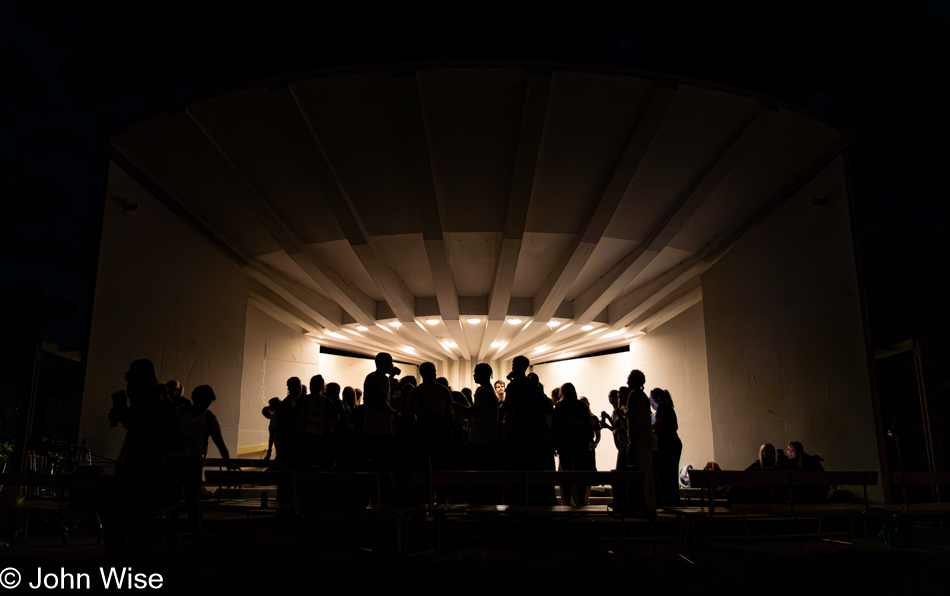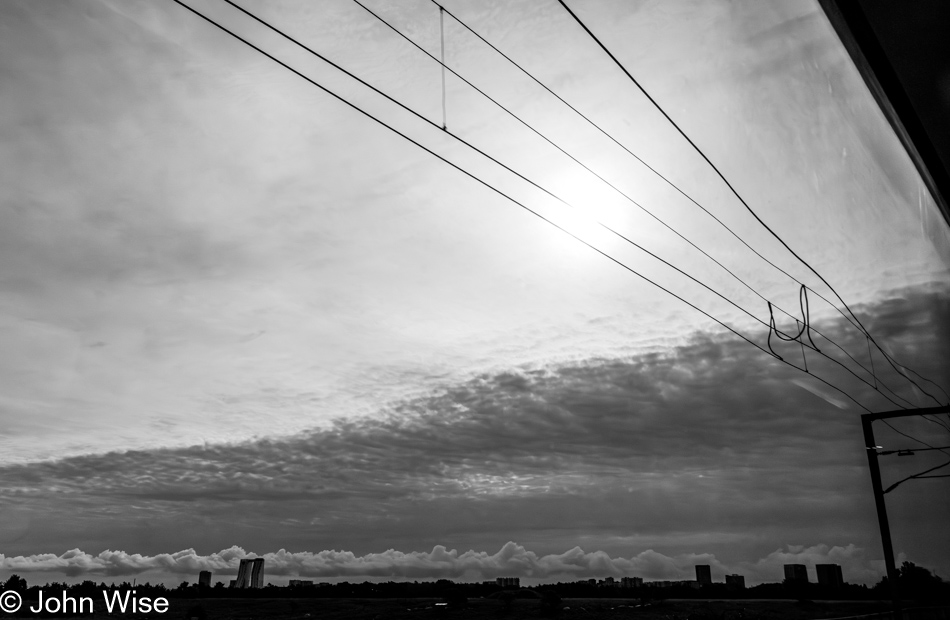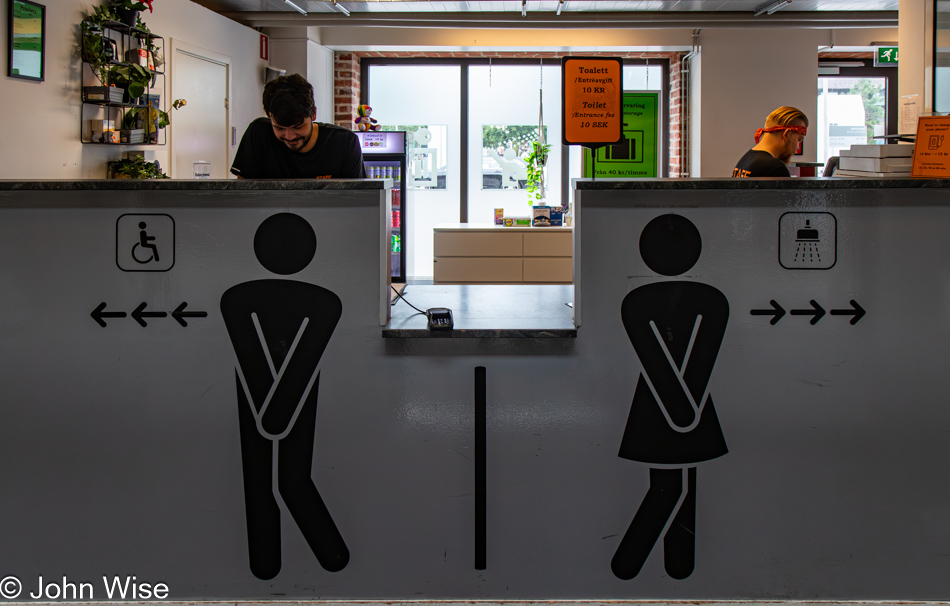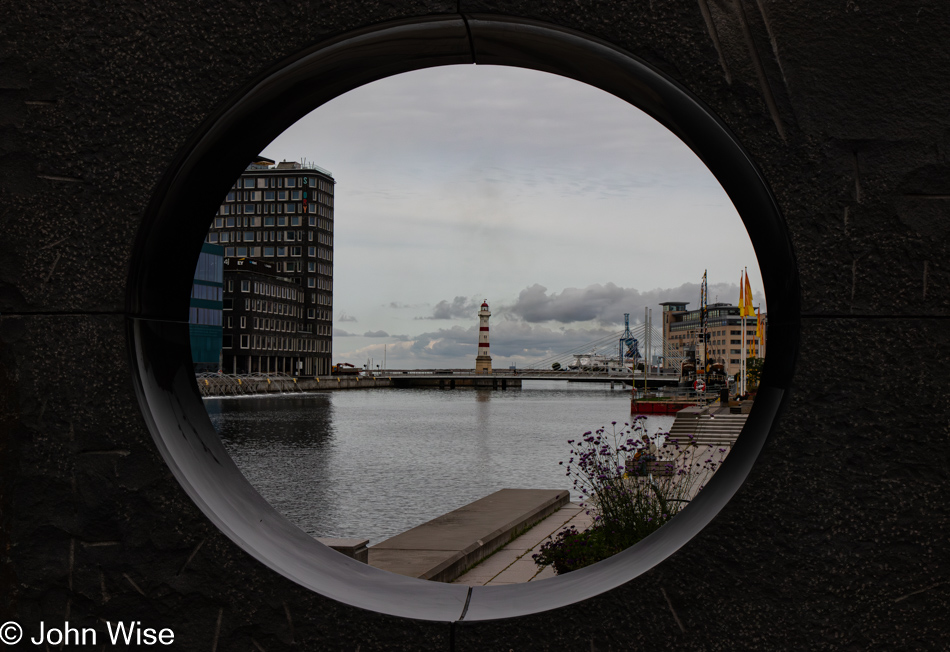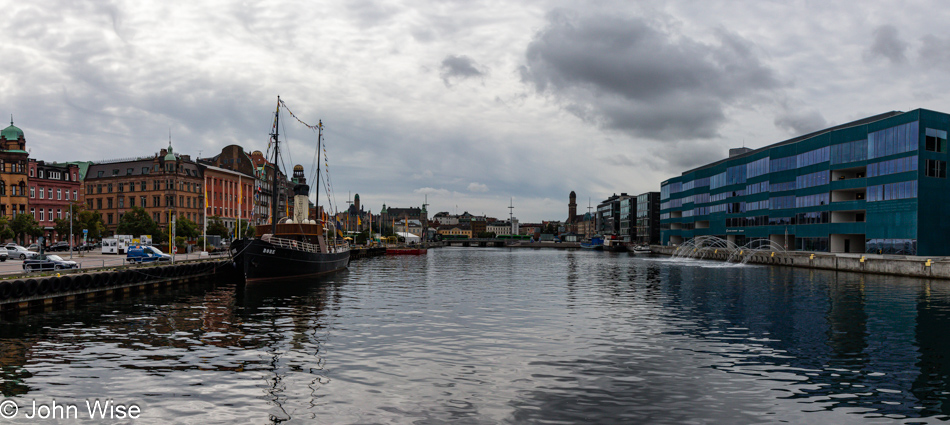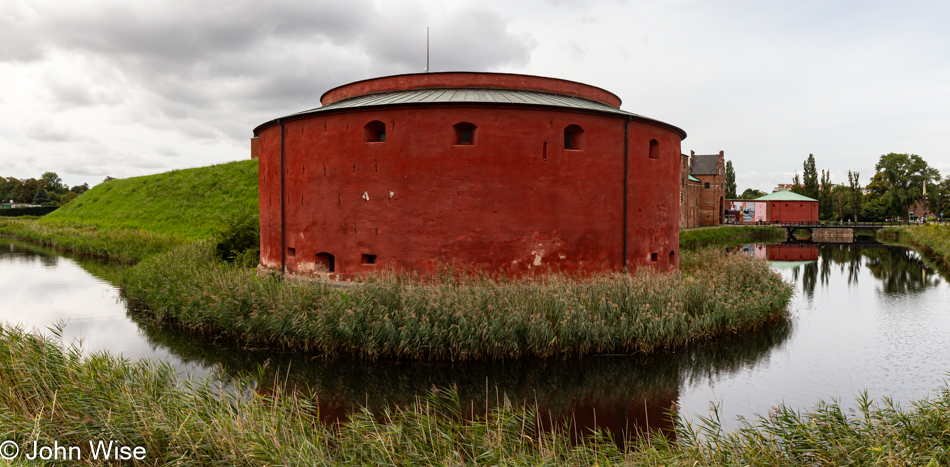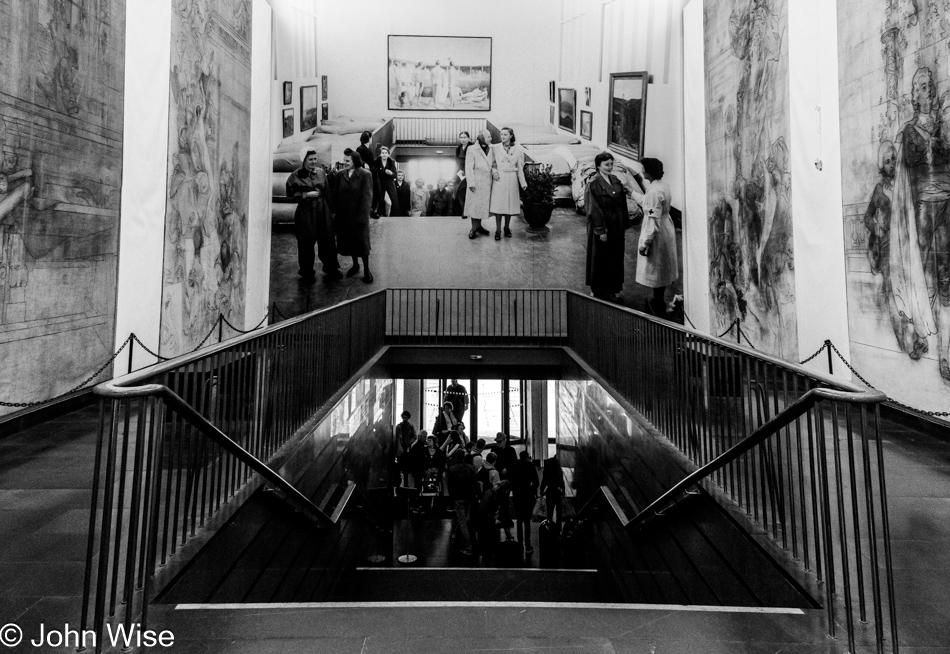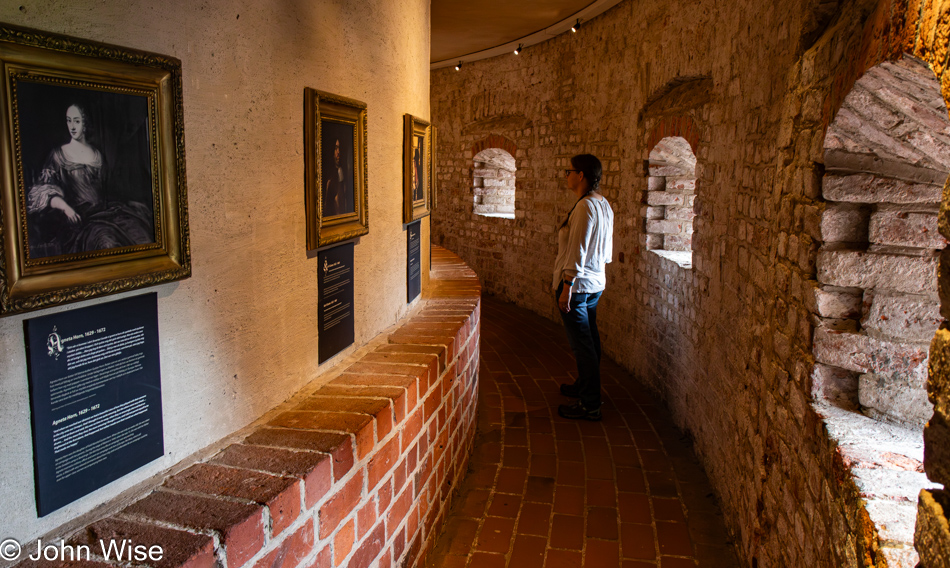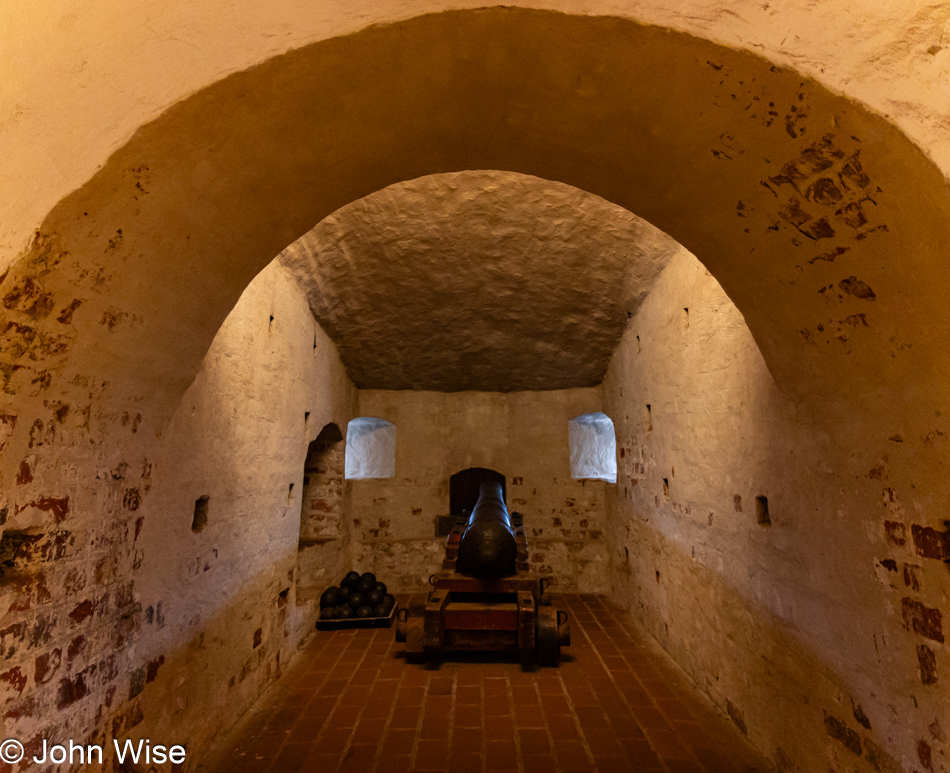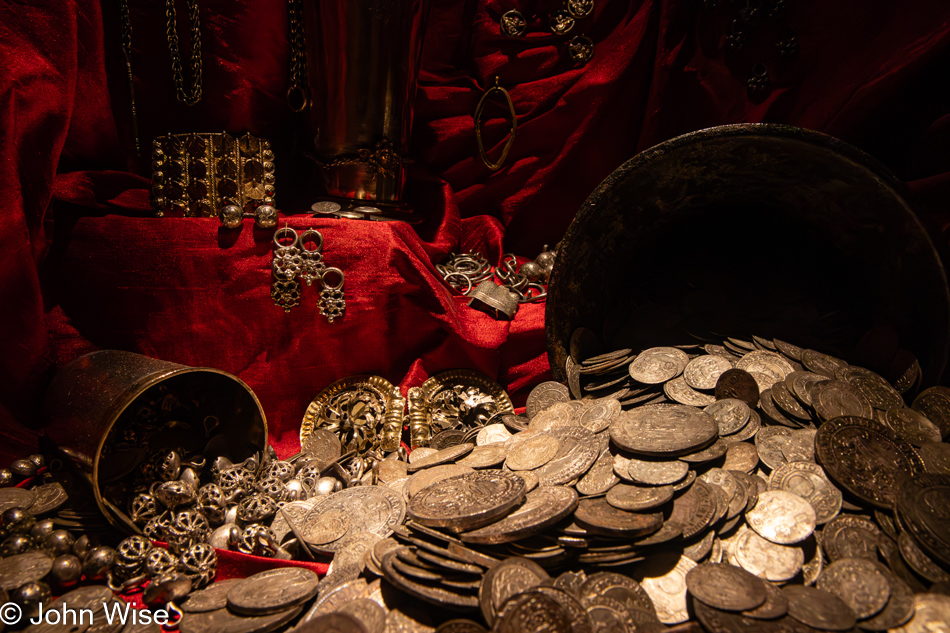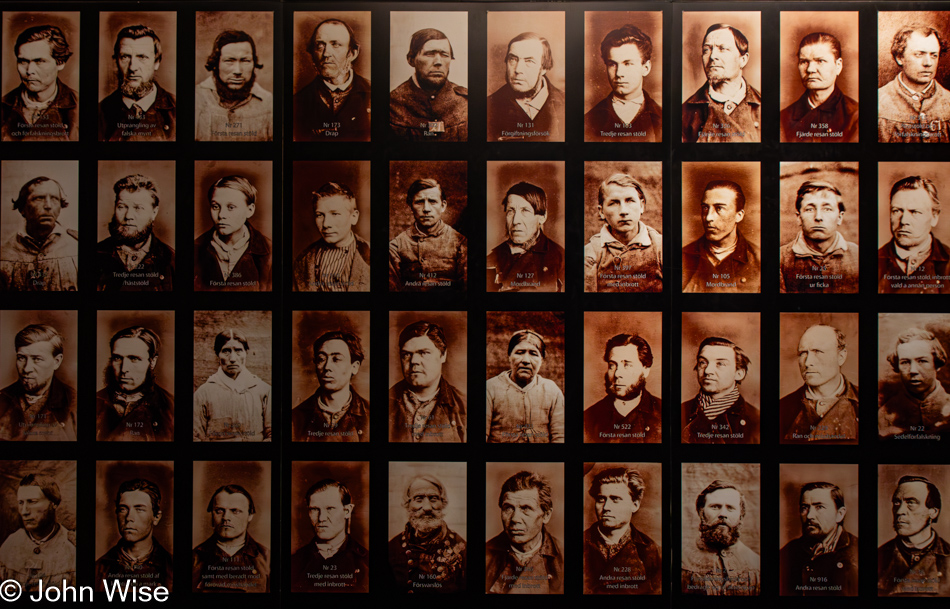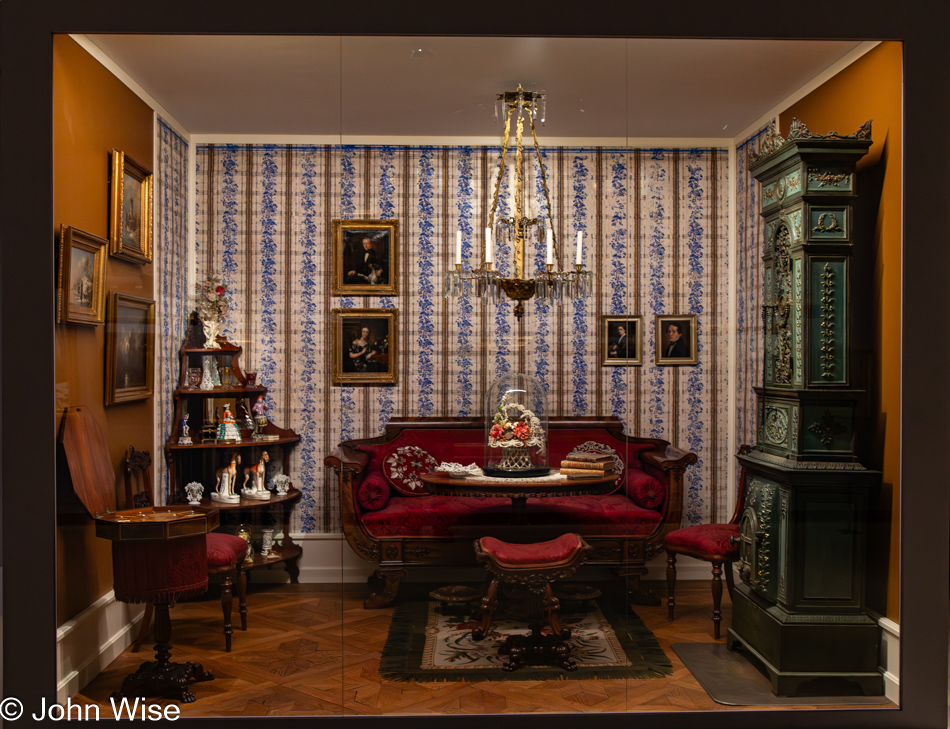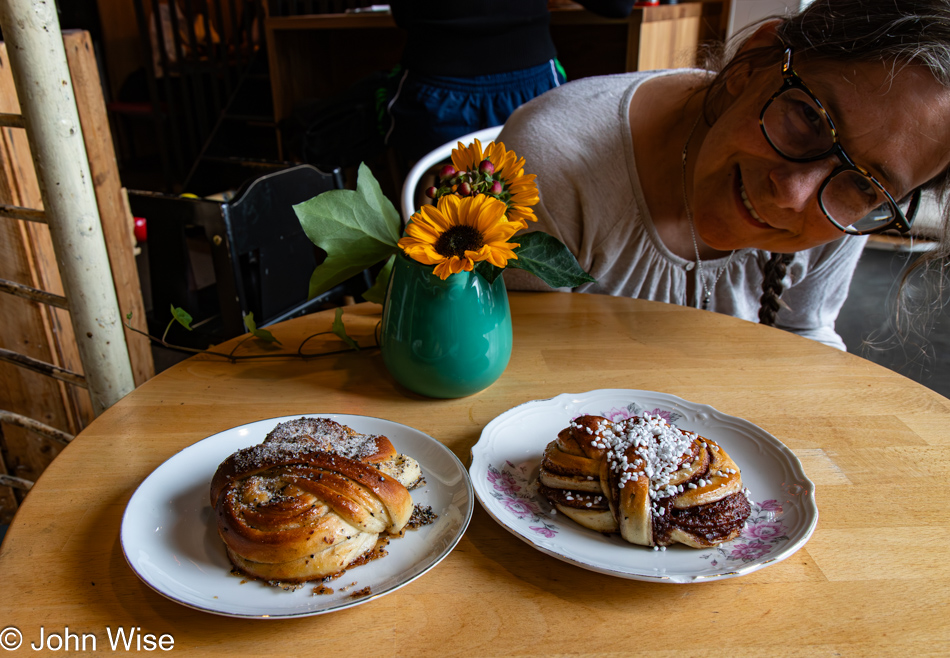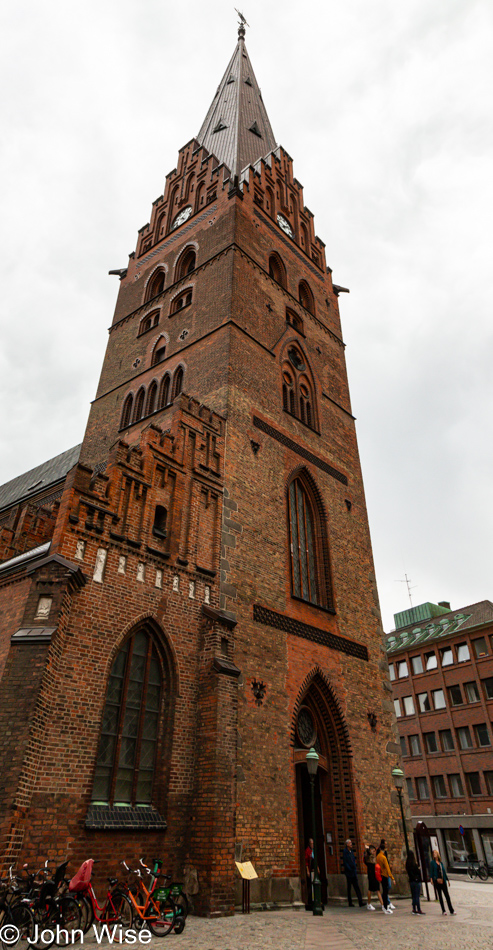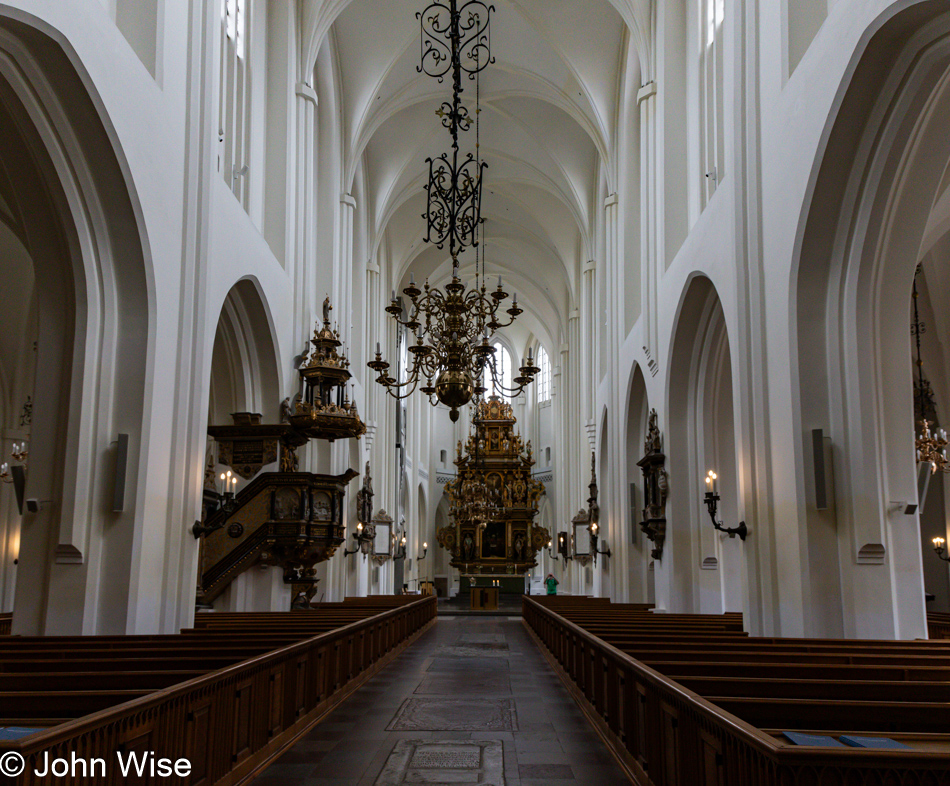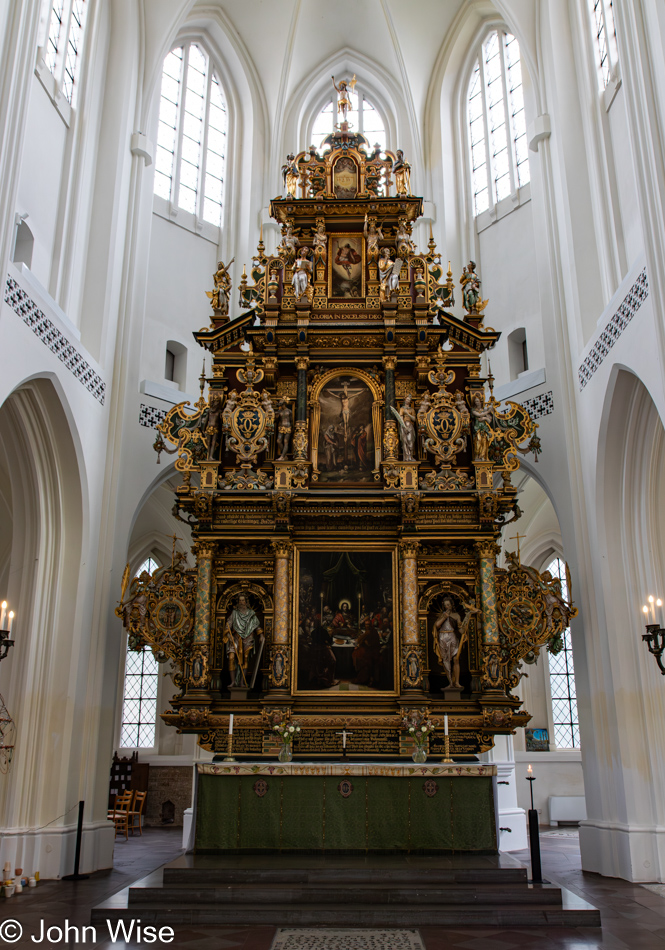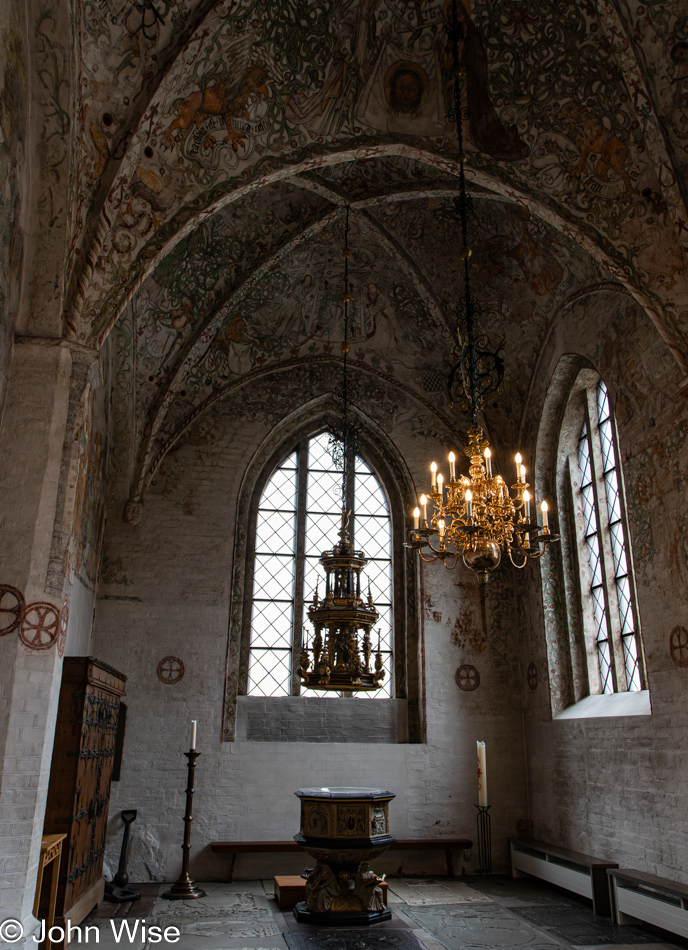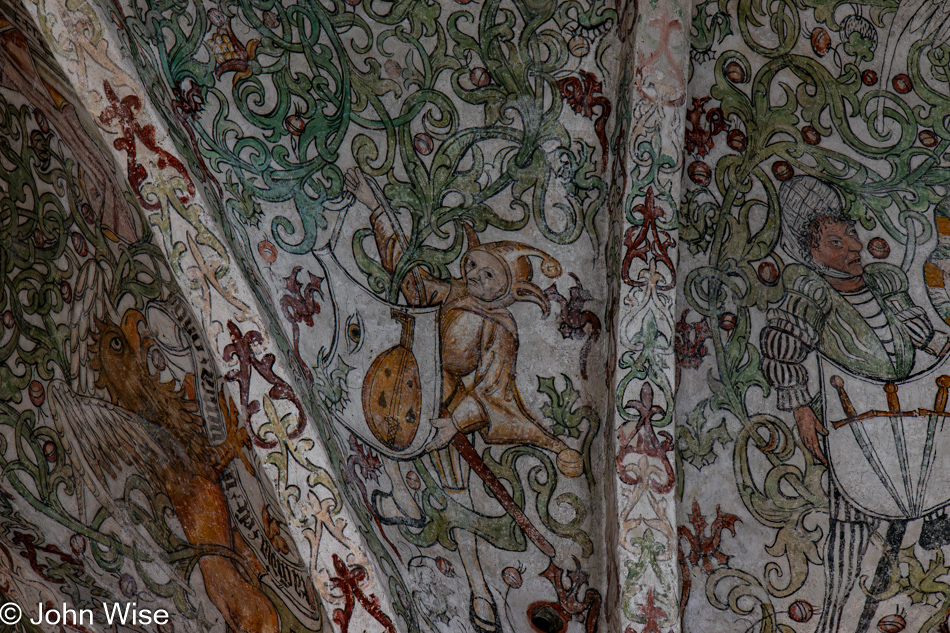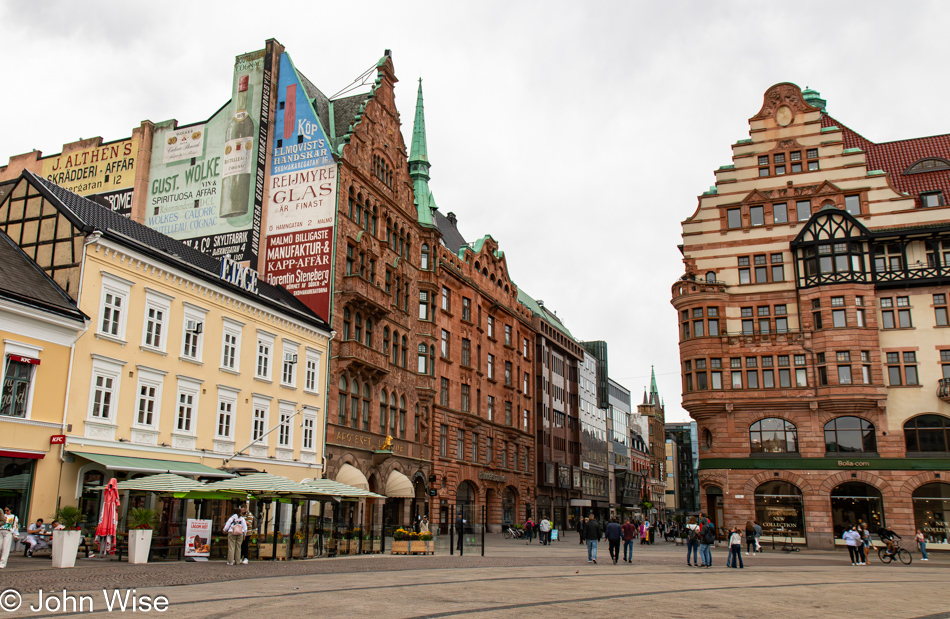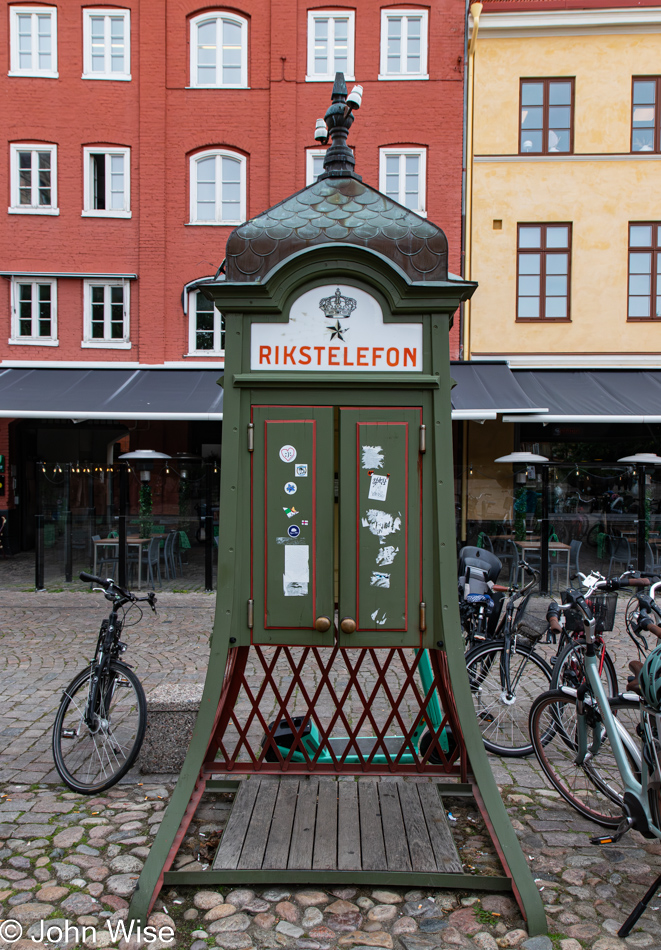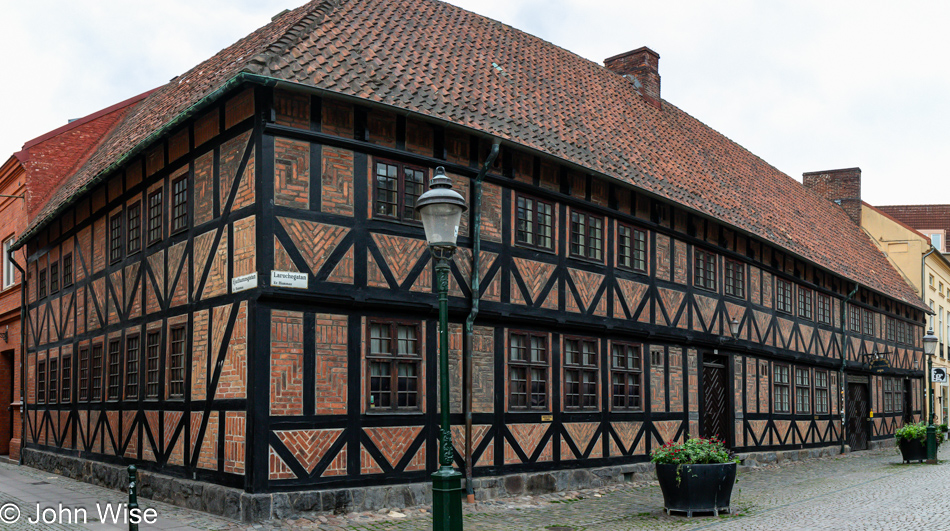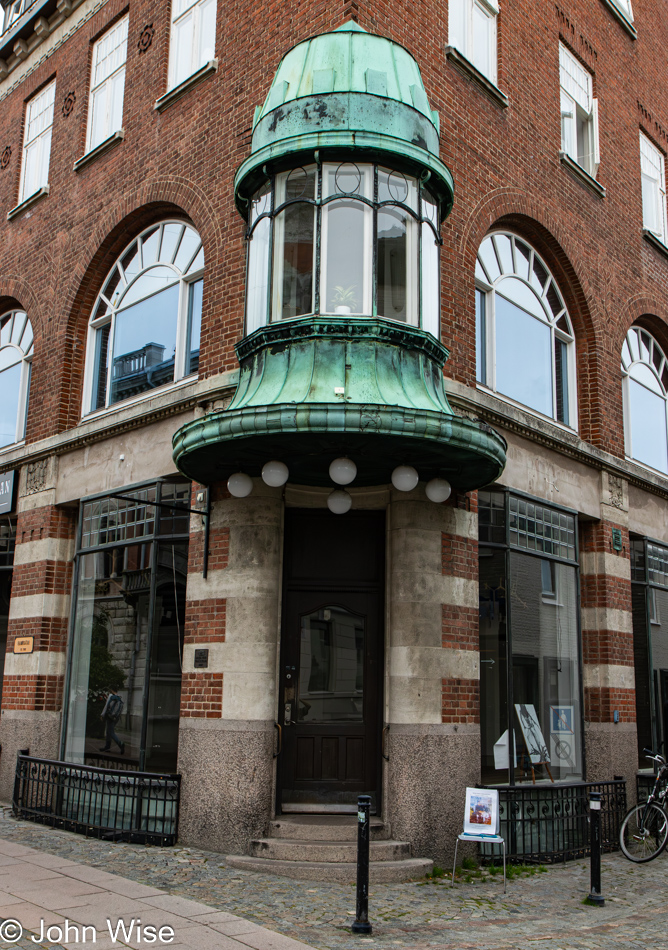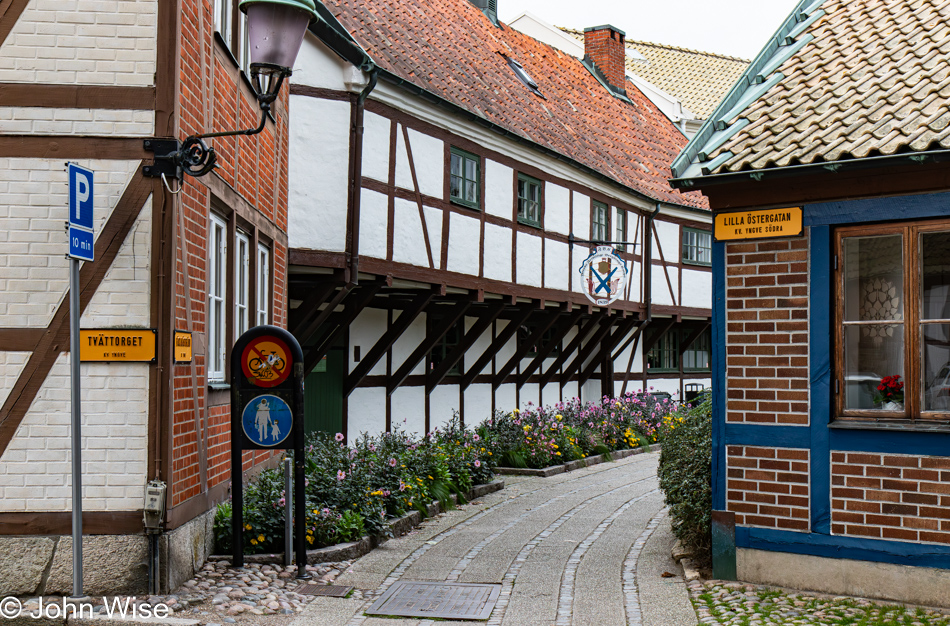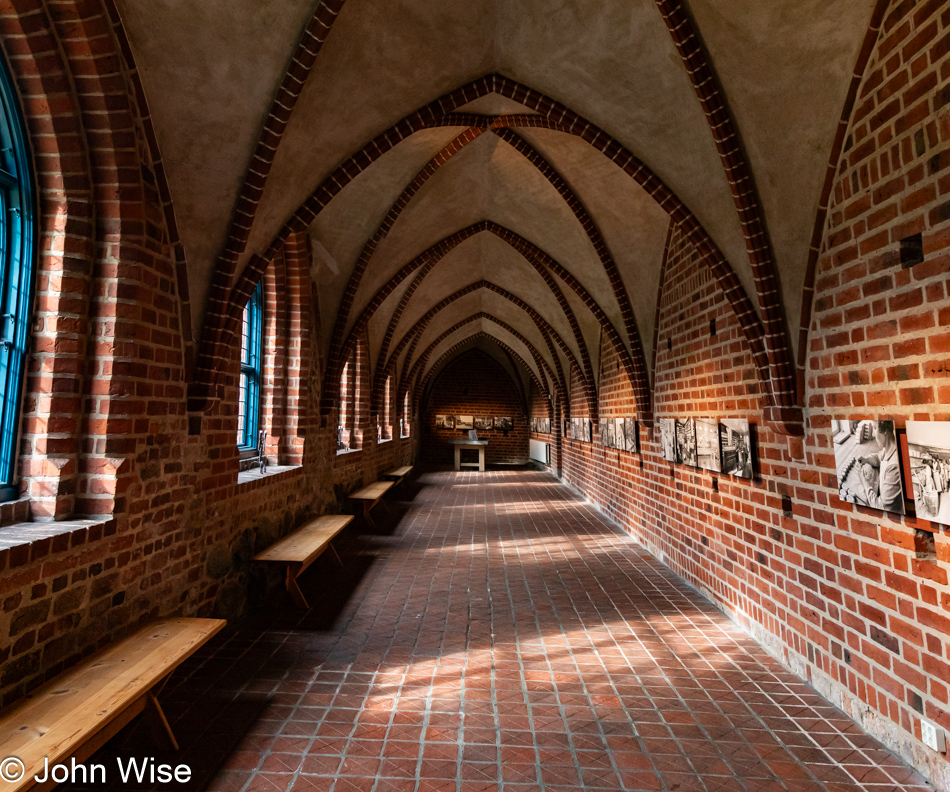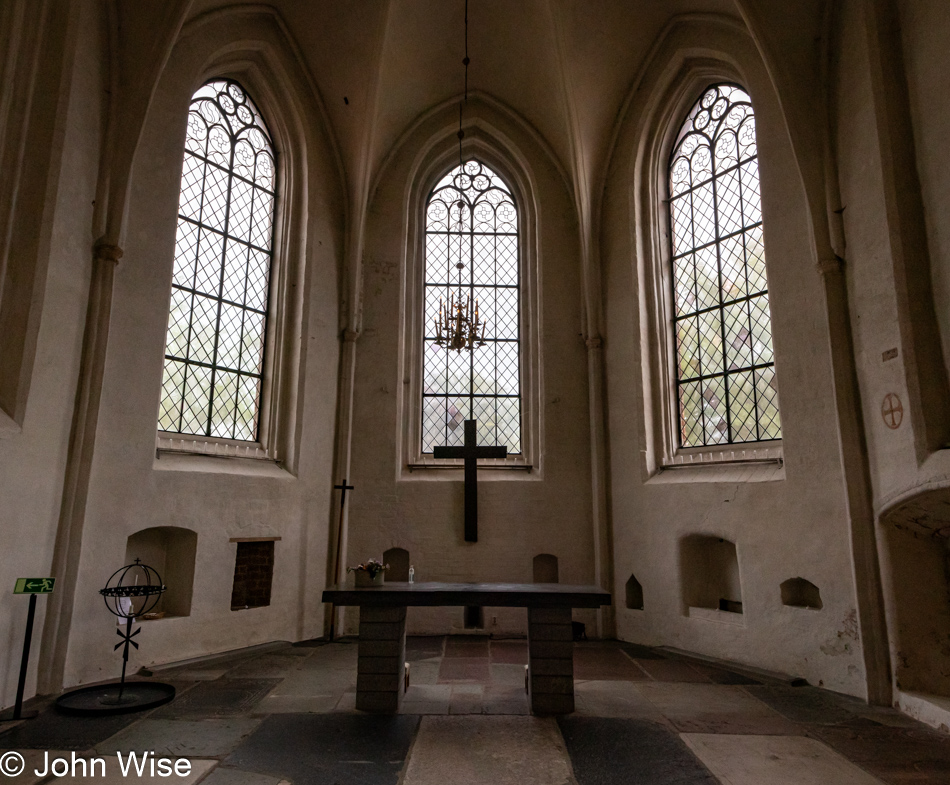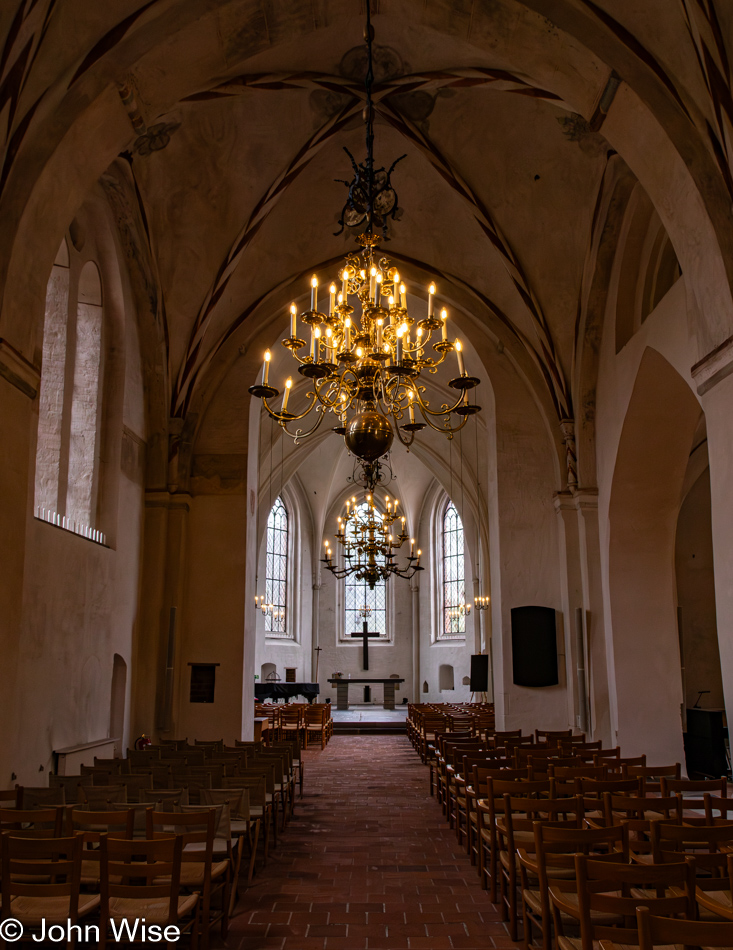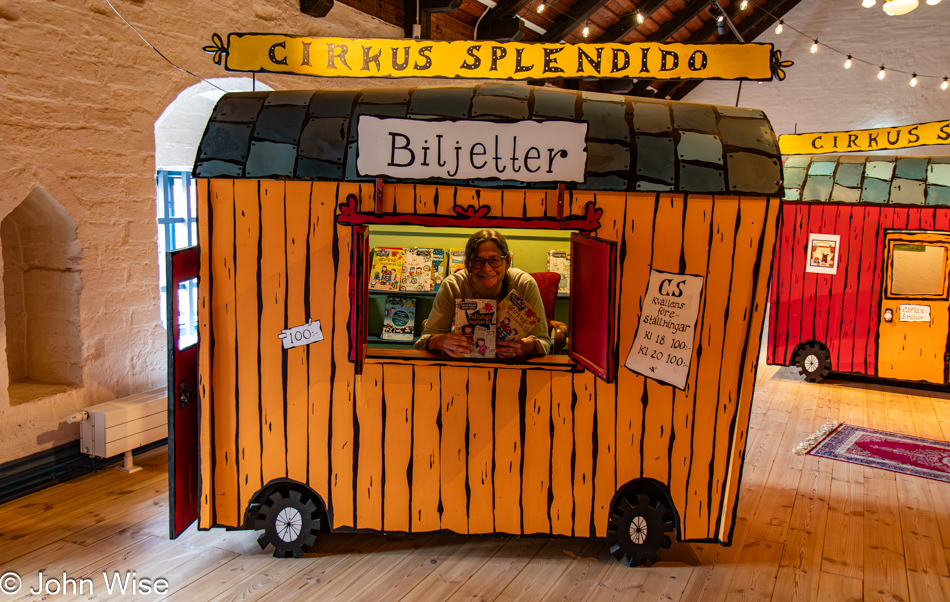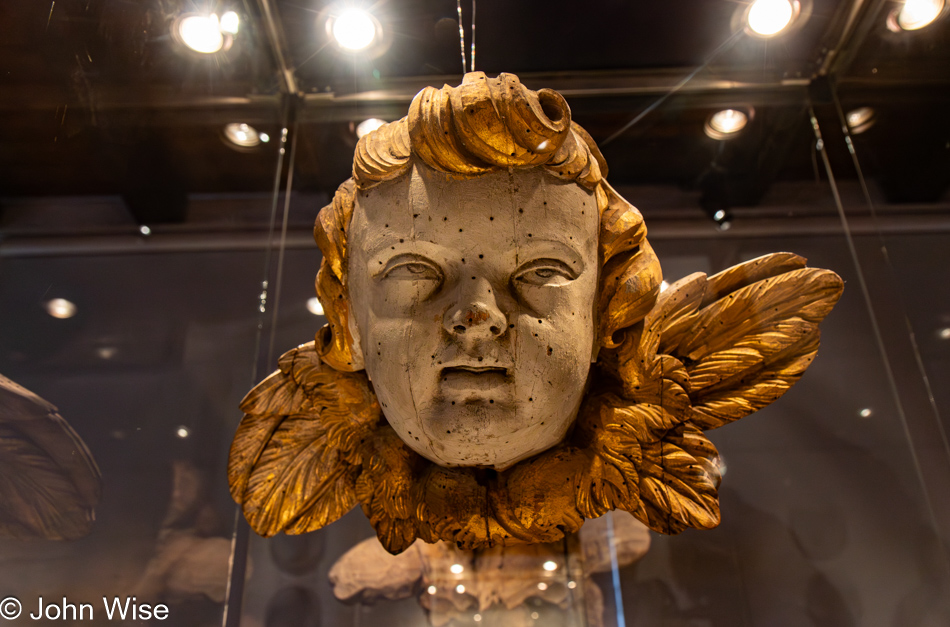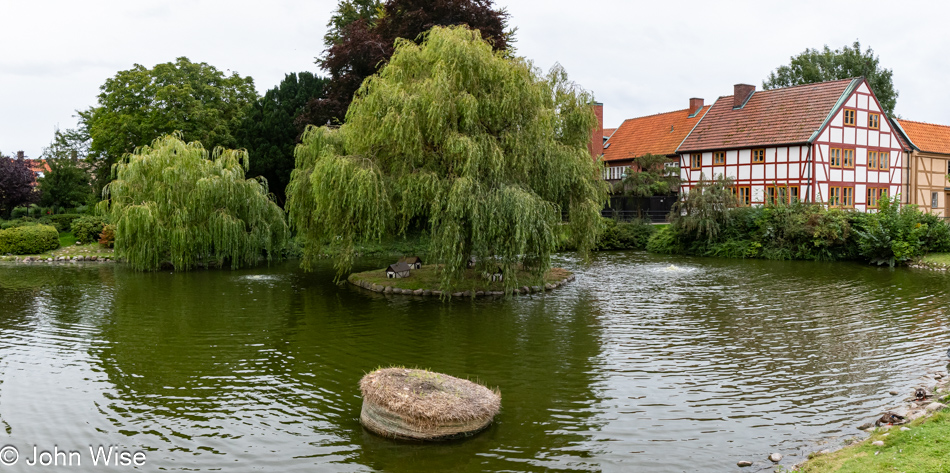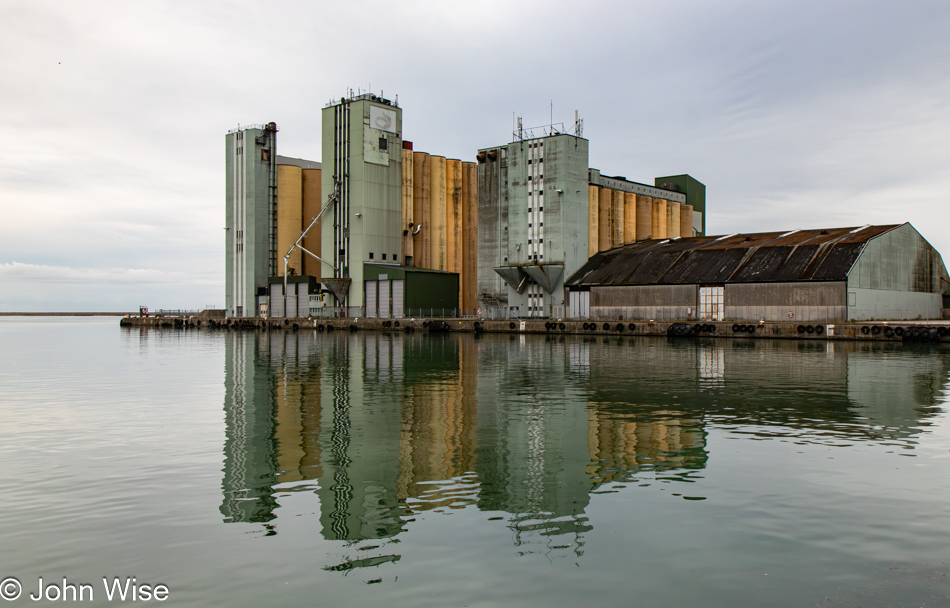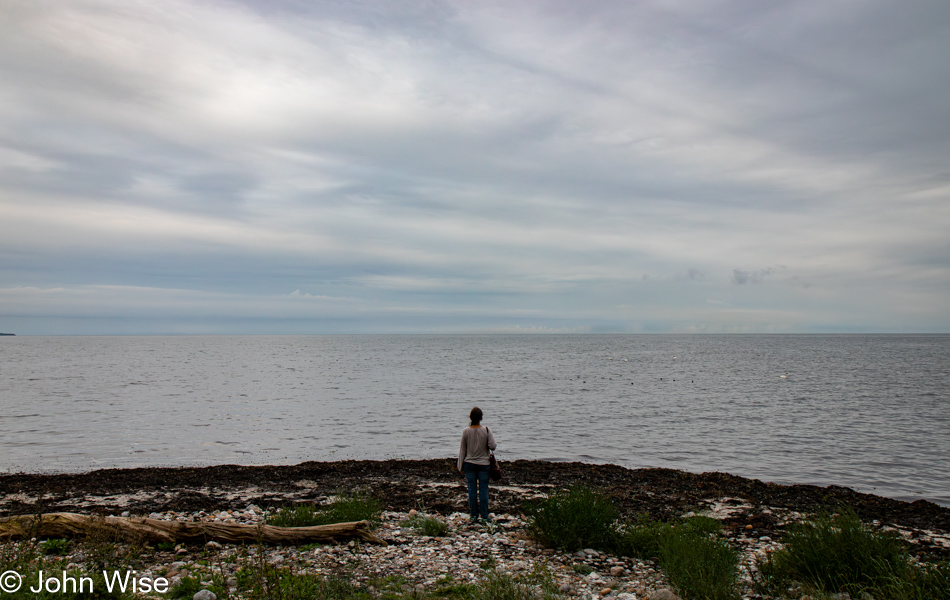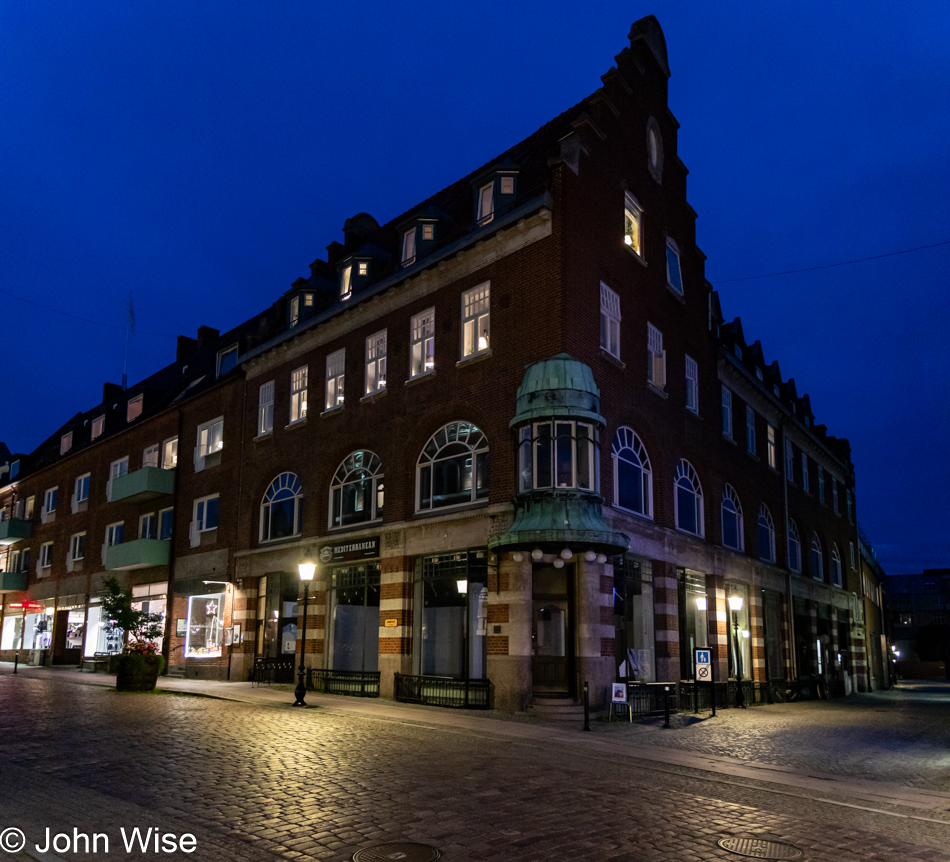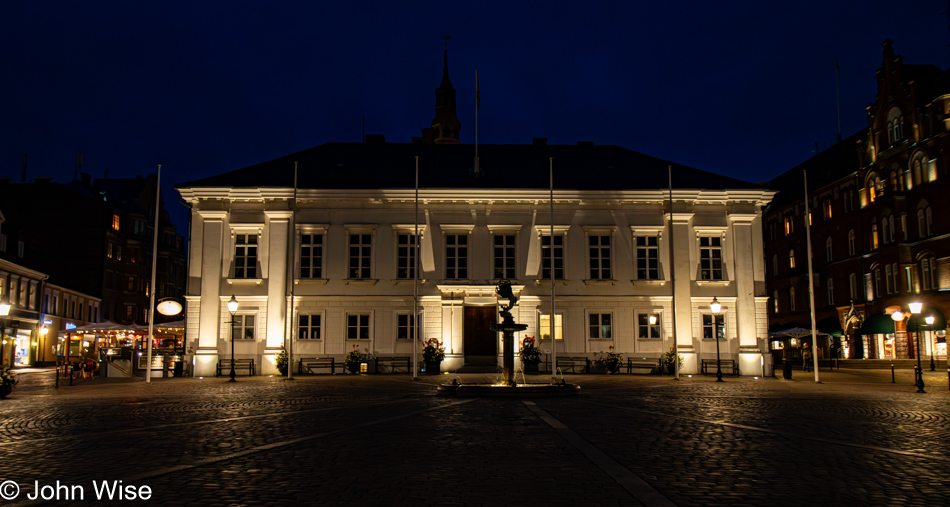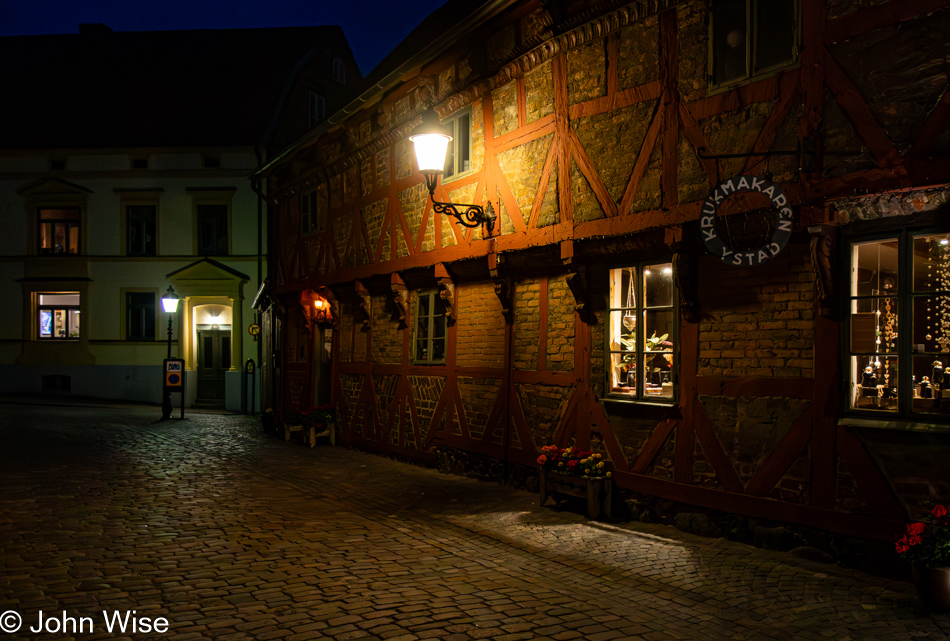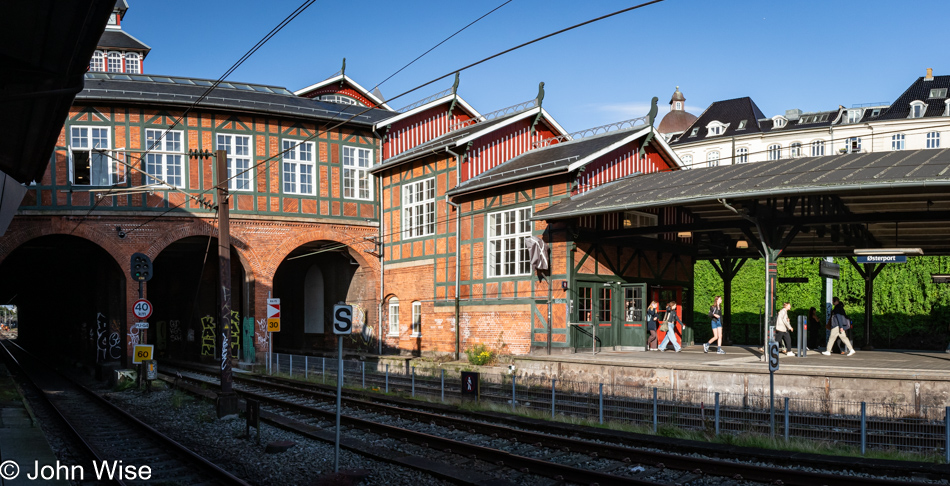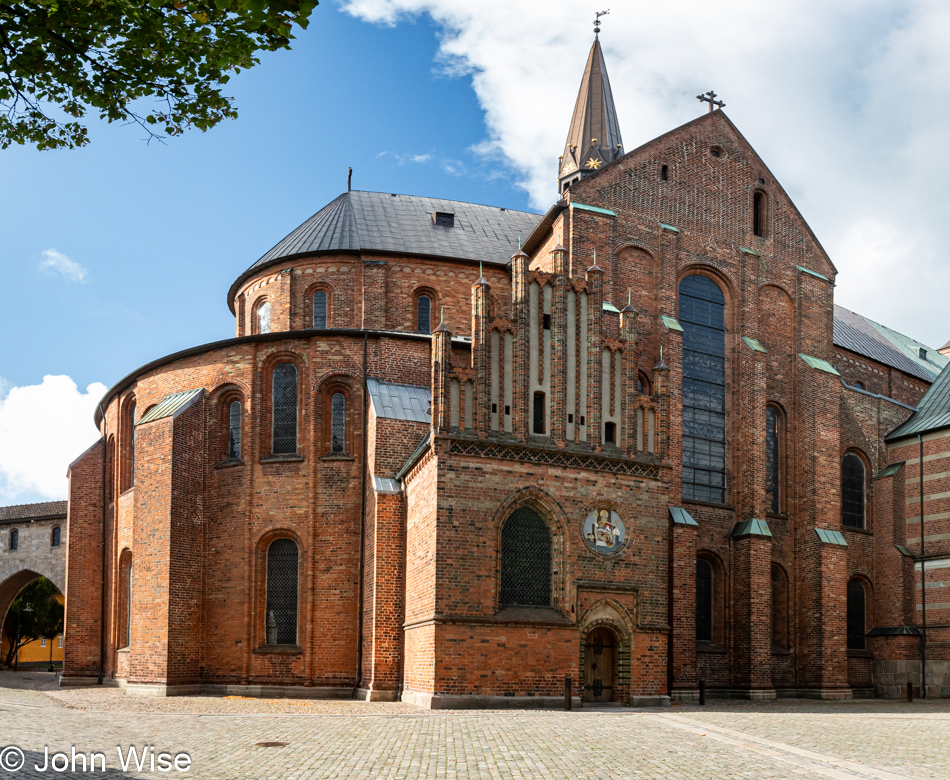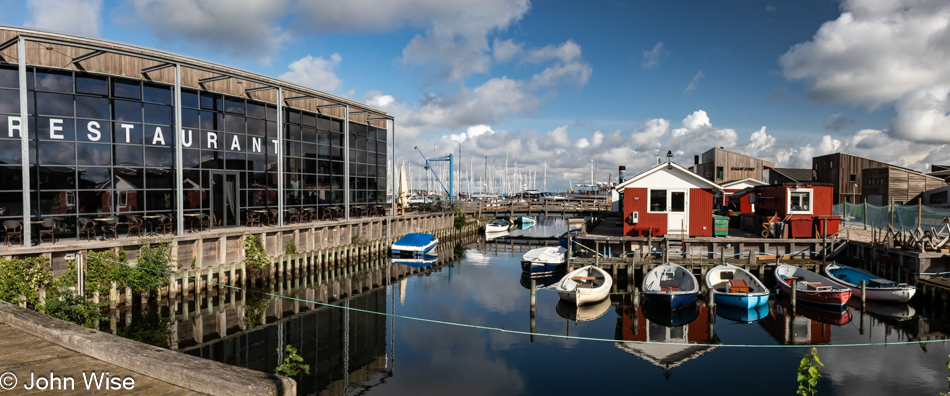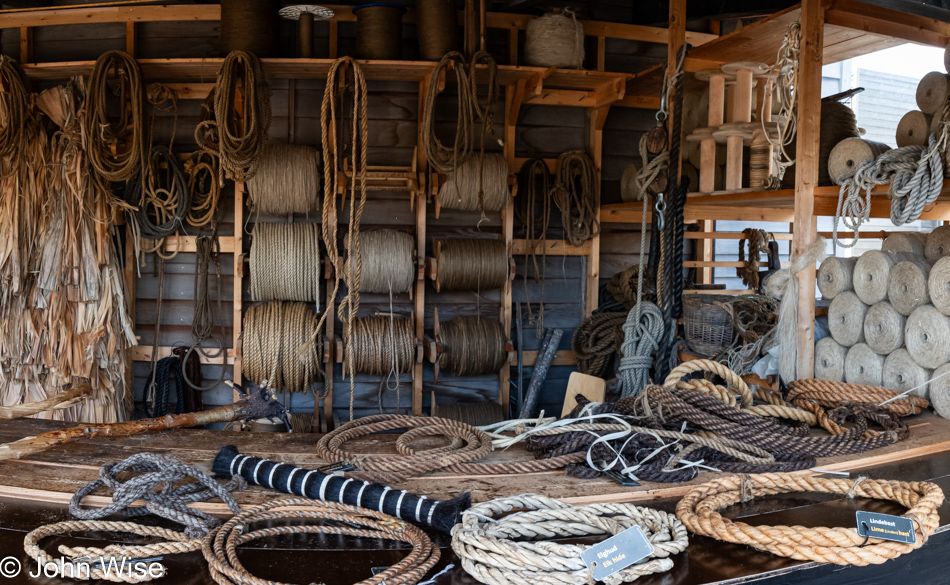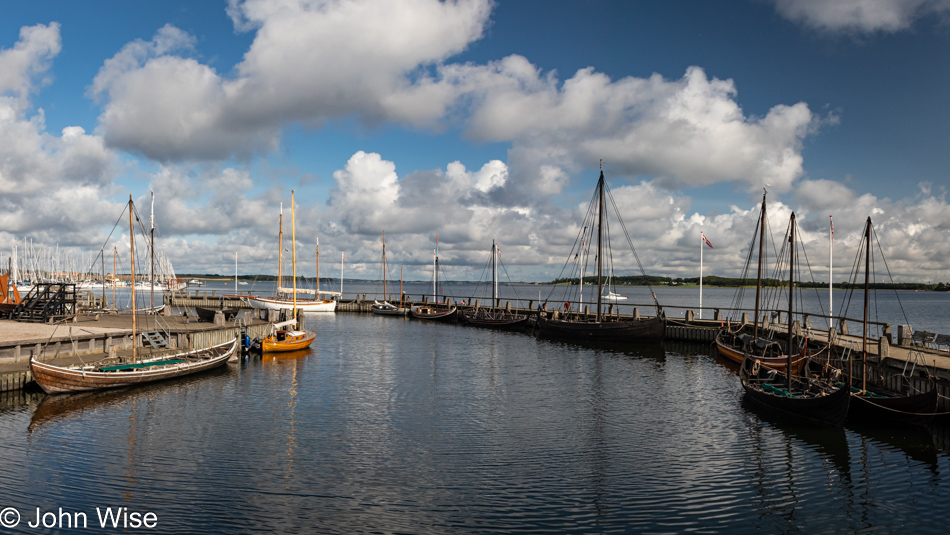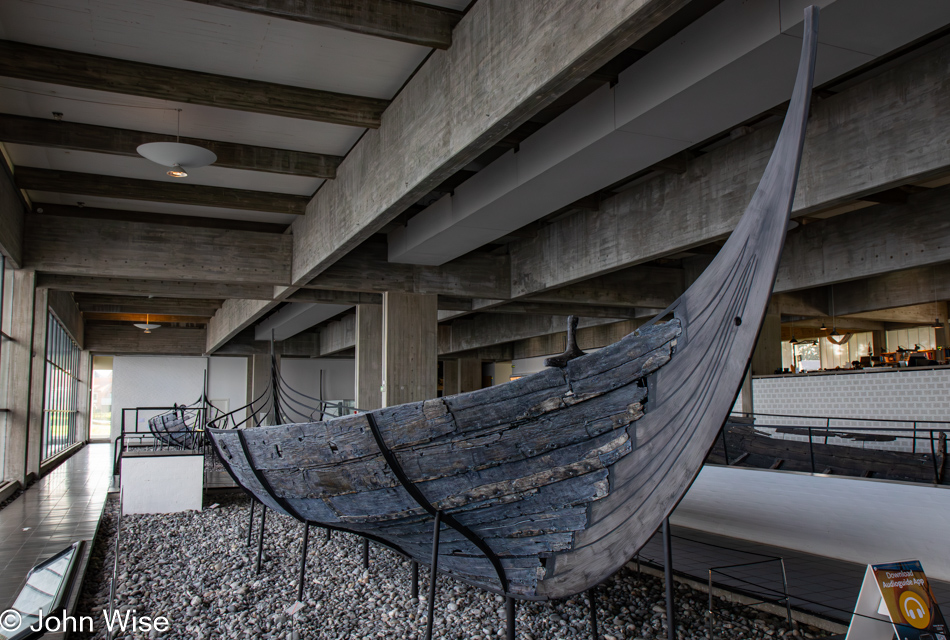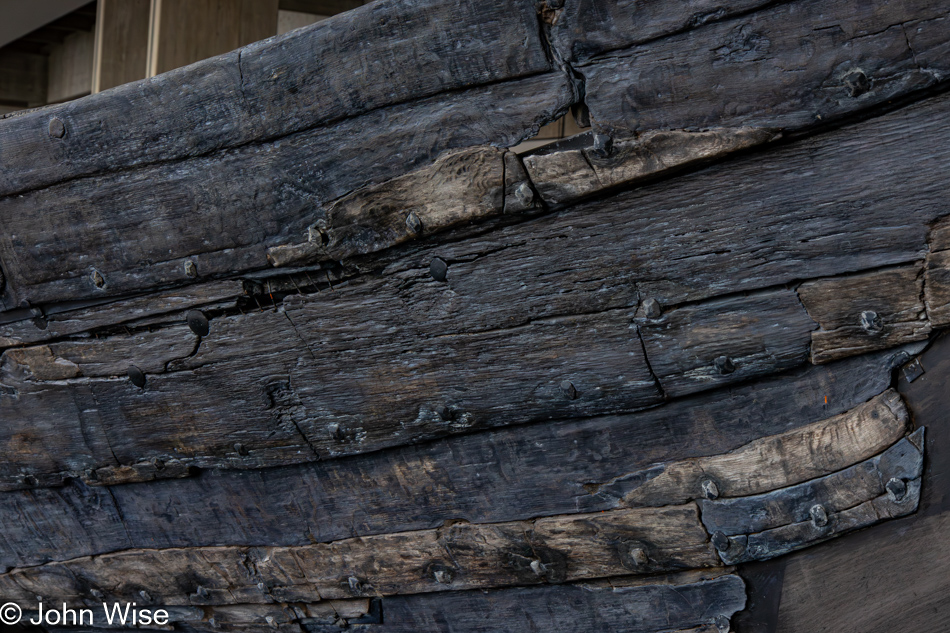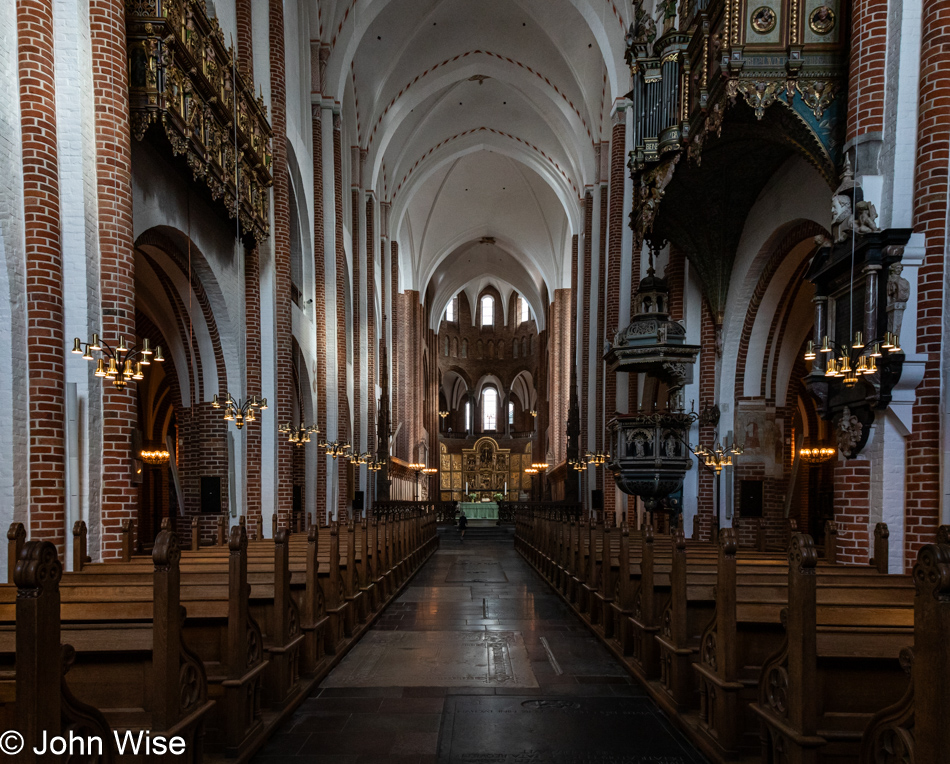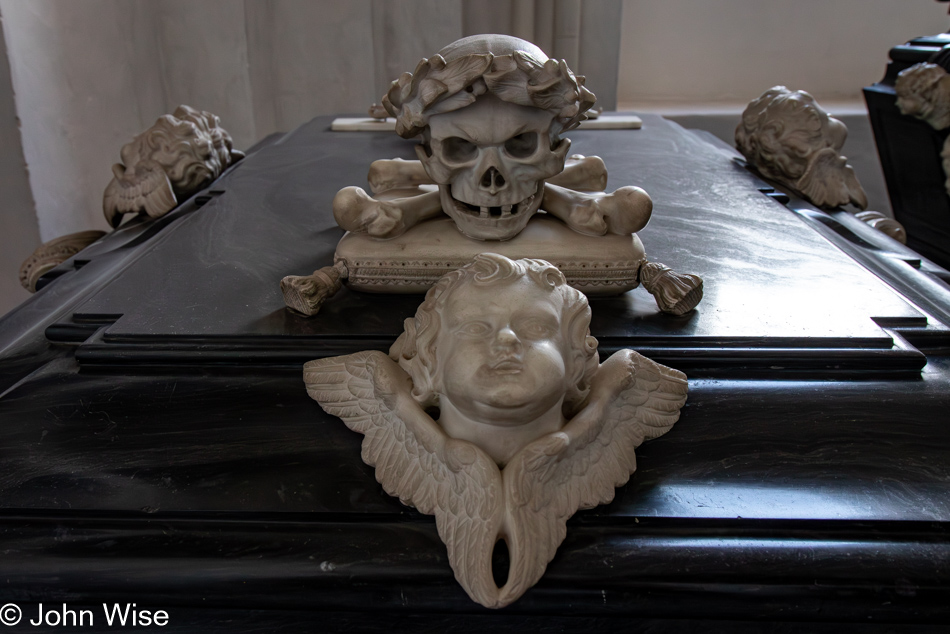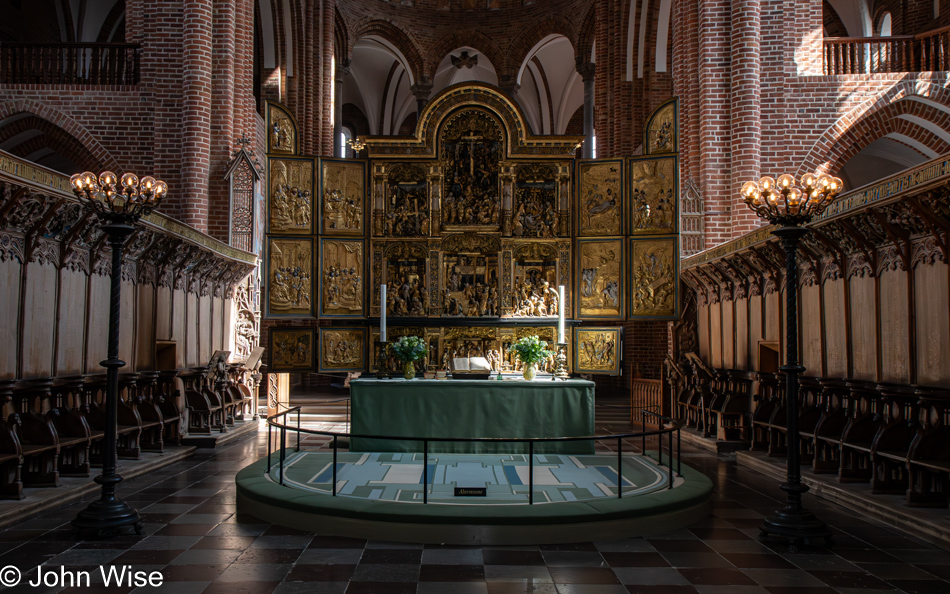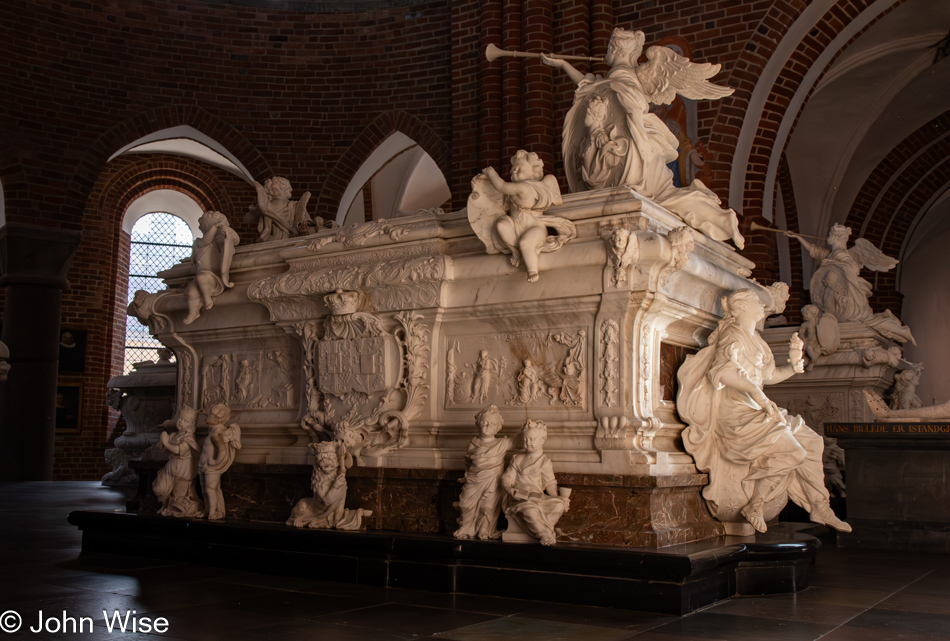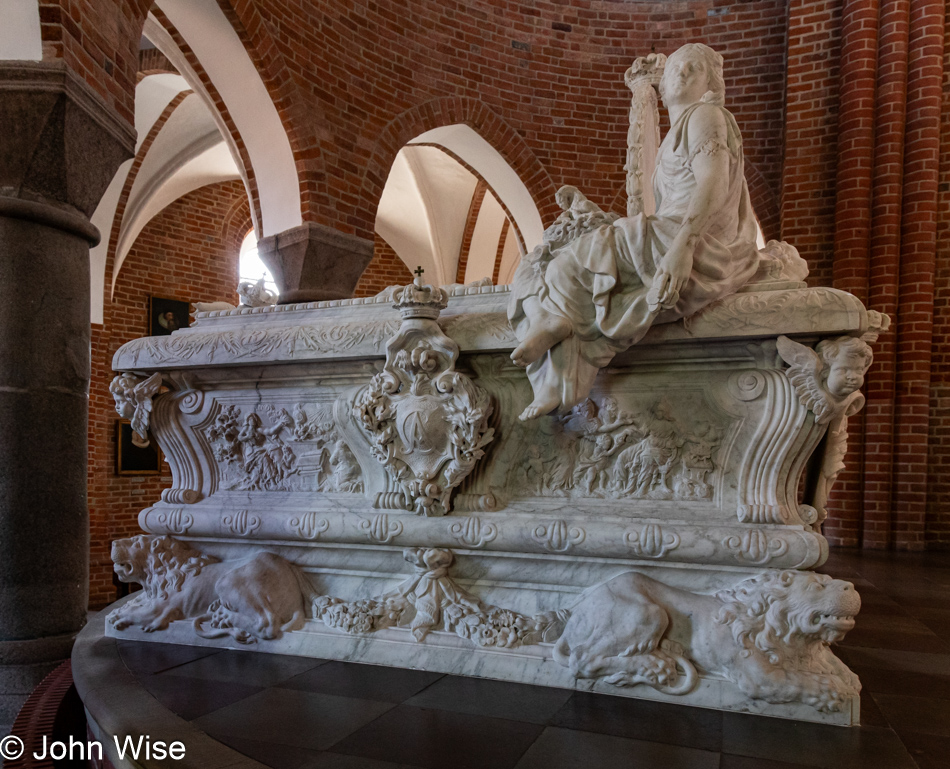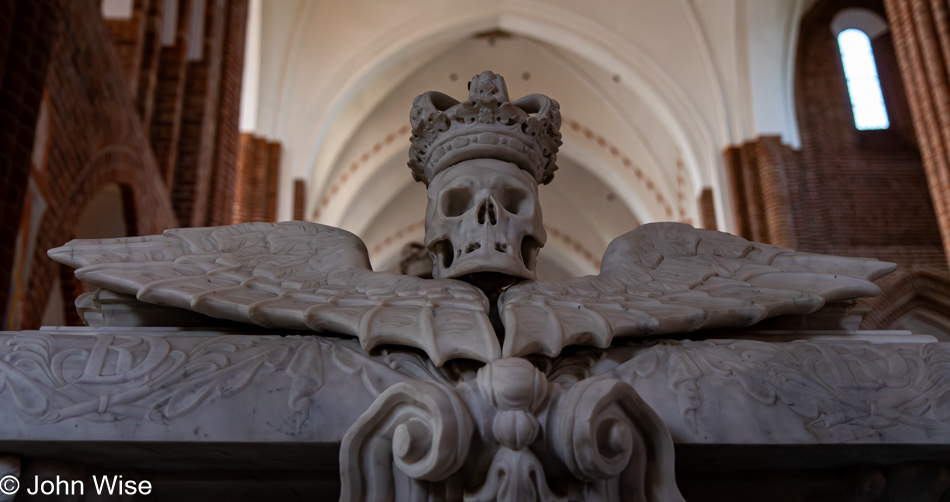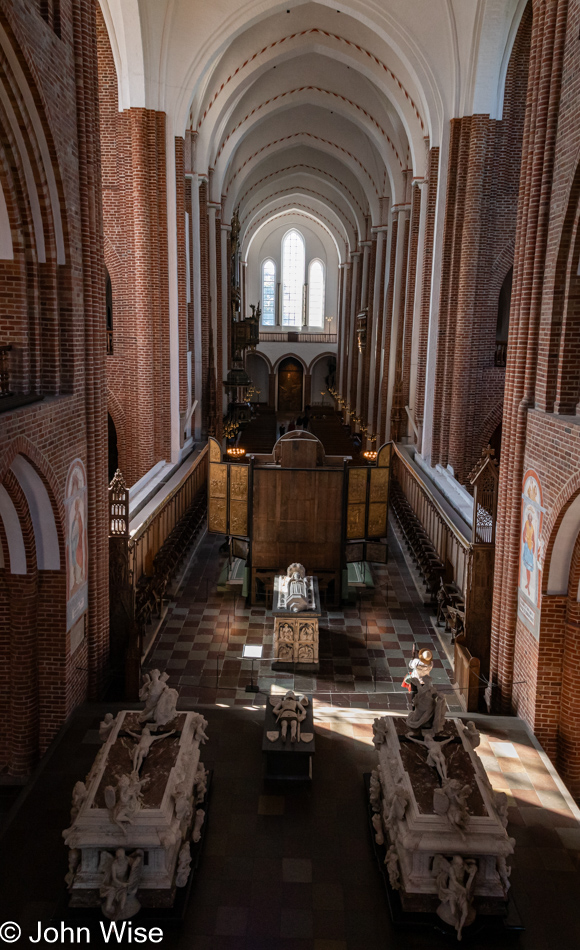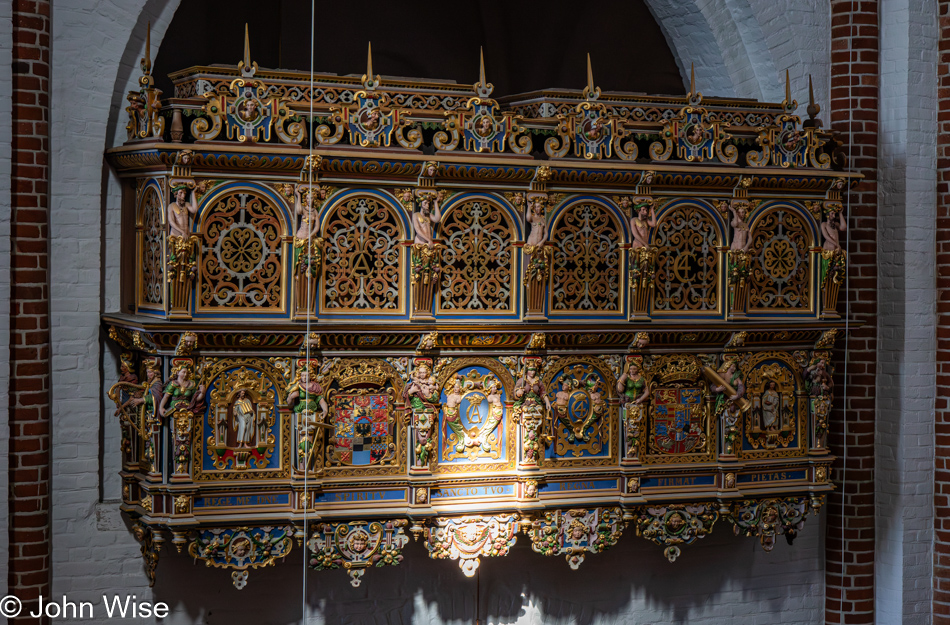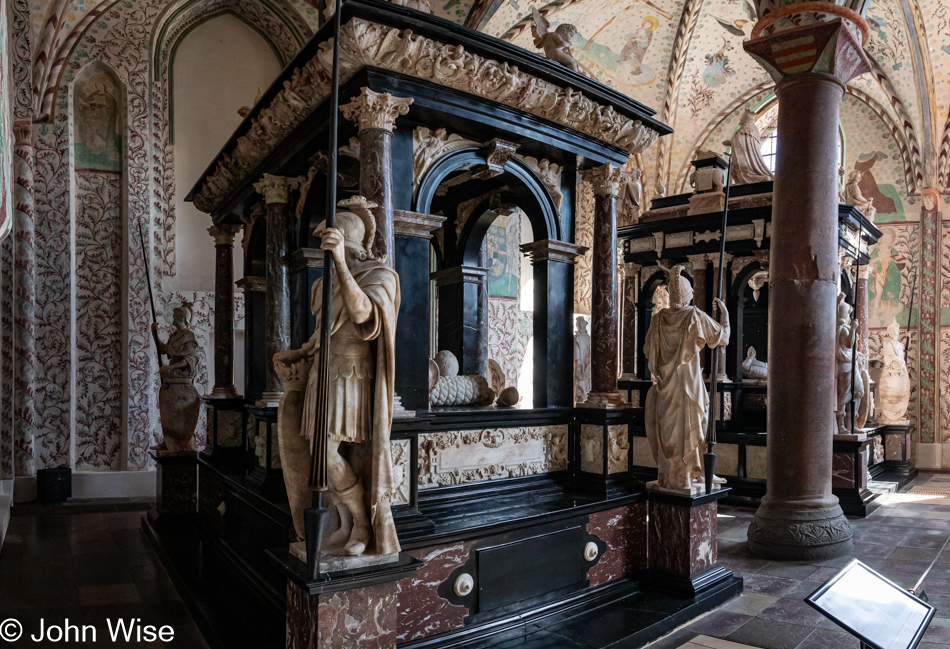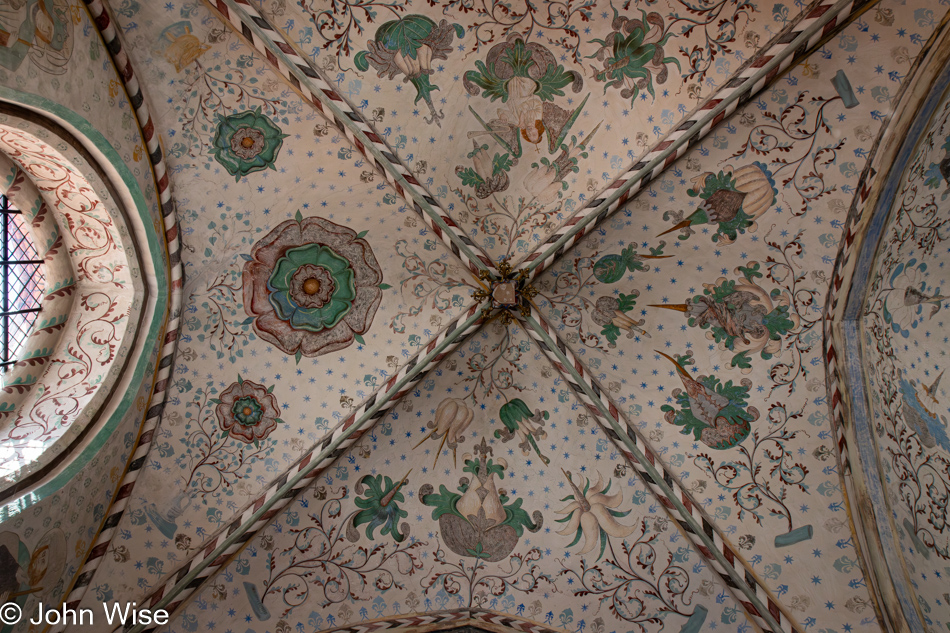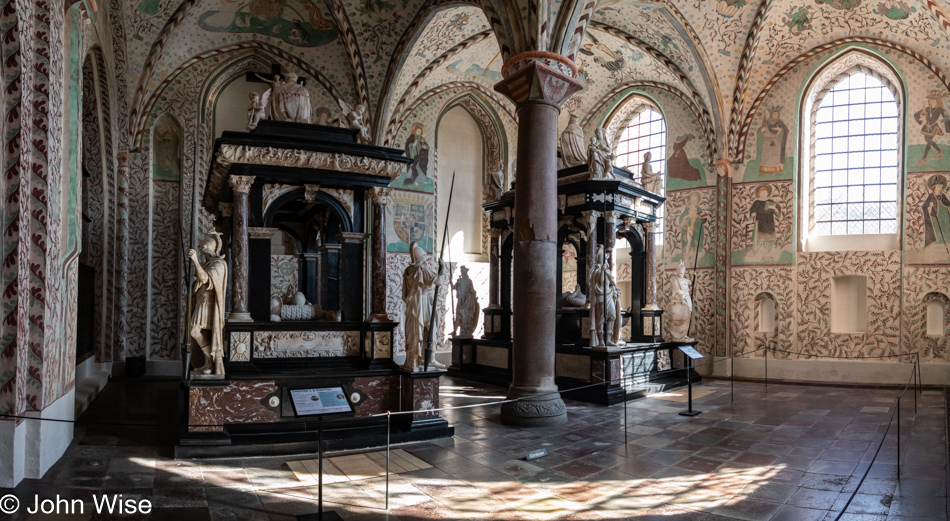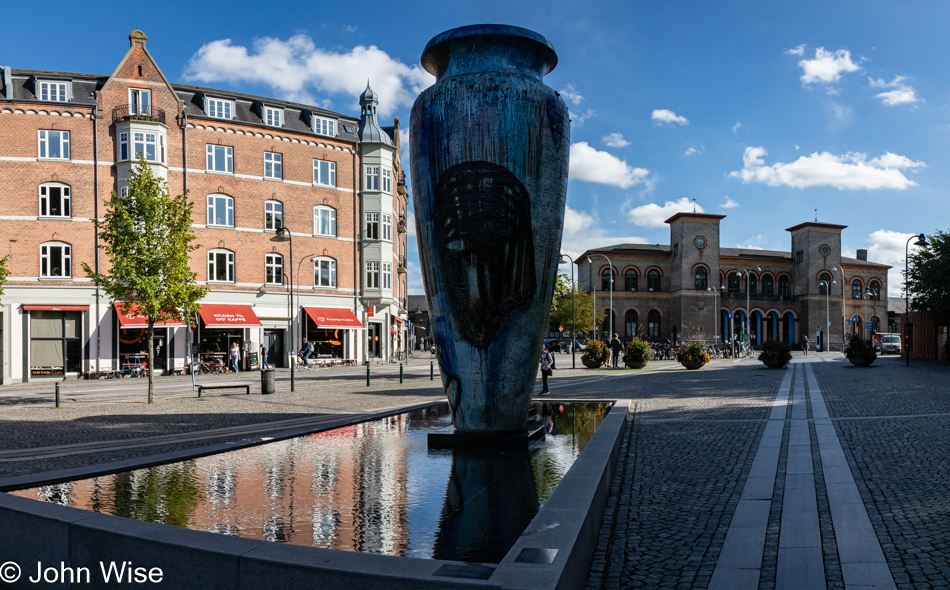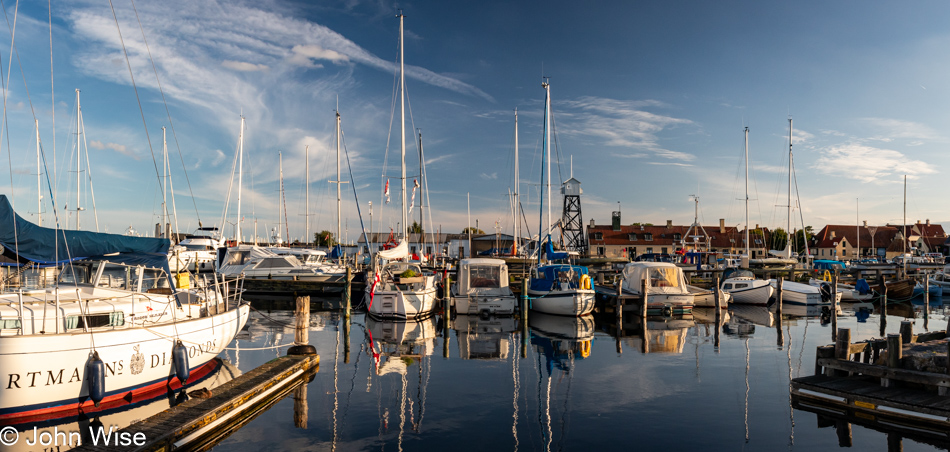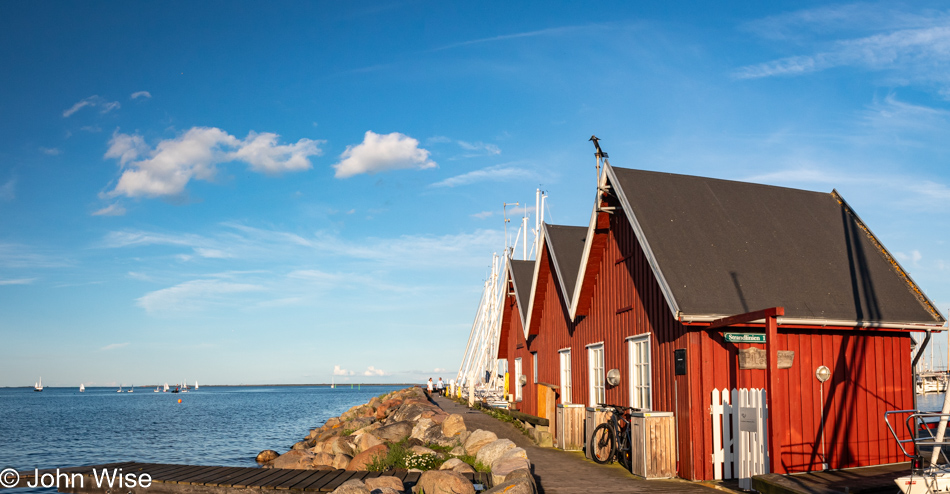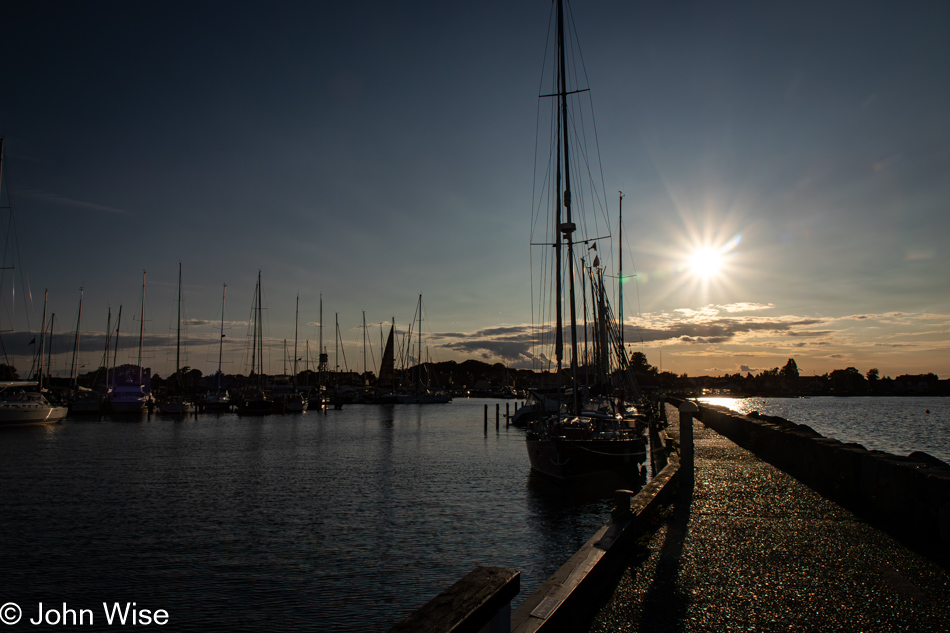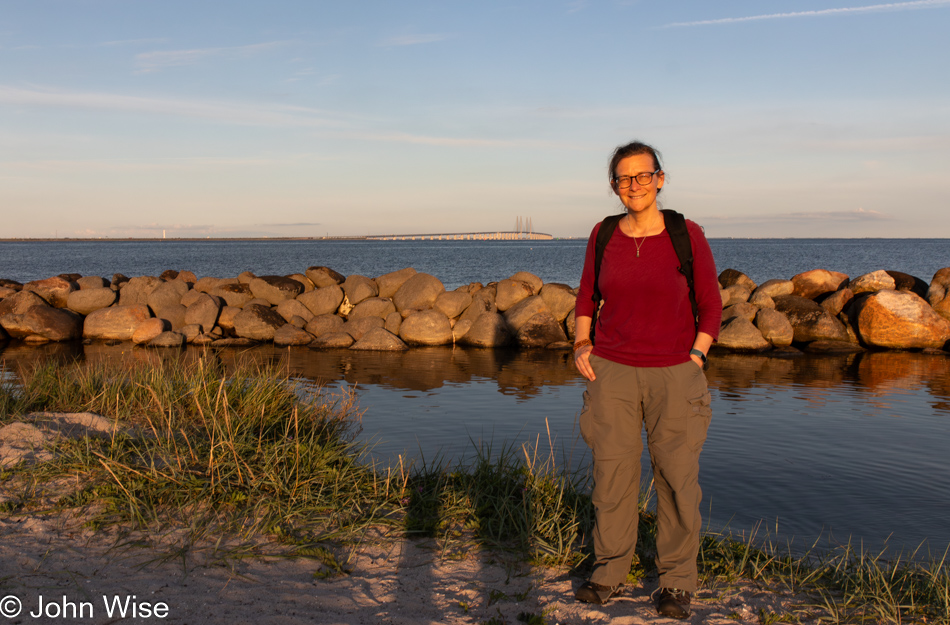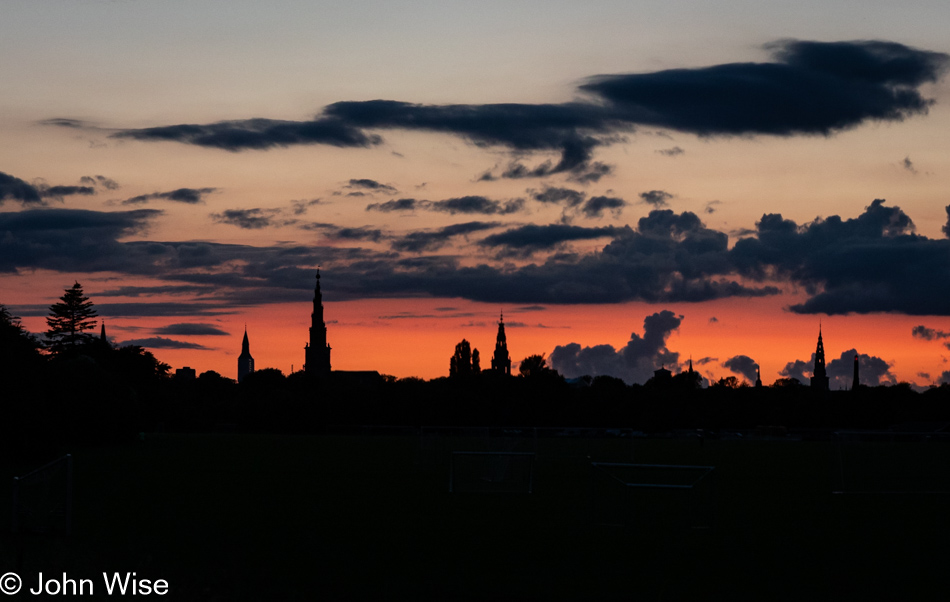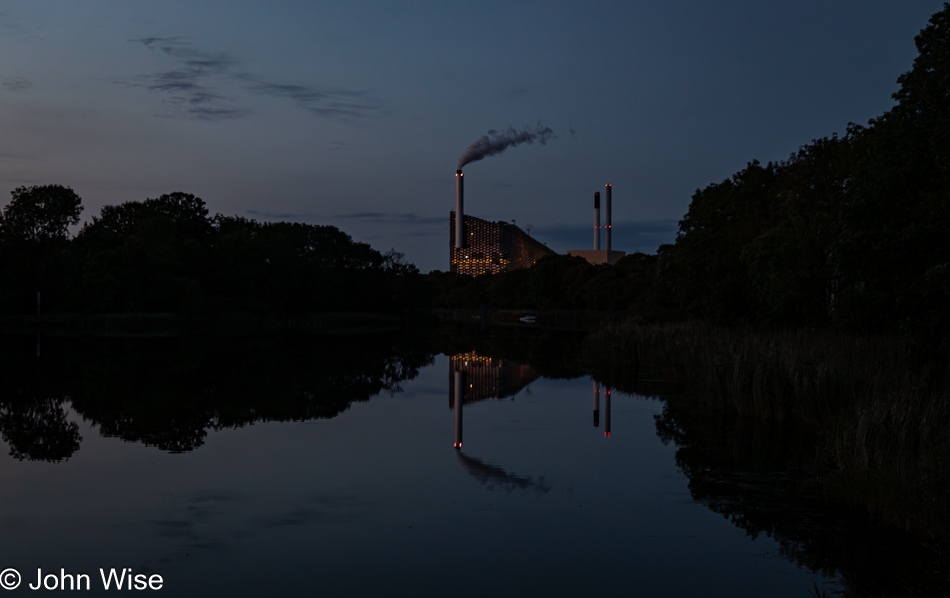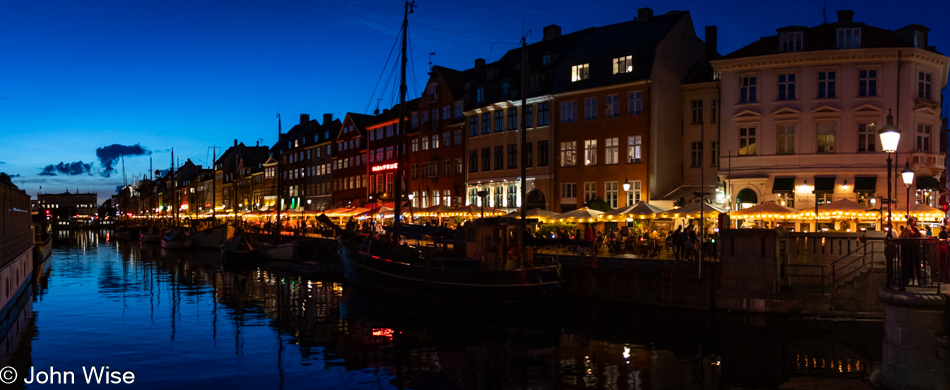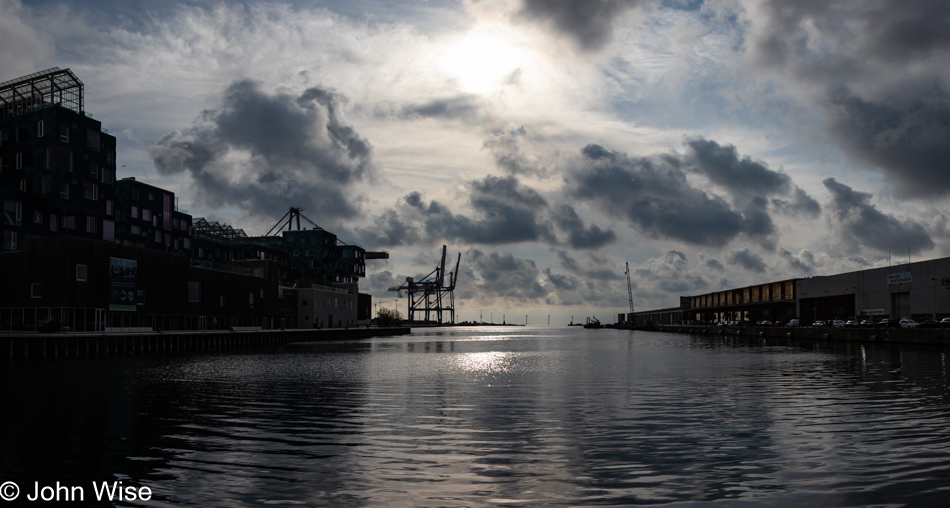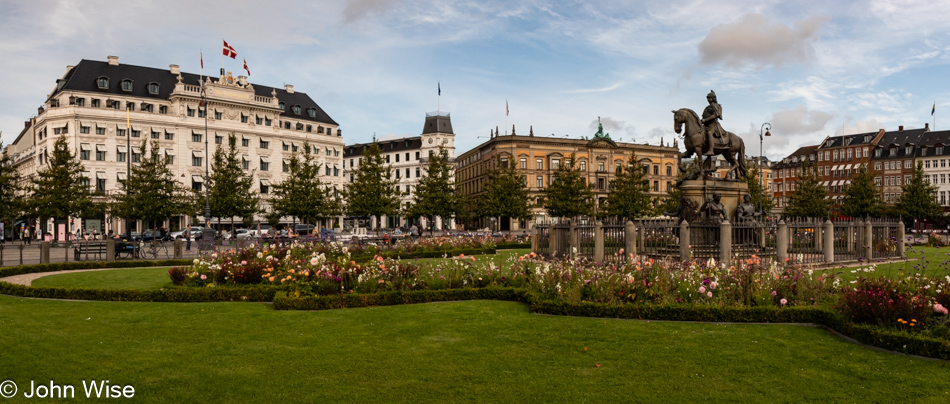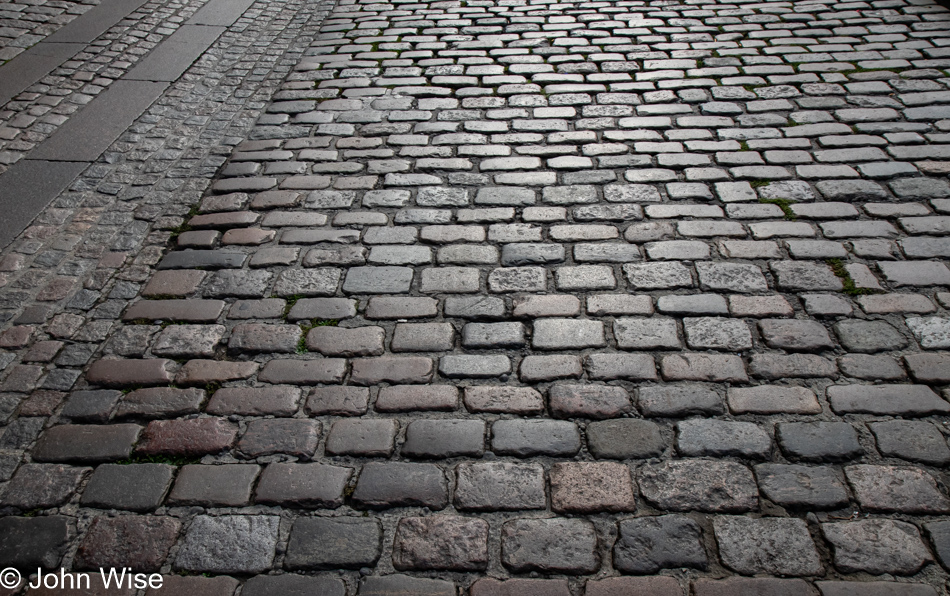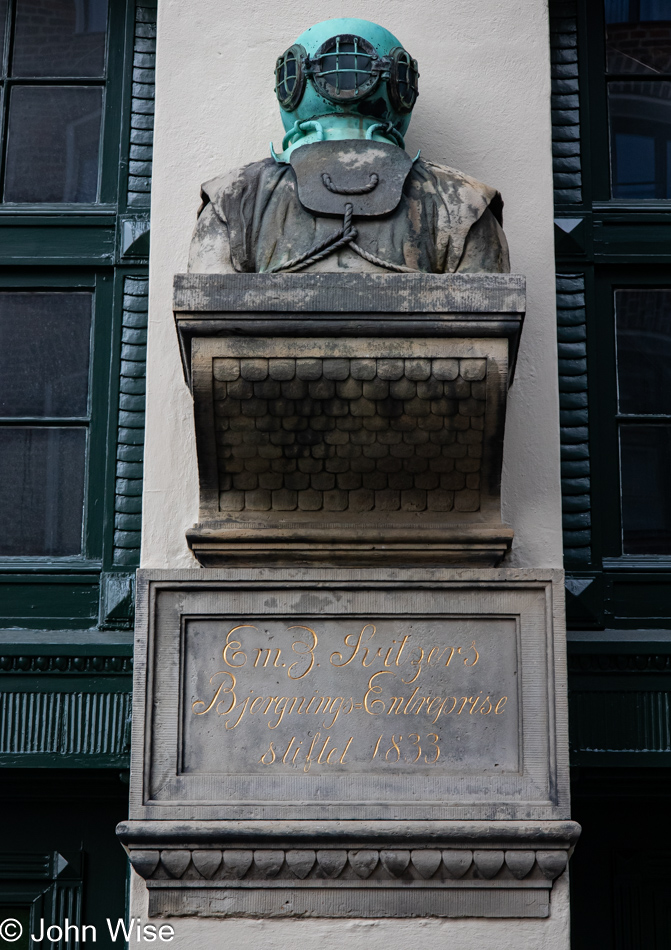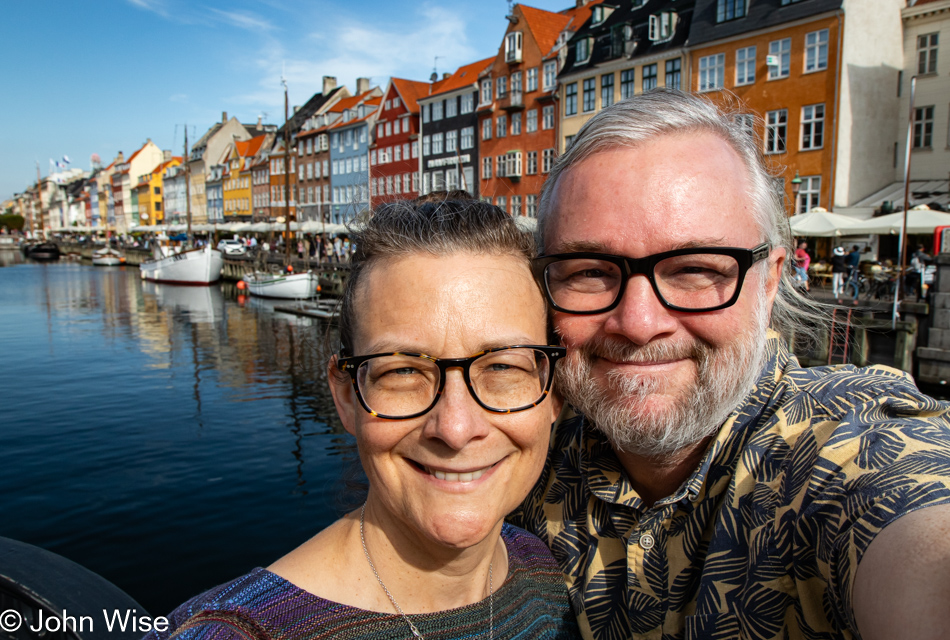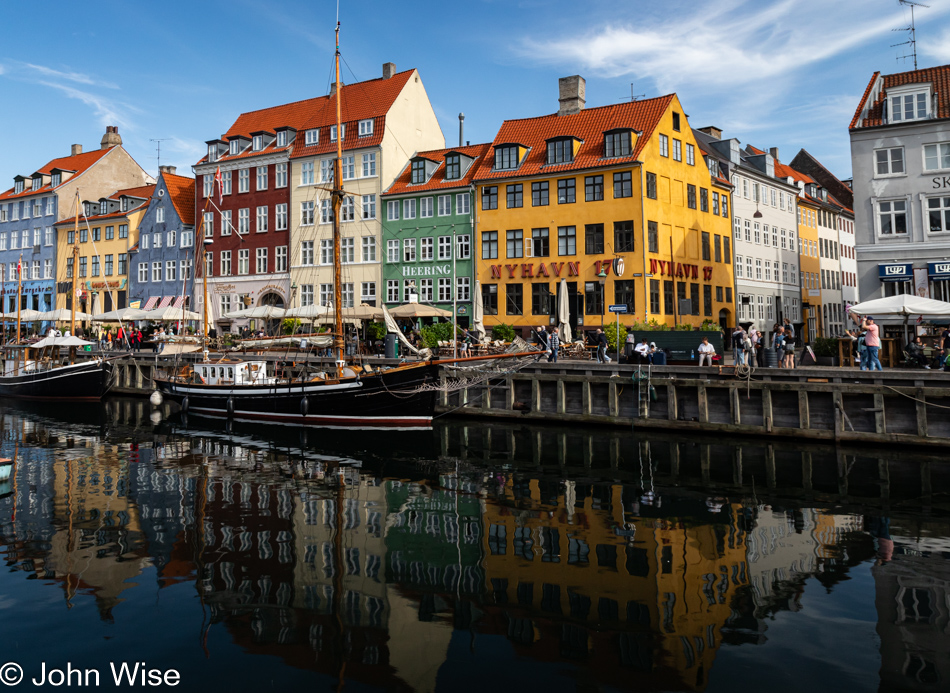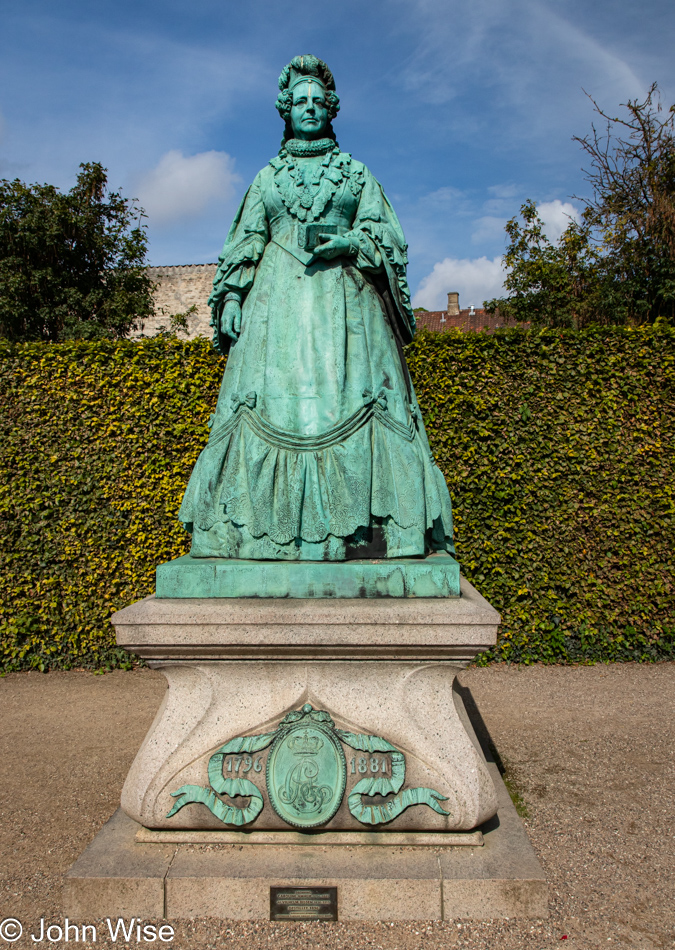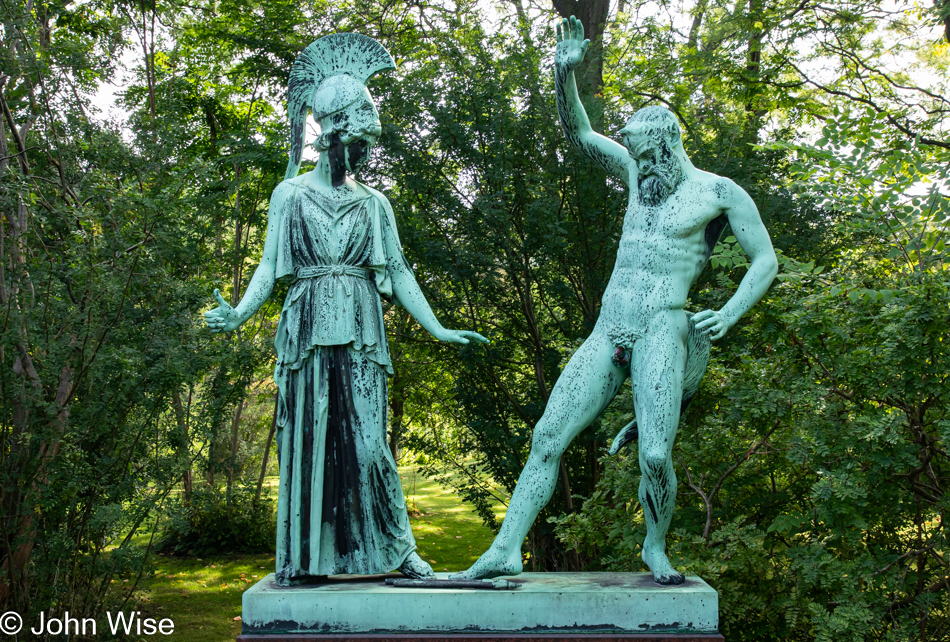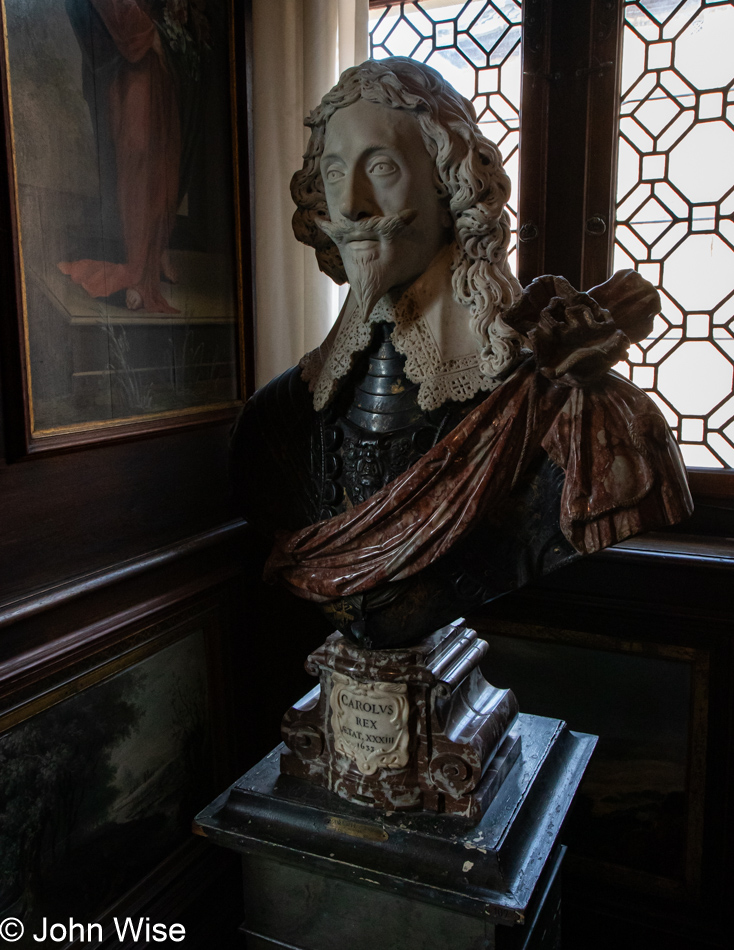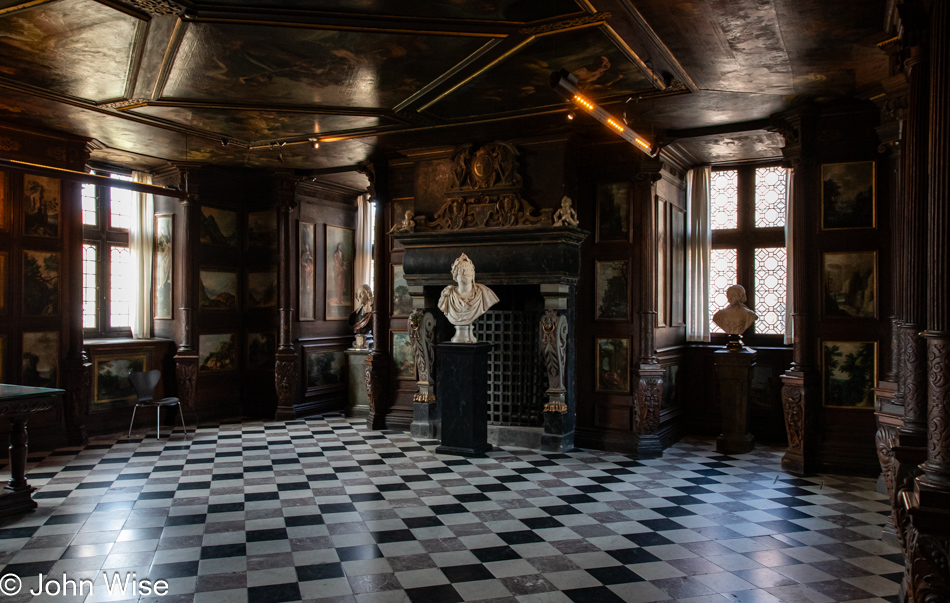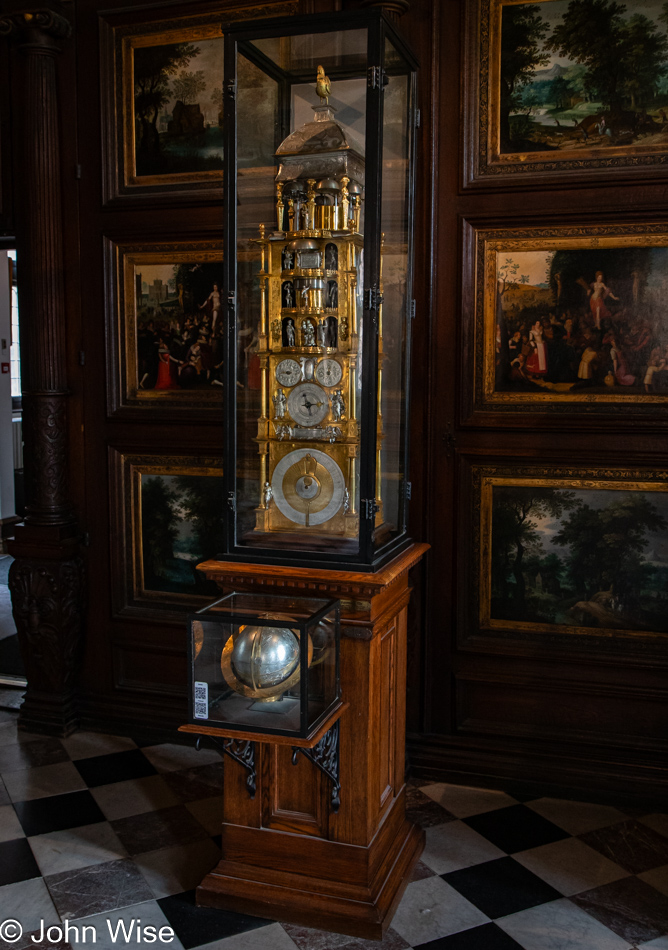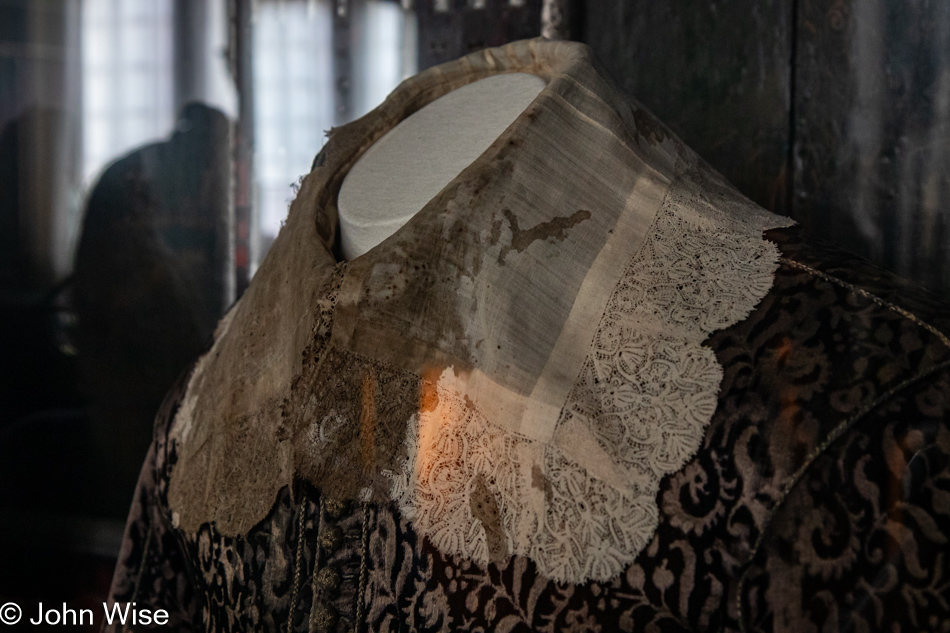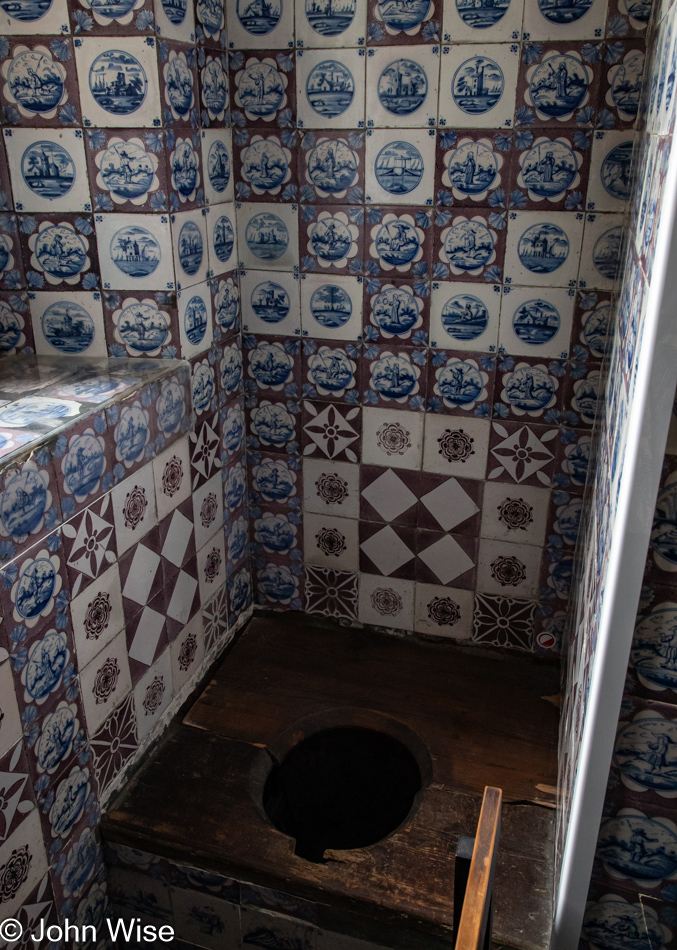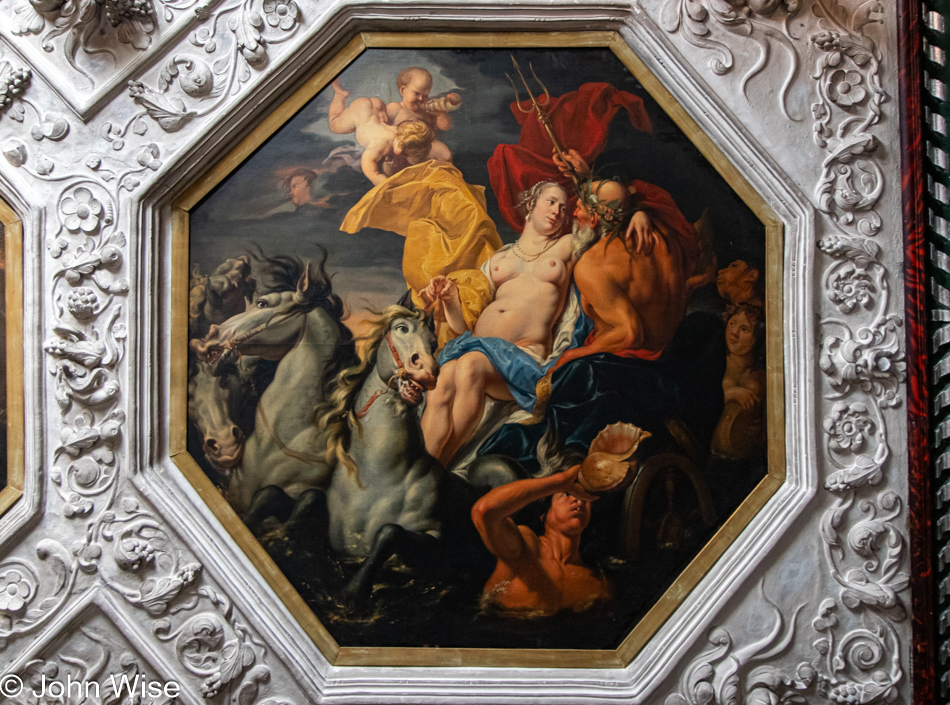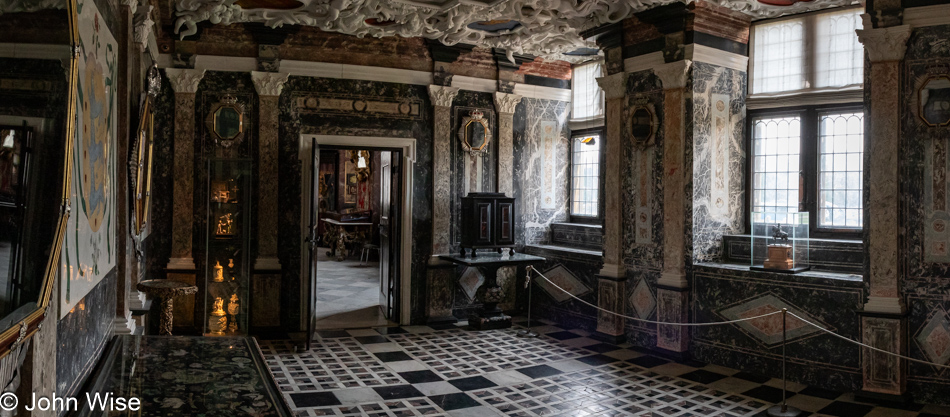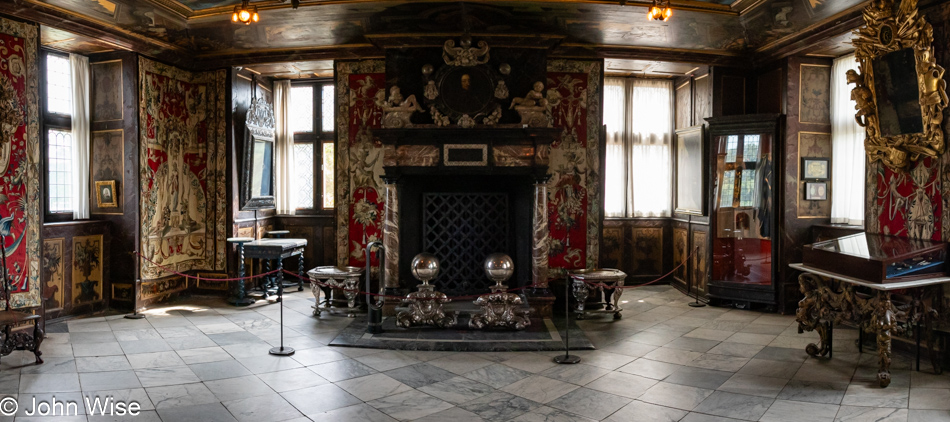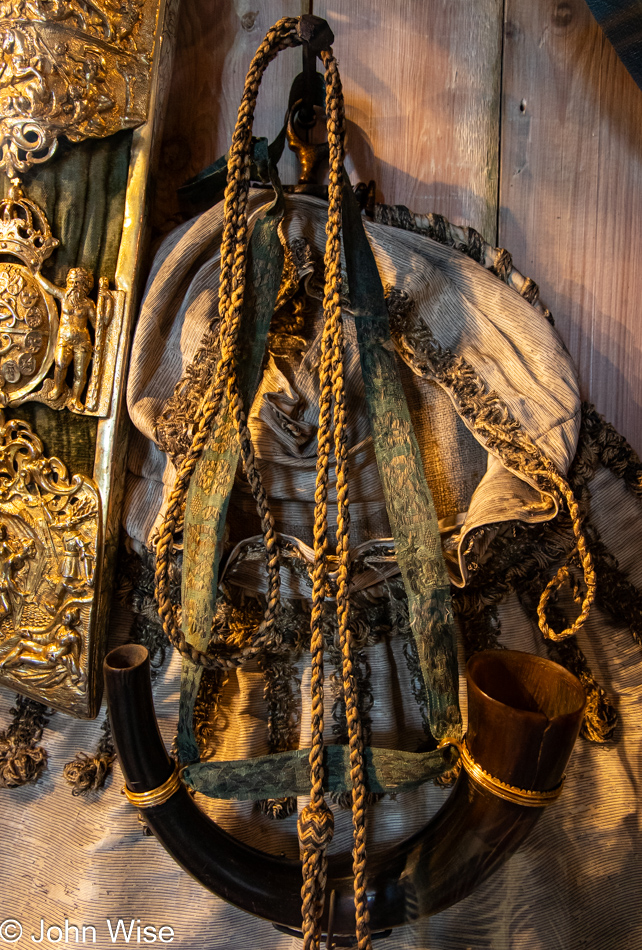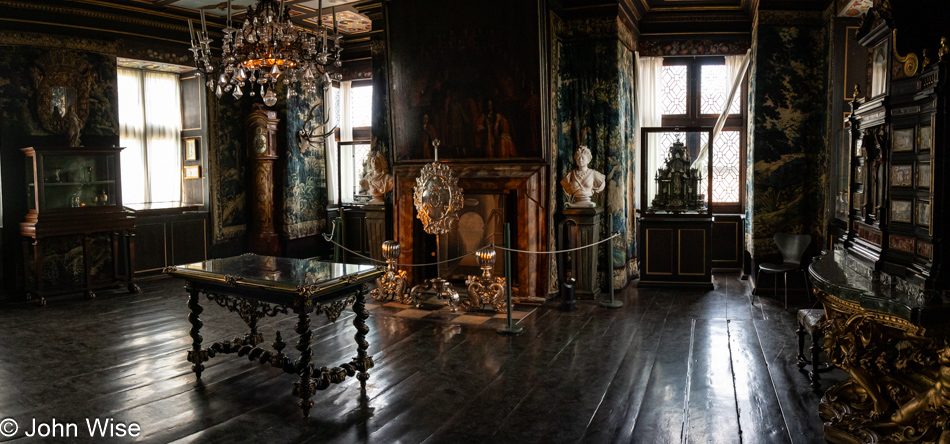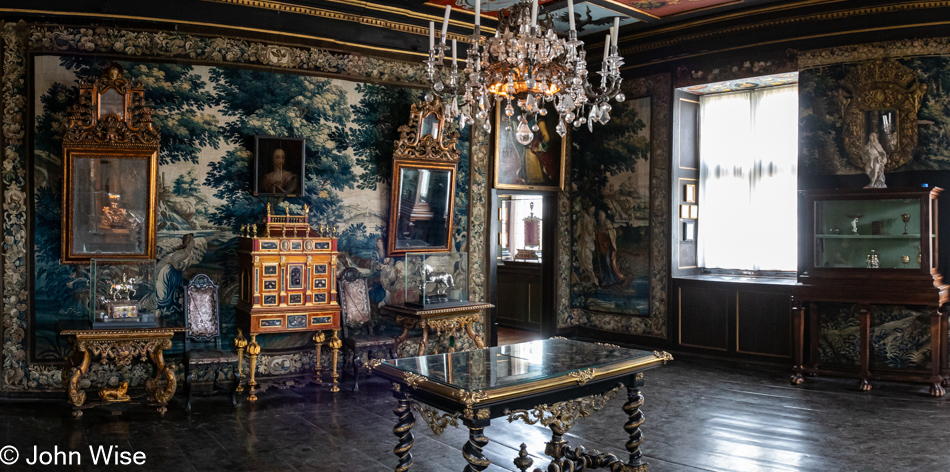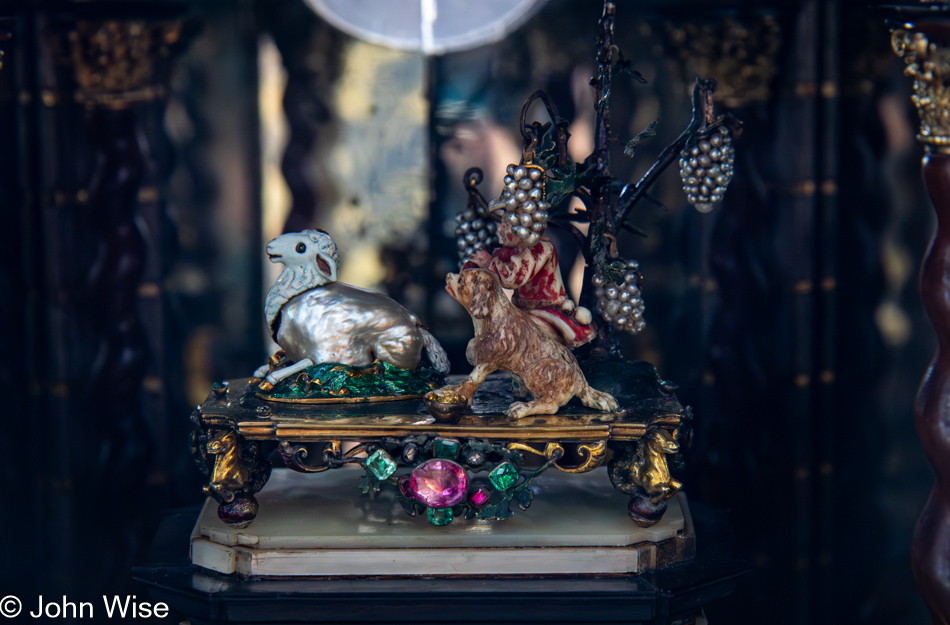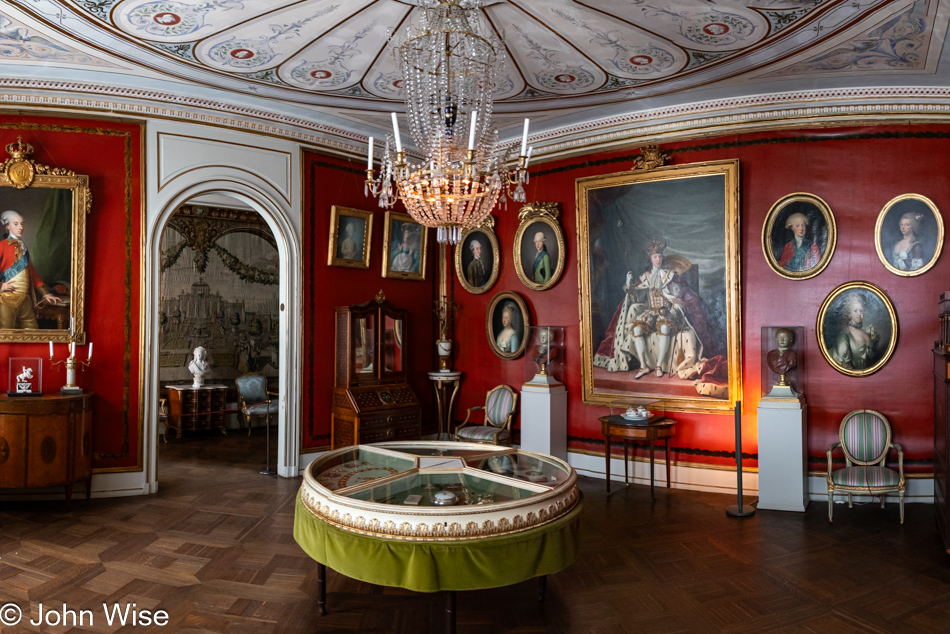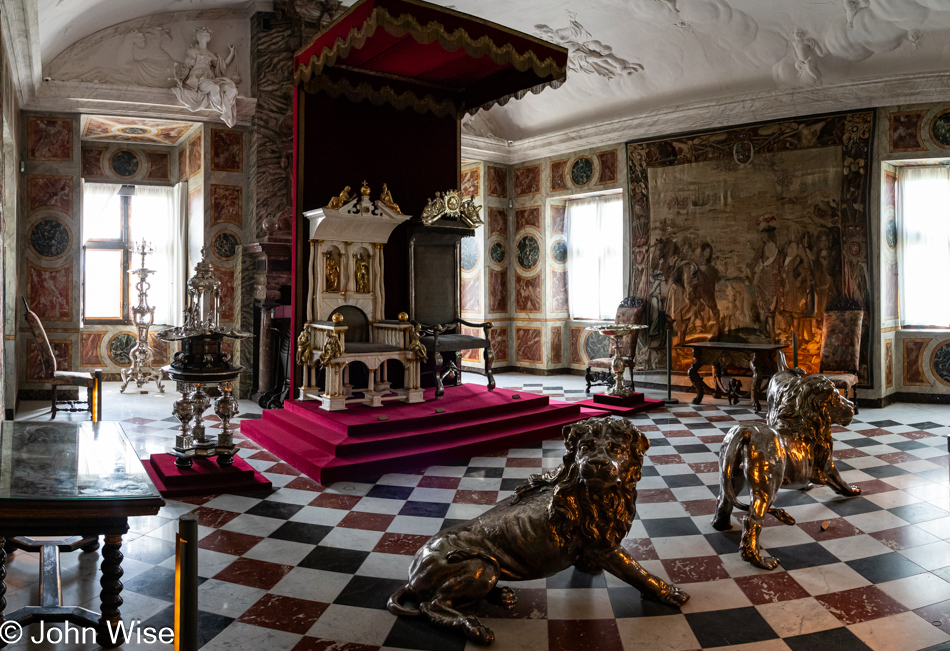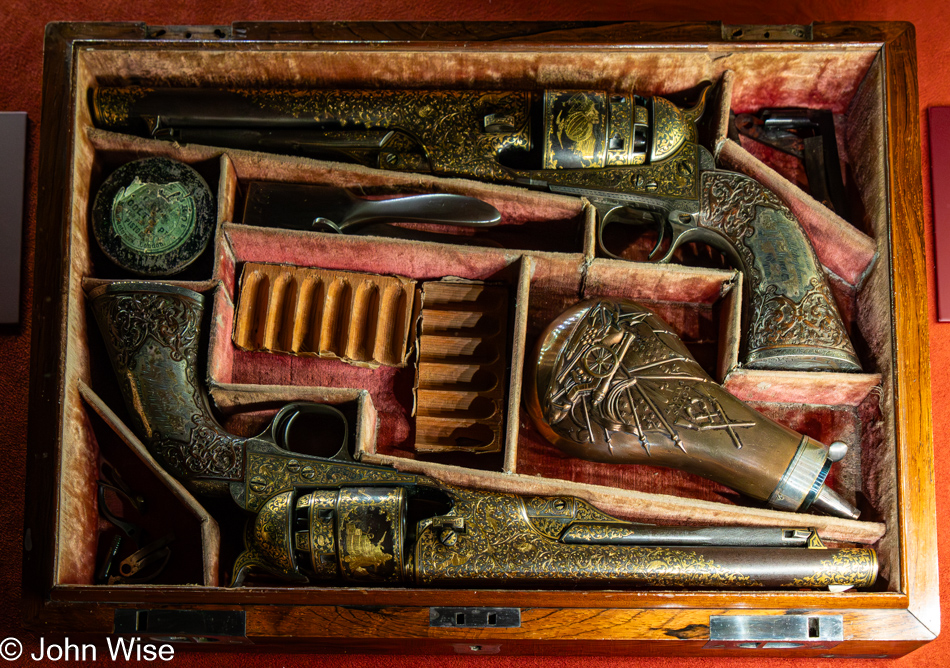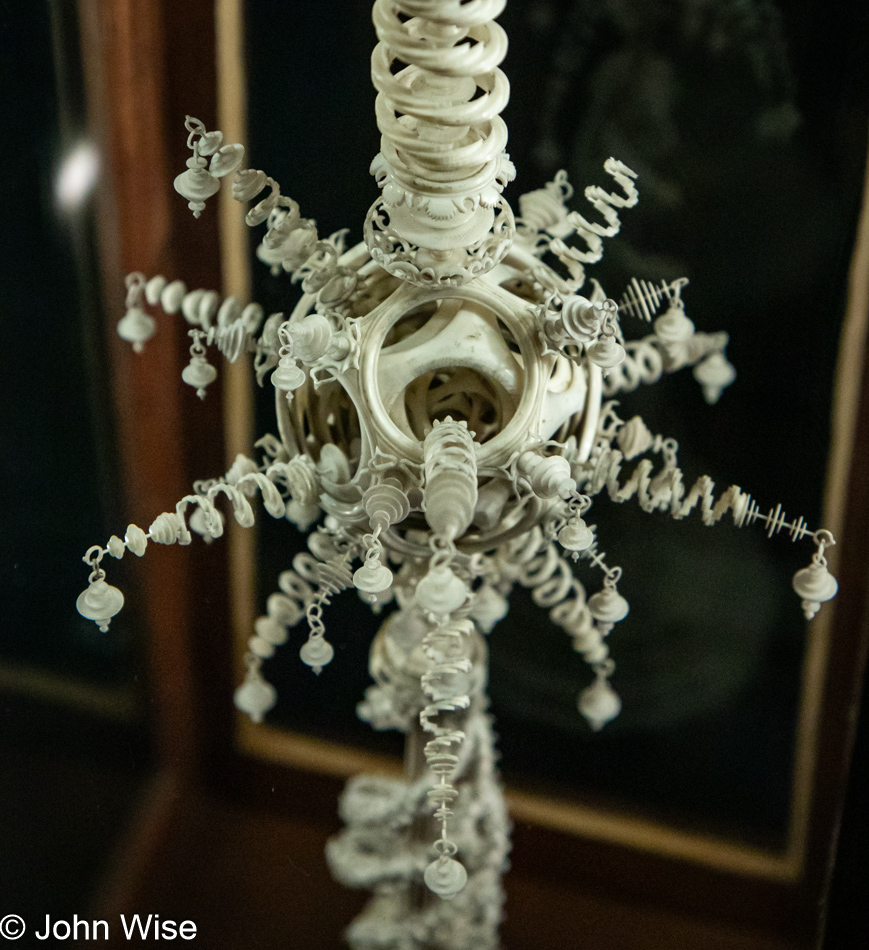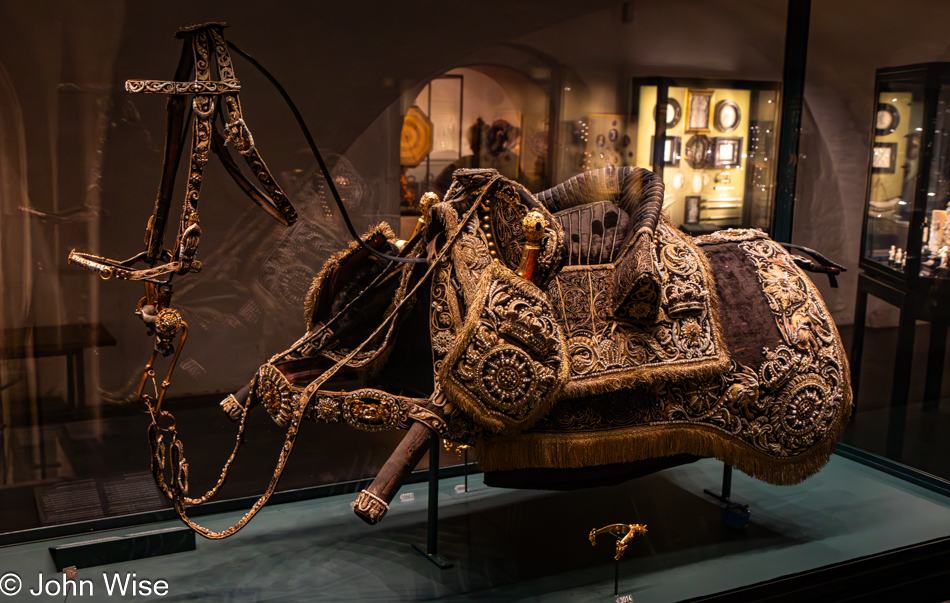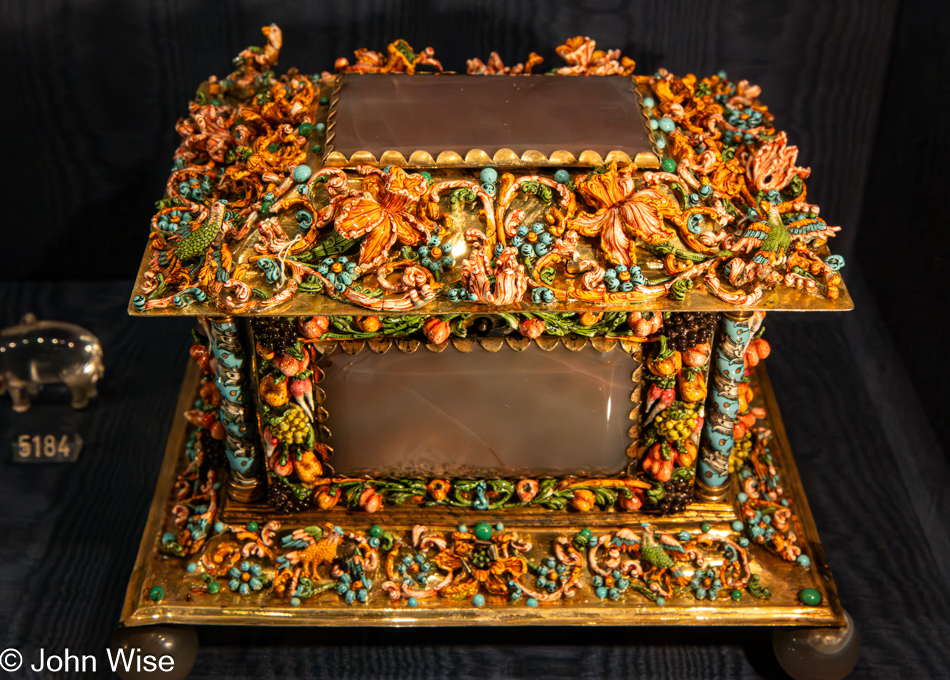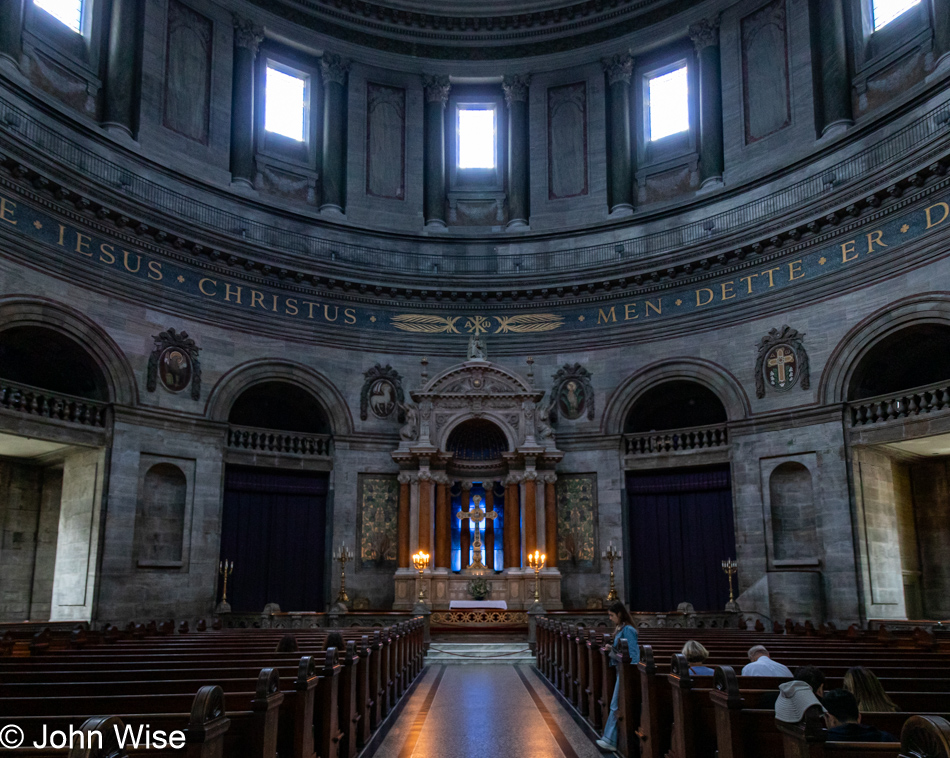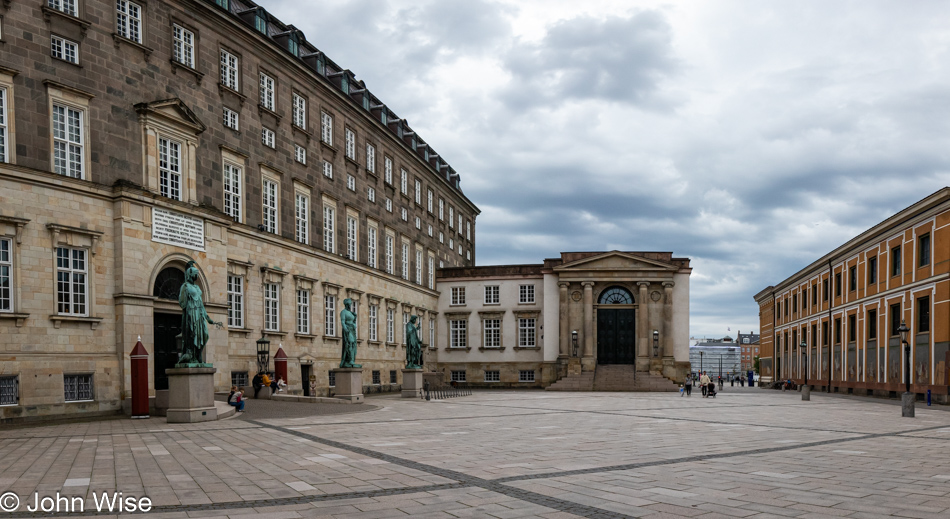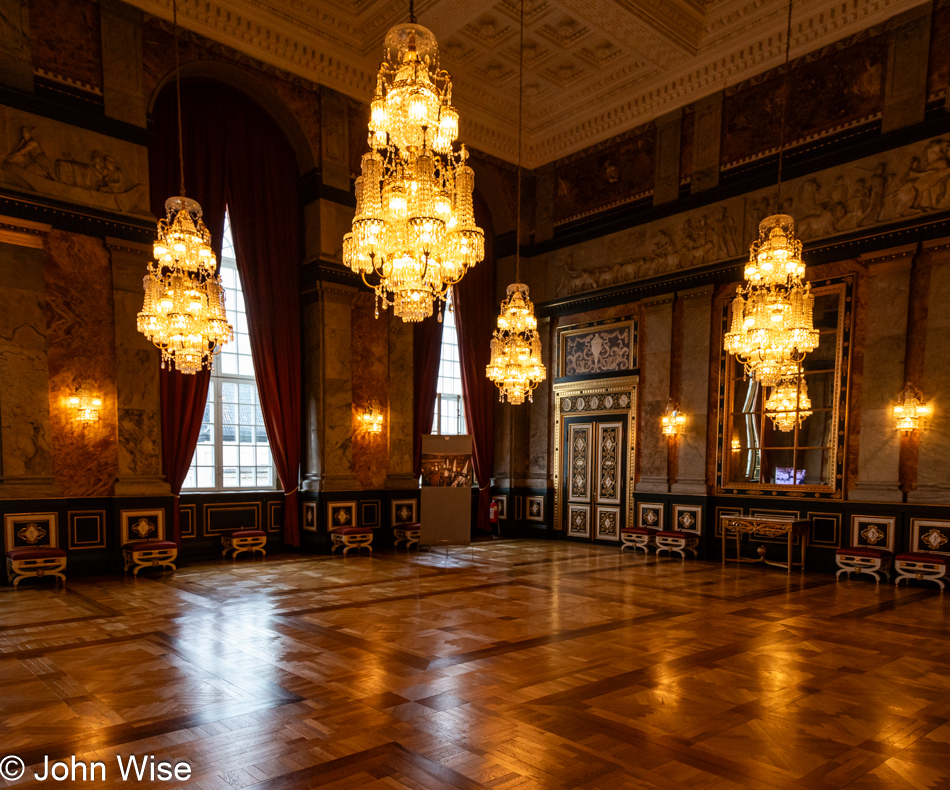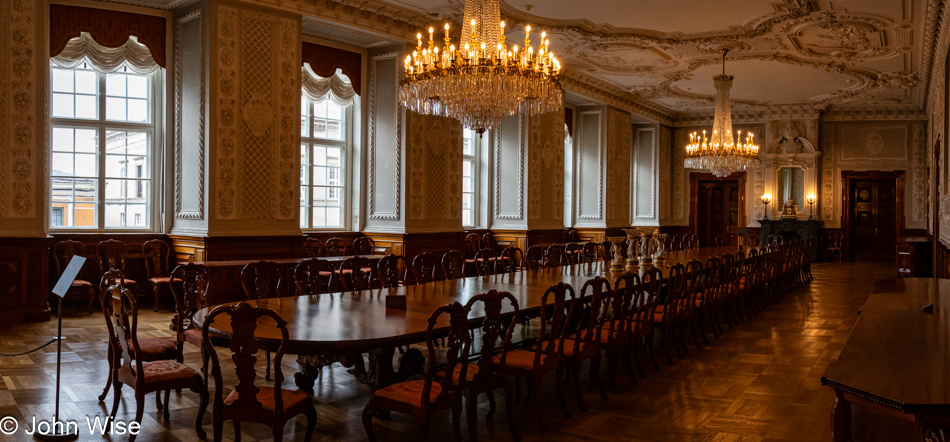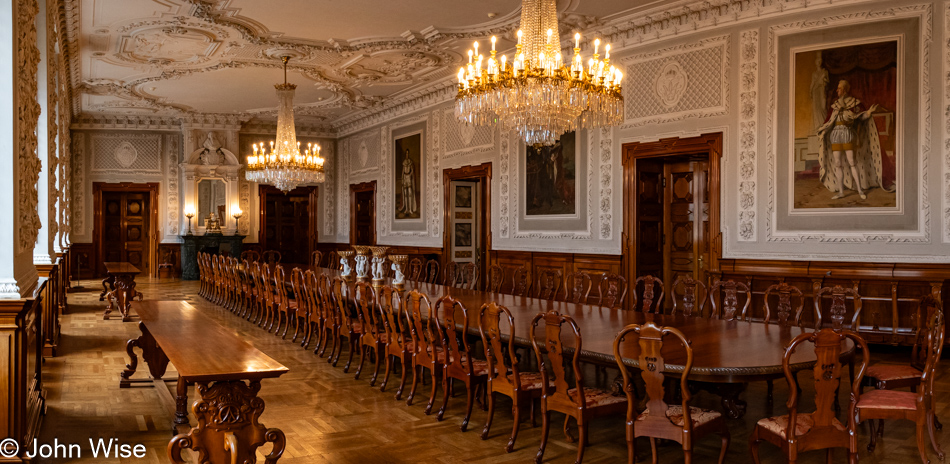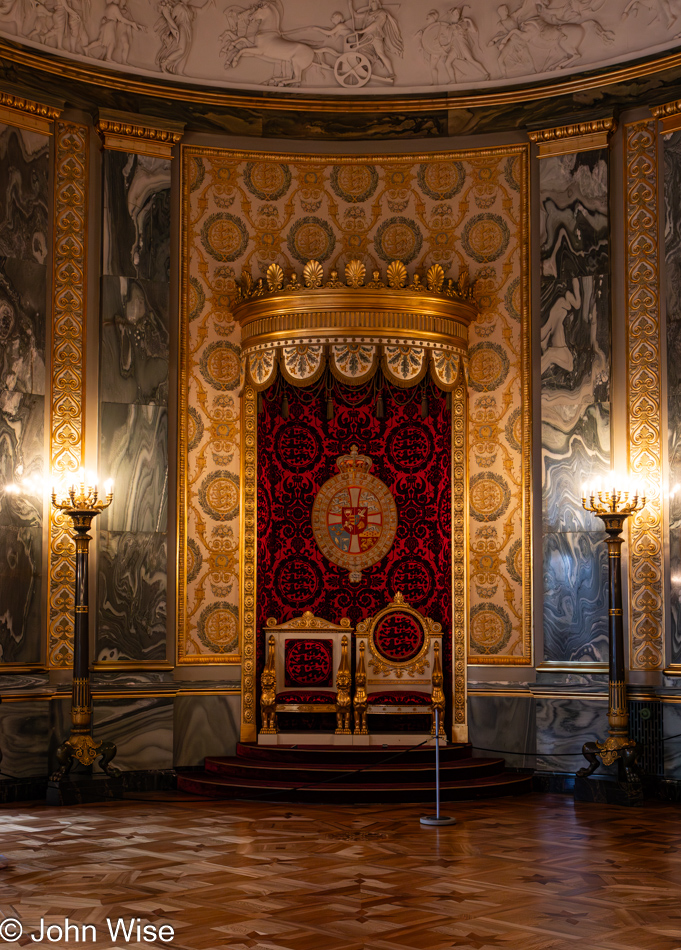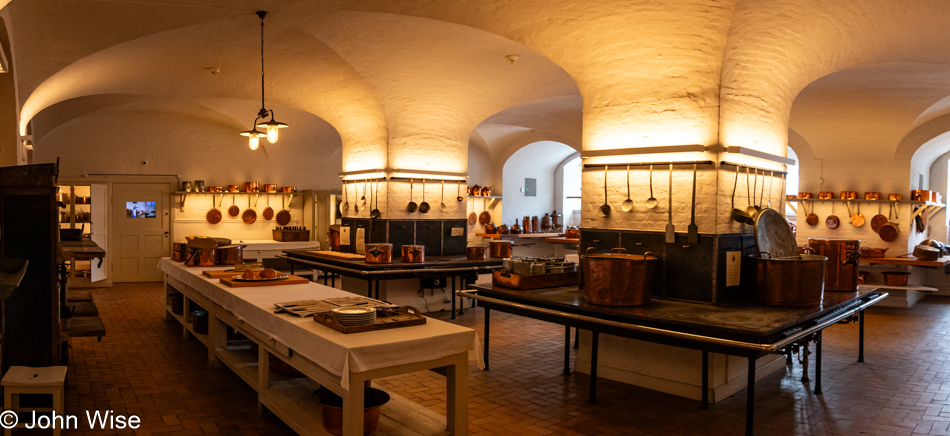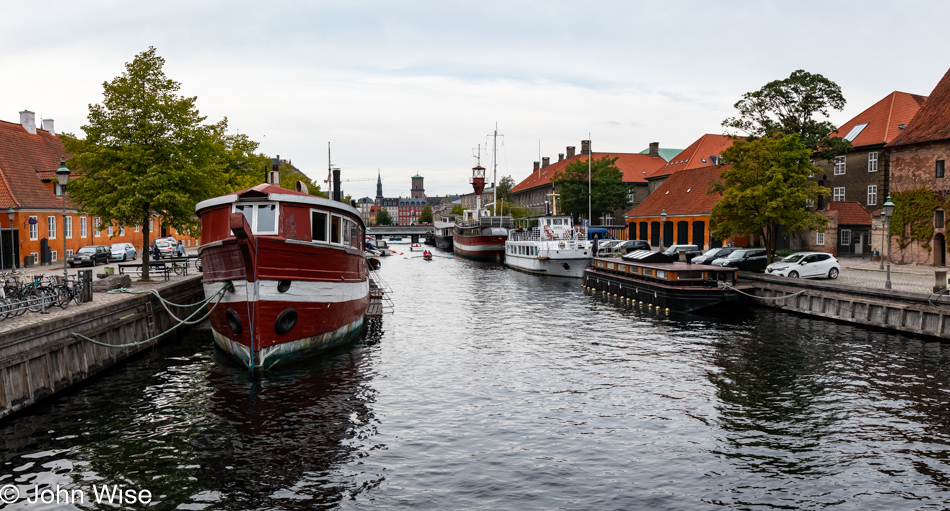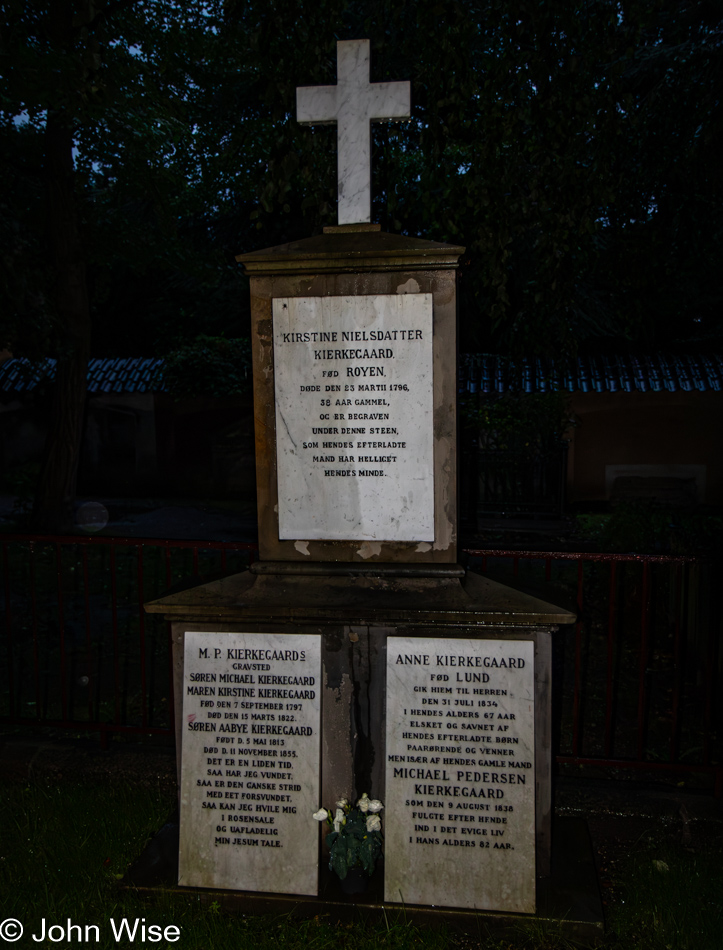
Both of us have been experiencing intense dreams since we landed in Europe, possibly related to the shifted sleeping patterns and the jetlag. It’s as though our minds get busy at night purging trash to make room for the onslaught of impressions we collect while on vacation. Caroline woke early at 5:00 with a disturbing dream where she was a character in an animated TV series called Bojack Horseman. A few years ago, after someone else recommended the show, she tuned in and shut it right down after five minutes. Based on its high stupidity quotient, she immediately understood she’d create brain damage if she watched more, and now, a thousand days later, it’s being recycled and dragging her in uncomfortably. Not only that, I’m here writing about it so she can be reminded of it again and again.
Upon finally getting out of bed, I saw an alert from our security camera at home. It turned out that Phoenix was under a thunderstorm warning, so maybe a flash of lightning triggered it. Seeing our place from so far away intrudes on a moment when it should remain a distant thought. Enough of talk of home as it represents the end of vacation and who wants to entertain those ideas when we are only now entering vacation part two and have two weeks still ahead?
Already our fourth day in Sweden, and only now are we trying Swedish pancakes: they are not a revelation. [I blame the mediocre breakfast buffet – Caroline] Time to head out and try exploring this city of Gothenburg again, as after last night’s rainy encounter, we did not feel much of a revelation either. Hopefully, over the next 4.5 hours, we’ll discover something different before our departure for Stockholm.
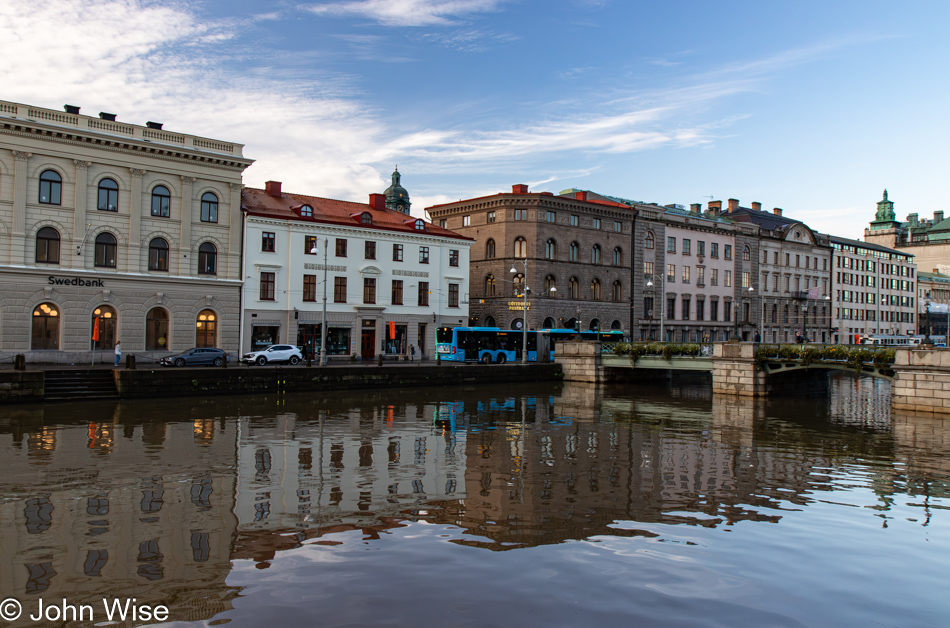
Nothing like some sun and blue sky to wash away a half-negative opinion. So, while not a stunning historical place, Göteborg (local spelling), at 400 years old, is a relatively young city with its architecture reflecting that, and it is clearly better experienced on a nice day rather than a gloomy one. While that’s often true for many places we visit, there are others where it doesn’t matter the weather.

I must admit a failure of imagination as I should have been able to glean possibilities last night but maybe after ten days in Europe of constant pressing forward, we are encountering a bit of exhaustion. Not that we’ll give in to slowing things down, as we are well-invested in our ability to push hard in order to maximize our investment. Maybe we are like two golden sea unicorns unencumbered by being fixed to anything. We swim freely, turning experiences into treasures.

Last night passing Central Station, we saw a QR code on a small streetside billboard offering a tourist map of the city and grabbed it. This morning, we are trying to decipher details on a PDF file we can’t zoom into.

There are absolutely beautiful corners to be found here in Gothenburg that also require a bit of hill-climbing up cobblestone streets and a ton of stairs to ascend and descend.
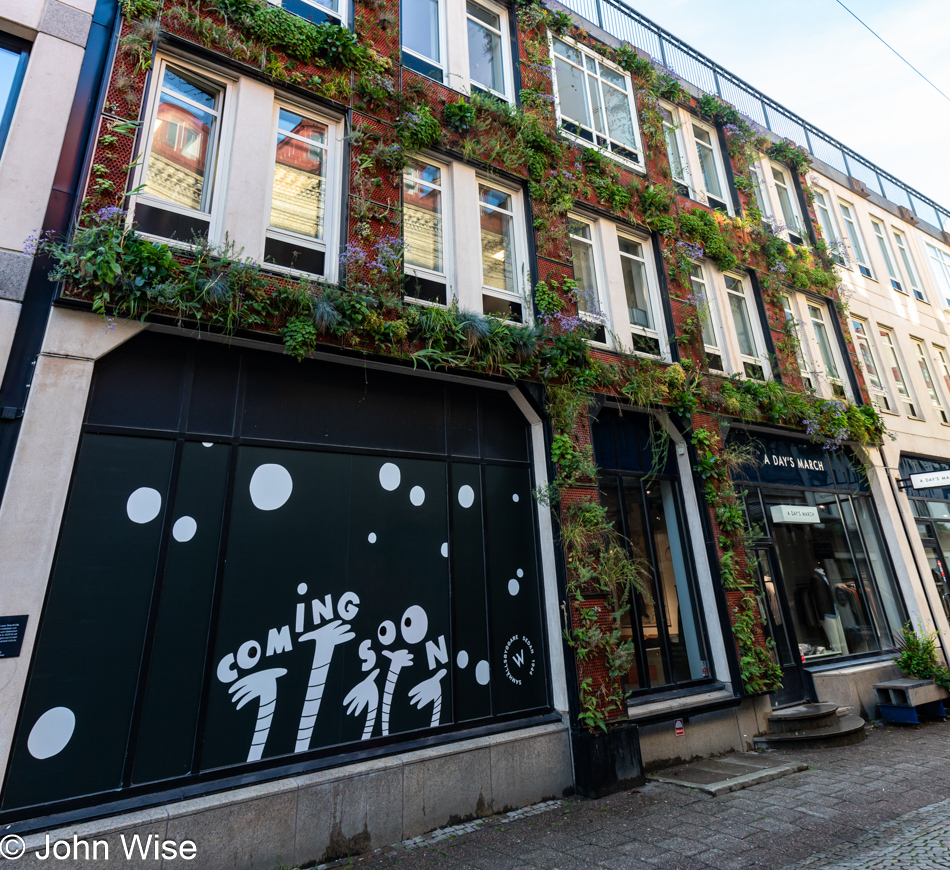
I can’t remember if it was flying into Frankfurt or flying into Copenhagen where I noticed a lot of grass roofs to offset the effects of the sun radiating back into the atmosphere as one more measure to combat climate change, but that was yet another aspect of people trying to be proactive, and now here we are seeing a facade supporting plant life. A small, maybe even insignificant contribution, but it lets you know that there are those who believe these are worthy efforts if for no other reason than to inspire others to think about the environment.

We are crossing the Kungsportsbron – King’s Gate Bridge. The old wooden one is long gone; it was replaced by this bridge back in 1901. The town of Gothenburg was initially a fortress, and the waterway under this bridge was once a moat. When the defensive walls and bastions were torn down in the early 1800s, the decision was made to keep the moat: some forward-thinking, if you ask me, because water running through a city is one of the great luxuries.

Tacos are another luxury that obviously now has global appeal, as seen here with Panchito’s food truck.

I’m already a sucker for big bronze warriors on horse monuments, but this mural from SupaKitch & Koralie was a brilliant addition to an otherwise incredibly boring building in the background.

Yesterday, I presented my reader with the front of Gothenburg Cathedral; today, I offer you its rear, a.k.a, the apse.
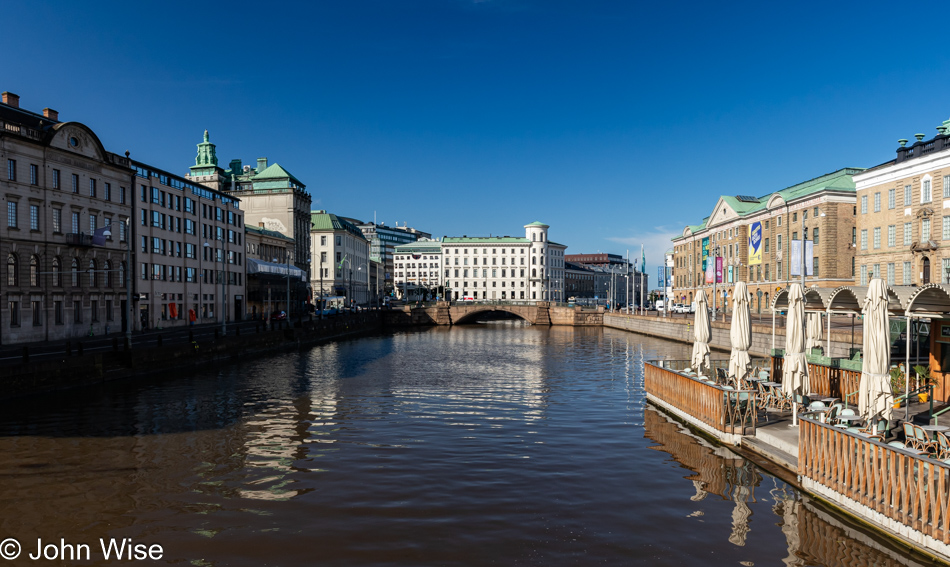
Yesterday, I also presented a very similar view to this one, except I was further back on a bridge behind this one. I thought the weather was poor, but now see that it was simply dramatic in a different way. If we weren’t in a relative hurry to experience as much as possible, I think I could have found some great photos under the gray skies. Impatience never pays.

These photos in yarn stores are mostly the same: a fiber-related background and everything Caroline is purchasing on the visit. Today, we left with this needlepoint kit for Caroline’s sister, Stephanie.

The sign reads, “The necessities of life. A very long Swedish Fika,” which already feels like words of truth to us.

We require an early lunch as our train leaves just before 12:30, so another Saluhall (Market hall) experience seems to hold promise. With a variation of a theme, today we are having a fat venison meatball smothered in thyme cream with boiled potatoes, lingonberry jelly, and a small arugula and cucumber salad. Not exactly like the Köttbullar we had previously, but close enough. Knowing what was ahead of us this afternoon, we left the counter and our barstools to walk to a nearby bakery and, as you might already know, grabbed a cardamom and a cinnamon roll.

Though we’ll have walked seven miles around Gothenburg this morning, we recognize that we’re seeing very little of this city with a population six times bigger than Lund, so there must be more to it and maybe even some interesting corners that should warrant a return visit. I’m not opposed to coming back, but there’s so much more to be seen of our world.
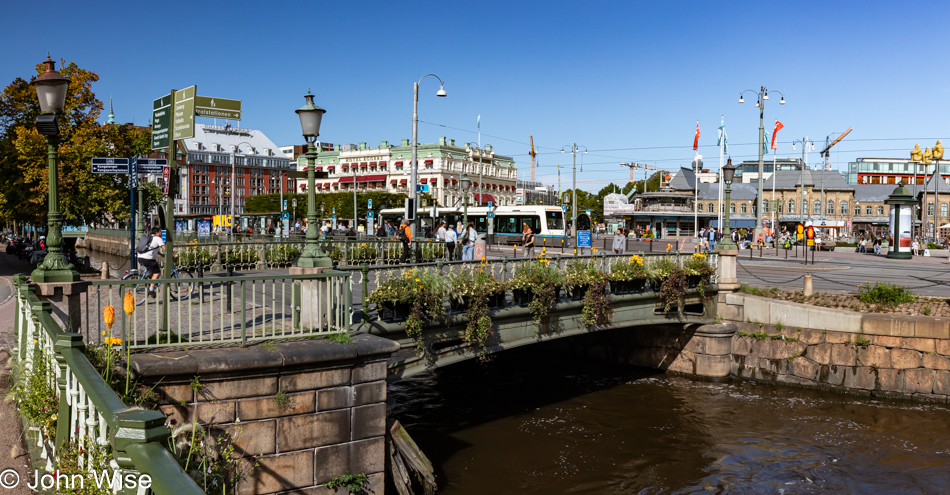
I don’t think I’ve shared this yet, but we have not seen a single homeless person in Denmark or Sweden, while we have seen a lot of flowers, plants, and trees, which likely are an attempt to make up for inevitable gray days. Writing this, I wonder what could the United States do to brighten the situation around the masses of homeless people who are lending a gray pallor to our cities. [A few hours later, in Stockholm, we saw a number of homeless folks, so we know they exist in Scandinavia, but in nowhere near the numbers that we saw in downtown Frankfurt, for example – Caroline]
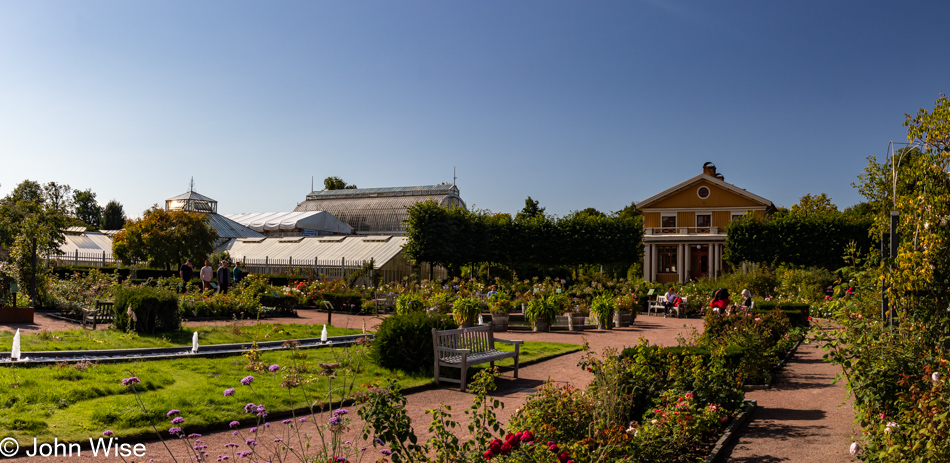
A funny thing happened on the way to our hotel to fetch our bags: we stumbled into the Trädgårdsföreningen (Garden Society) across the way from Central Station and took a few minutes to smell the roses in the rose garden as that’s what one does when they are otherwise pressed for time but think they have just enough minutes to spare that they can act irresponsibly.

I’m guessing we are maybe 100 meters (300 feet) from the other bridge I photographed a couple of photos above. Just past the reddish building on the right is the large square next to the train station, and the view of the area couldn’t be any more different. Of the eight potential sites we could have visited, we missed half. I suppose the idea of visiting three museums when we didn’t even arrive until 4:30 p.m. yesterday and leaving shortly after they opened wasn’t a formula for winning any sightseeing awards. There were other places we walked by or visited, but the photos didn’t really work out such as at the Carolus XI Rex Bastion, but there were already too many photos for a single post.
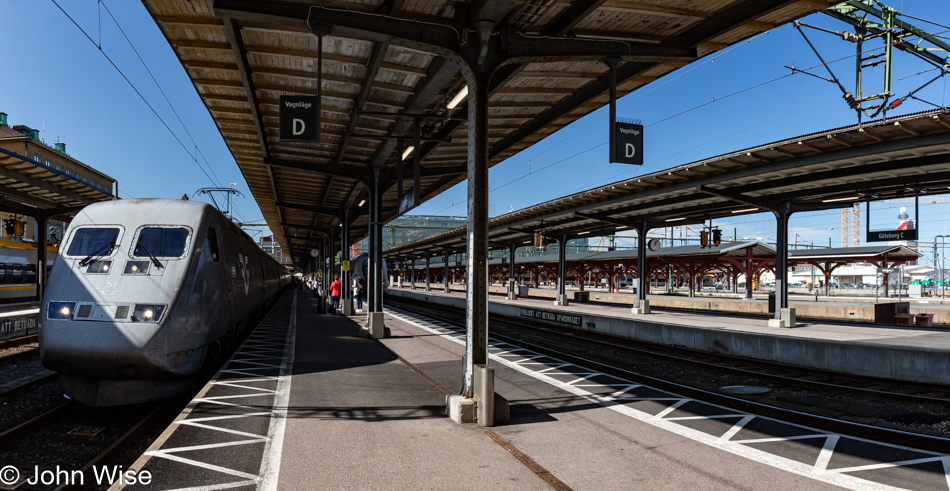
Clickety-clackety went the broken wheel of our cursed suitcase, but we made it back to the station. We were even early for the train that wouldn’t leave for another 20 minutes.
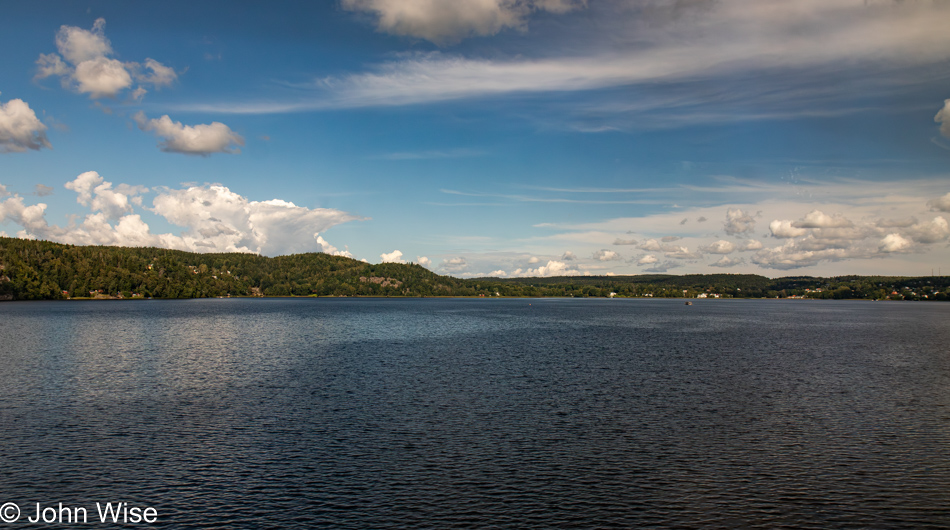
I have no idea what the name of this lake is; it doesn’t even matter. We were speeding by just inches from the shore in addition to a number of other nameless lakes we’d pass along the way to Stockholm.
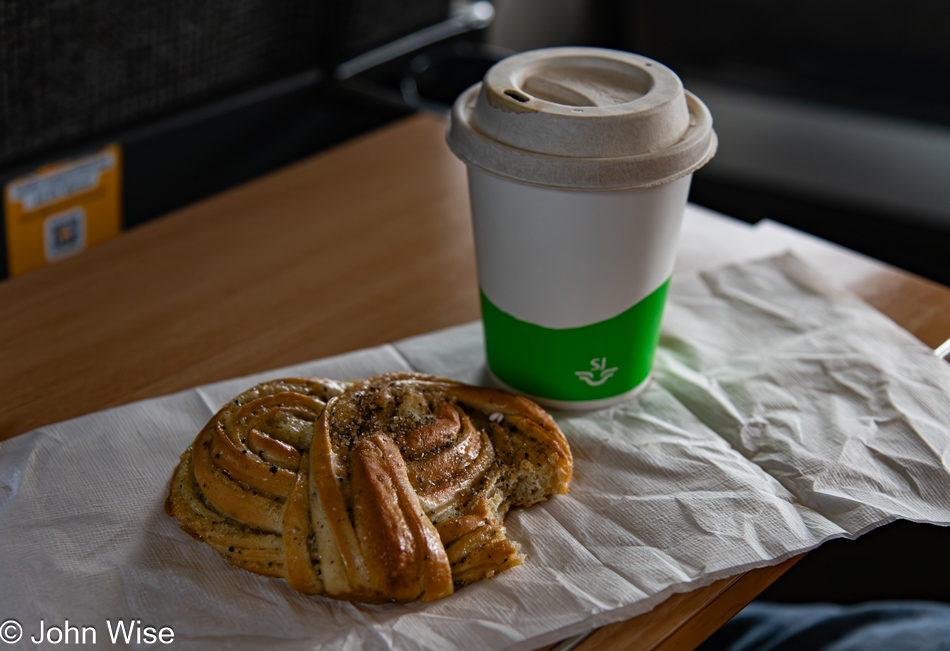
This would be our first 180 km/h (110 mph) fika on the fly. Those rolls we bought at the Saluhall were finally brought out and with coffees supplied by the restaurant car, we dug into our rolling fika. My cinnamon roll was almost gone when it occurred to me to take a photographic reminder of yet another perfect Swedish coffee pause. Lucky for us, Caroline had only taken a single bite because she really knows how to savor the good things.
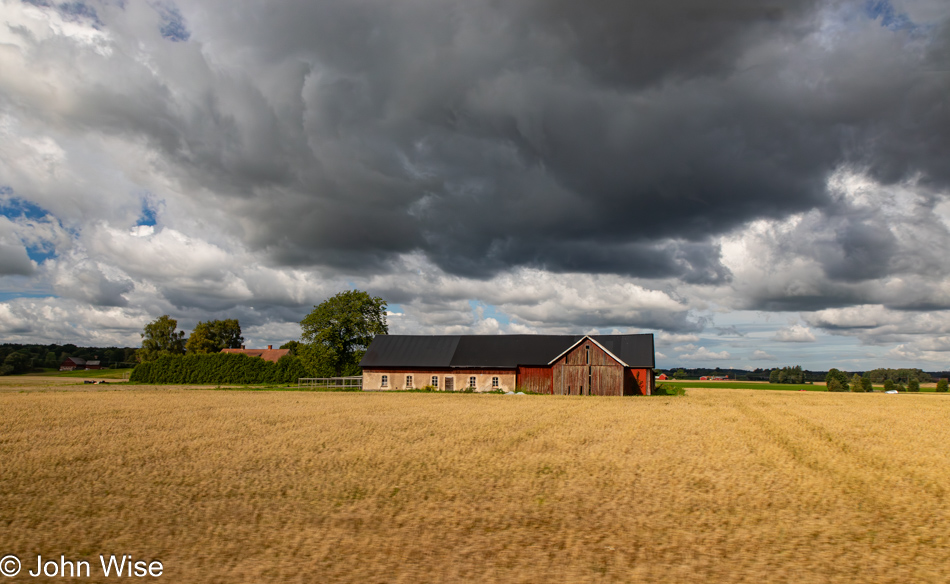
Maybe the following incident wouldn’t have occurred had we been sitting in the crowded 2nd class compartments of the train instead of the lofty isolation of 1st class, but when Caroline was returning from a facilities break, it seems she considered choosing a different seatmate for the rest of her journey. The side eye offered her by the “other” guy apparently gave her the impression she was being spurned because she jumped up quickly and returned to me as though I hadn’t recognized her attempt to escape my clutching heart. While this is a first on a train, Caroline has been known on previous occasions to approach other cars (and even stepping into one) that she “supposedly” thought were ours.
We’ve passed through Katrineholm under overcast skies with occasional rain along the route to Stockholm. I’ve seen plenty of cows, sheep, and horses but an absolute dearth of birds. Of course, just as I noted that I spotted a dozen or so birds.
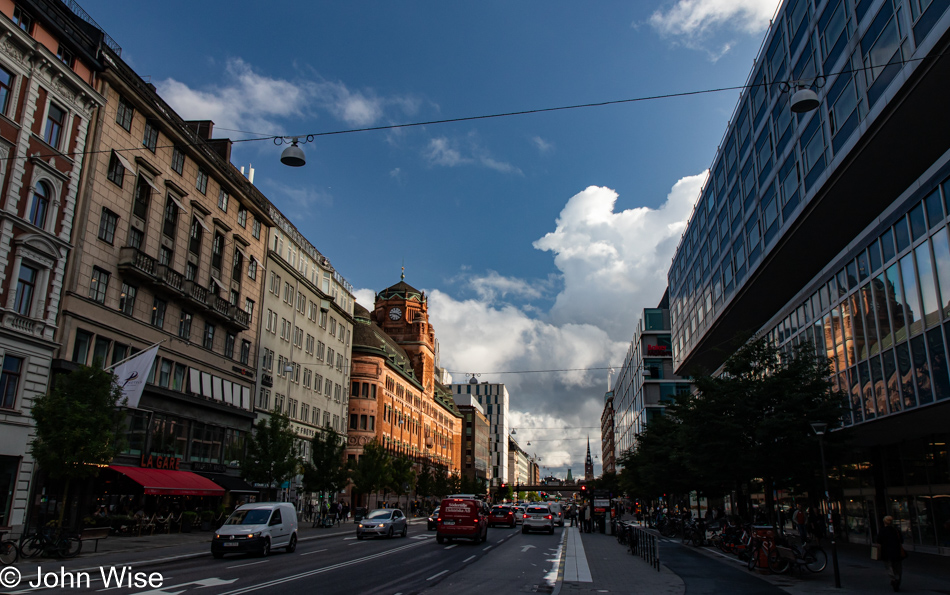
Leaving the crush of humanity at the central train station in Stockholm, we dragged this suitcase that is a constant reminder of how much I want to rid myself of this broken thing to the hotel, checked in, and were gone in minutes to experience this great weather.
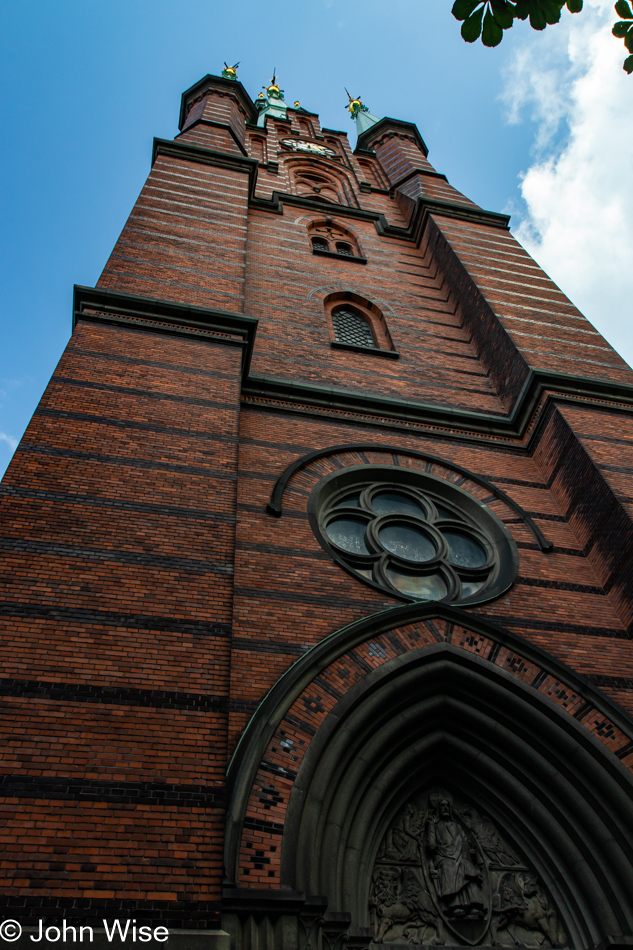
Orienting oneself to a new environment never really happens in the first minutes of being somewhere new, and this afternoon was no different. Construction exacerbated the issue, culminating with me insisting we follow my intuition to a dead-end until Caroline led the way to the St. Clara (Klara Kyrka) church.

Back in 1527, this church was built over the one that had stood here since the 1280s. That initiative was led by King Gustav I Vasa, recognized as the first king of Sweden because he removed Sweden from the Kalmar Union, which was initiated by Danish Queen Margrethe I as a means of countering the influence of the German Hanseatic League. There will be points along this trip where I’ll reiterate previously stated moments out of history in order to cement the connections and relationships I’d like to better understand.
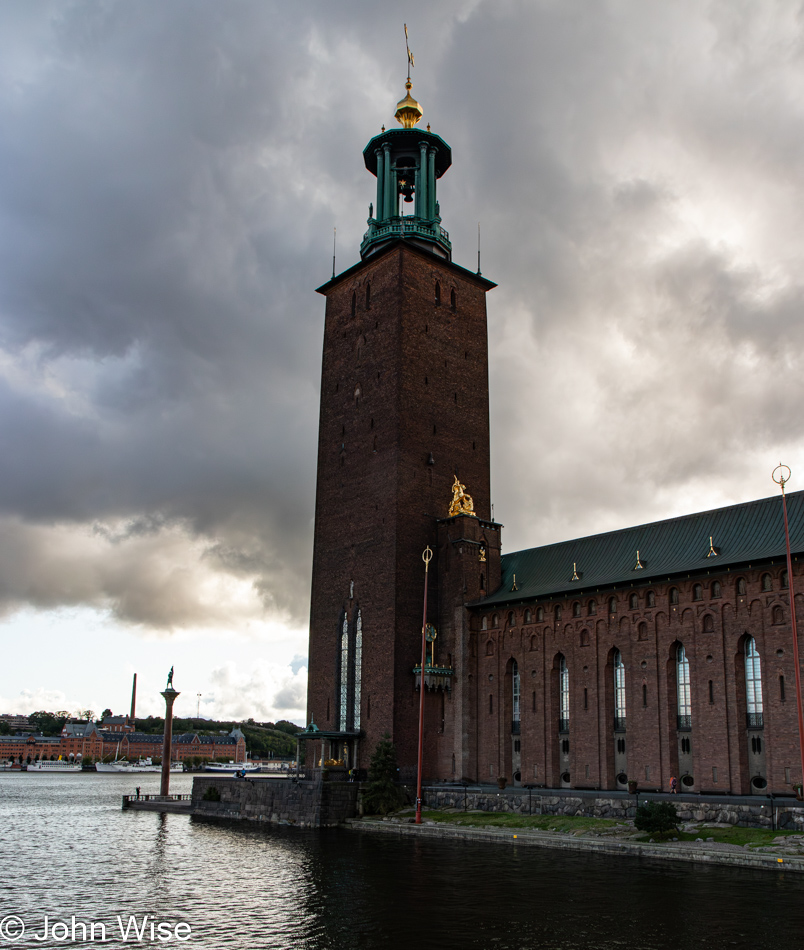
This is Stockholm City Hall, which just celebrated its 100th birthday. While city hall was on our list of places to “see,” there wasn’t a note to ourselves about it being a must-see interior, and we blew it. Reading up about the local seat of government here, it turns out that the Golden Hall is decorated with a mosaic made of 18 million tiles of colored glass and gold. Reason #26 for why we must return to Scandinavia.

It is said that Birger Jarl used to tame wild Swedish lions as an infant, and why not? Italians believe that Romulus and his twin brother, Remus, who founded Rome, were raised by a she-wolf. In all honesty, one of these stories is not true.
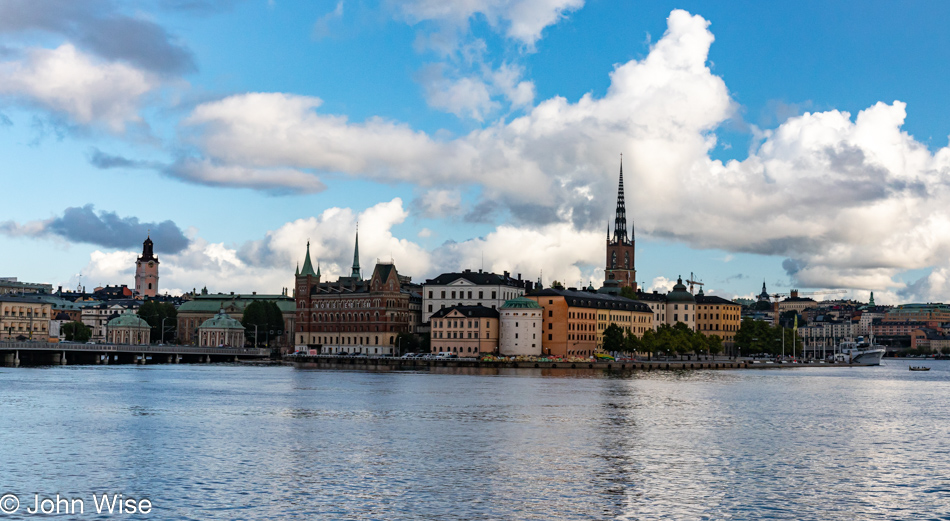
That’s Riddarholmen island across the Riddarfjärden, which is the easternmost bay of Lake Mälaren and where we’d be heading after leaving the city hall area.

This is the gold-plated cenotaph of 13th-century Swedish statesman Birger Jarl. Also known as Birger Magnuson, this was the man who is considered the founder of Stockholm, who also played a foundational role in establishing the lands that would become known as Sweden. For these efforts, King Eric XI offered Birger the title of Jarl, which was a role just below the King. Earlier, I stated that Gustav I Vasa was the first king of Sweden. Until that point in time, the territories of the Kalmar Union were effectively ruled by the Danish monarchy.

Nearly 8 million red bricks were used in the building of the city hall. It is in the “Blå hallen” (Blue Hall) that the Nobel Prize banquet is held (the Golden Hall hosts the ball). Yet another reason to despair is that we didn’t visit the building during our time in Stockholm, as the sheer number of geniuses that have ascended these stairs is staggering.

Birger Jarl’s Tower was never visited by or known to Birger Jarl since it was built hundreds of years after Birger died. King Gustav I had this tower erected as part of the city’s defensive structure, and it’s considered the oldest building in Stockholm.
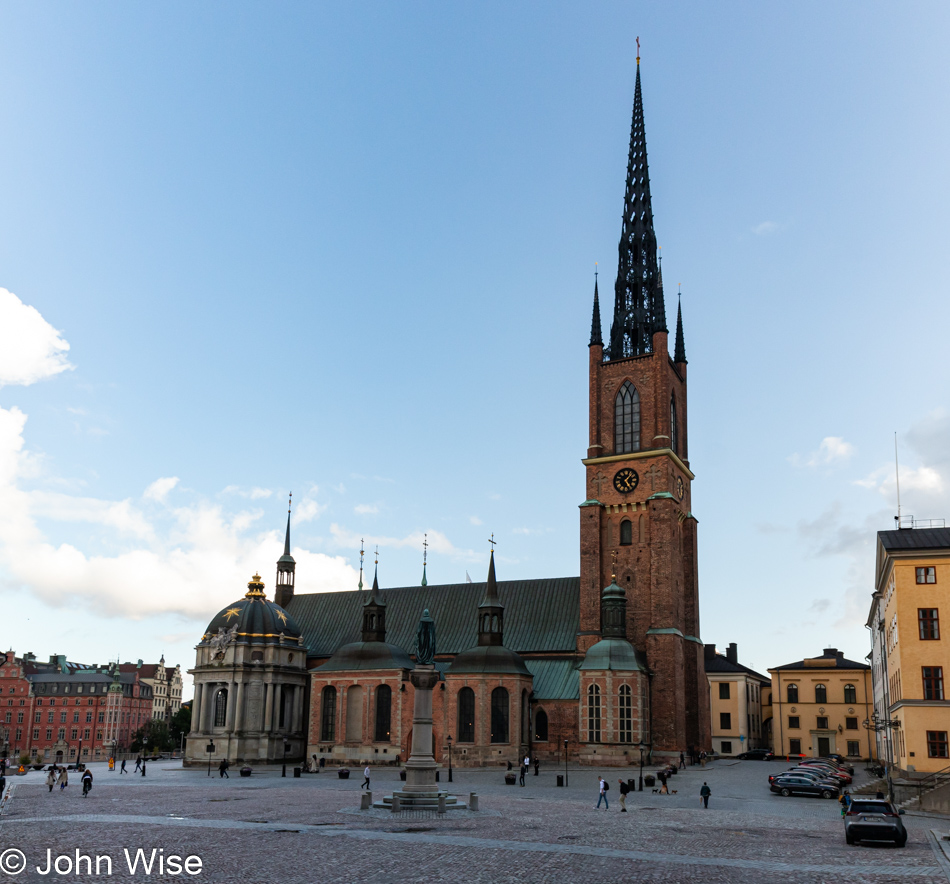
Reason #27 to return to Scandinavia: visit the interior of Riddarholmen Church, which is only open during the summer. There are a number of royals interred in the church, though it is no longer used in that capacity, and royal burials have been moved to the Royal Cemetery.
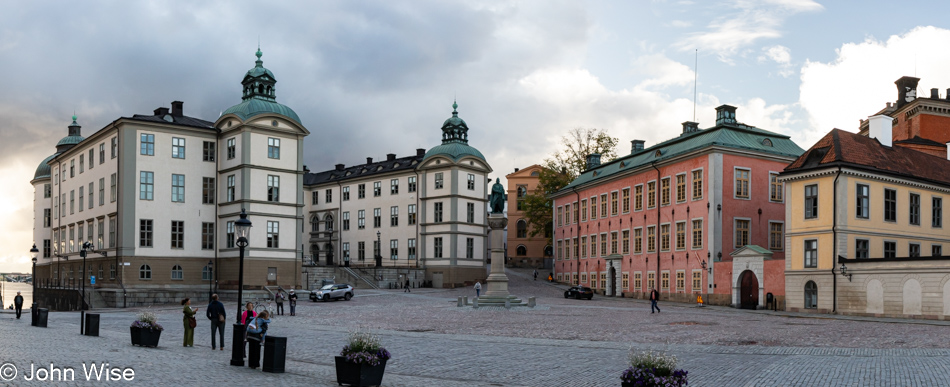
The view is still of Riddarholmen Island as we look back toward Birger Jarl’s Tower, which stands behind the building to the left. This corner of Stockholm is also a part of Gamla Stan (Old Town).

Nice rendition of Czar Putler of the Commie Republic of Former Soviet Fascists.

We are being swept off our feet by the immense spectacle and beauty that is here in Stockholm. We had no idea that Sweden’s capital would be on par with the impressions we gathered in Vienna. In the background is Storkyrkan (Stockholm Cathedral), which is already closed like most everything else.

In the squeeze at Mårten Trotzigs gränd, which is the narrowest alley in the city. The man it was named after was once one of the richest men in Stockholm but found an untimely end when he was beaten to death a couple of hundred kilometers away in Kopparberg.

Humans exist here where cars are forbidden.

When planning our vacation, I thought there was a chance we’d not have seen a runestone yet and that maybe time wouldn’t allow us to catch this one either, but here it is, and runestones are becoming relatively common. The fragment of runic script reads ᚦᚬᚱ[..]ᛅᛁᚾ ᛫ ᛅᚢᚴ ᛫ ᚠᚱᛅᚤᚴᚢᚾ ᛫ ᚦᛅᚢ[…] ᛫ ᛋᛏᛅᛁᚾ ᛫ ᛁᚠᛏᛁᛦ […] ᛋᚢᚾ ᛋᛁᚾ and translates to Thorsteinn and Freygunnr, they … stone in memory of … their son.

Visiting Stortorget (The Grand Square) was a crazy idea as this place is packed. I can’t imagine what it was like a month ago! With everyone else trying to capture selfies with the Nobel Museum posing behind them, I opted to take this photo of the old fountain.

Men have been pissing here for 133 years, and it smells like it. There was no way I was going to see the Källargränd Urinal built in 1890 and not use it myself, but damn, once the stream started, I was seriously tempted to step to the side and piss in the street as the stench was so pungent. My first introduction to pissoirs was in Amsterdam in the 1980s, and in researching the history of this Swedish unit, I learned that the Vespasienne Arago, the last surviving Parisian pissoir, is still in use and calling for my pee.
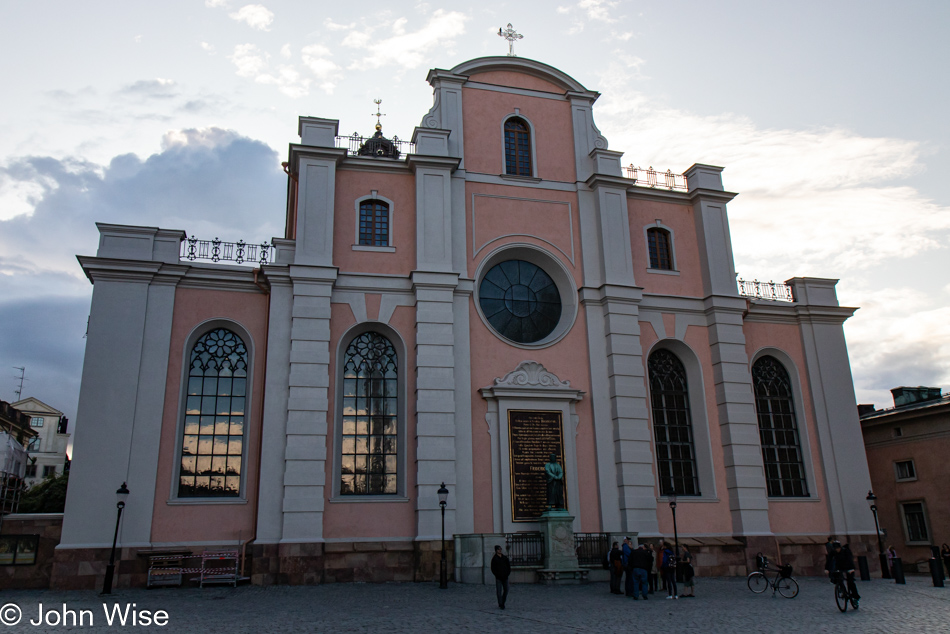
No entry here to the Storkyrkan (Stockholm Cathedral) as in keeping with tradition, the western side is where the entry is found. When one walks into a church, the stained glass windows should be catching the rising sun to the east thus illuminating the sanctuary in such a way as to inspire awe in visitors.
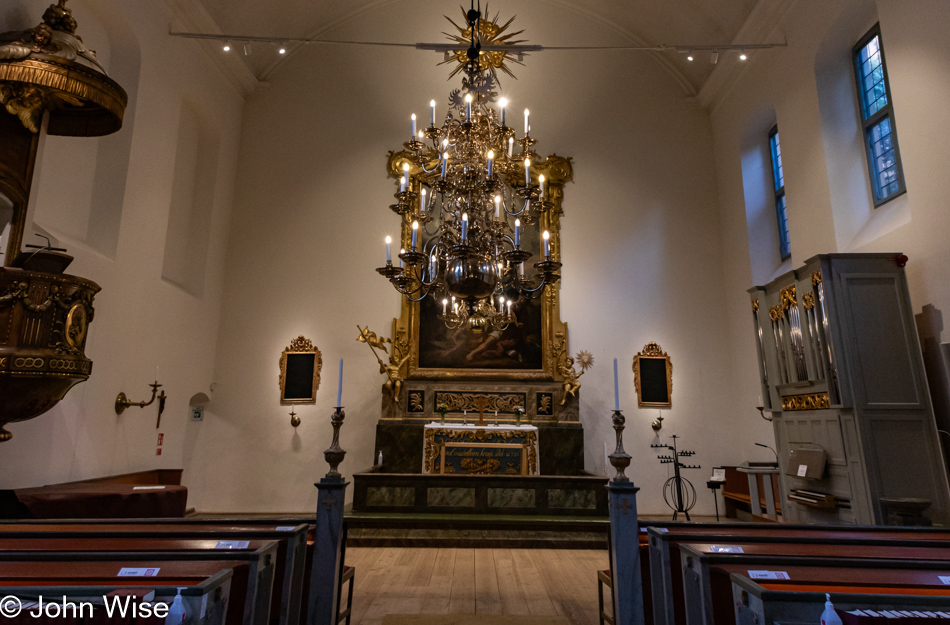
Welcome to the Suomalainen Kirkko (Finnish Church) we shouldn’t have been able to visit, but a private event that was wrapping up still had the doors open, and me being me, we walked right in like we belonged here, nobody said a thing. We kept our visit to a minimum, failing to capture a great photo, but no matter, this documents our first-ever visit to a Finnish church.
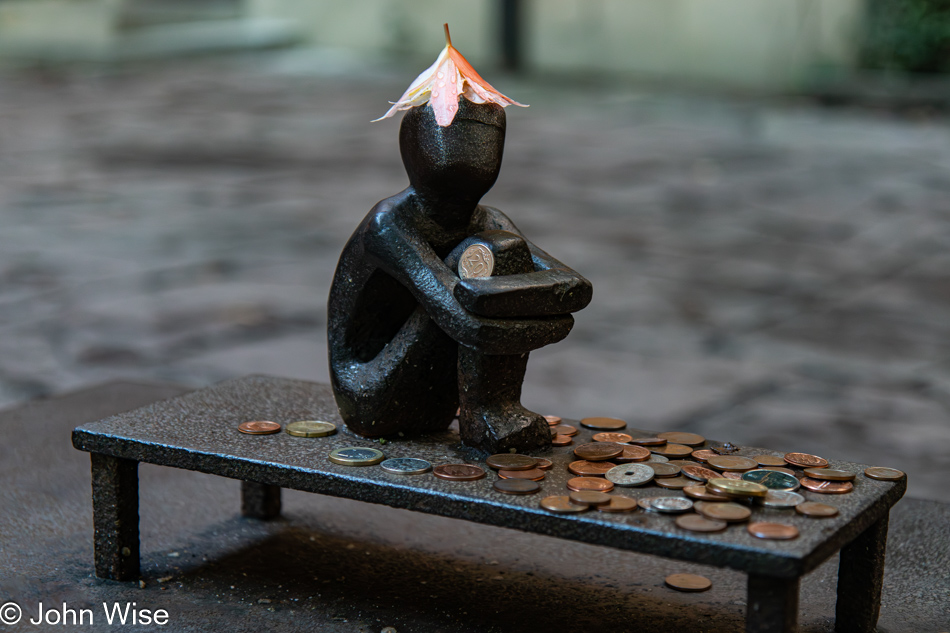
Järnpojke, or Iron Boy, is the smallest public monument in Stockholm and is located right behind the church we just barged into.
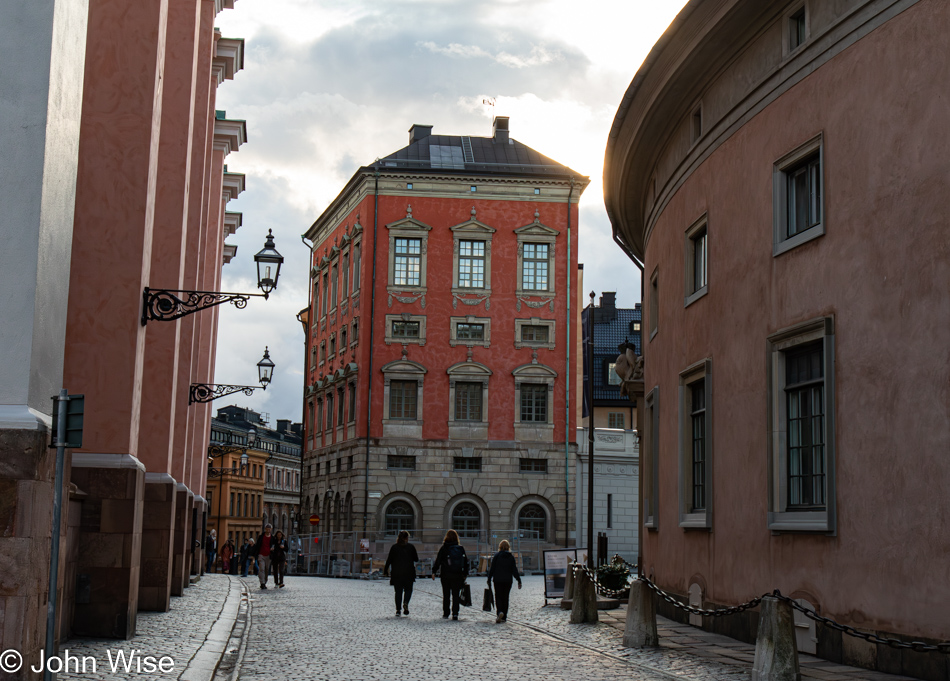
The Axel Oxenstierna Palace must be noted because Oxenstierna was a badass. We have read quite a lot about this man with regard to his time involved with the Thirty Years War of 1618 to 1648 but know little of him otherwise; well, let me tell you. When Oxenstierna was a mere 29 years old, he became Lord High Chancellor of Sweden to King Gustavus Adolphus. By 1632, the king died in battle, leaving Oxenstierna in effect, the regent of Sweden. Then, in 1634, he introduced the Instrument of Government, which was effectively Sweden’s first constitution, and established counties in his country, which replaced provinces and remains the form of local government until this day.

As the changing of the guard began at the Royal Palace, I must have been the most unprepared visitor there that day because the troop was moving fast, and I was about to get a photo of their backsides if I didn’t snap now. While the image is blurry, there was just enough focus that I found this interesting enough to share.

The Royal Palace is a gigantic place, and while it’s still used by King Carl XVI Gustaf for state ceremonies and special events, it seems to be mostly a tourist attraction these days. The king and queen currently live out of town on an island at Drottningholm Palace.

After the guards moved behind some doors that are off limits to visitors, their business wasn’t finished yet, and from time to time, another guard emerged to care for something or other. One of those young guards in the King’s employ was close enough that I was able to ask if I could get a photo of her. I love the helmet and hope the young lady will have fond memories of the time she worked at the Royal Palace, even if it is mostly for the performance value.
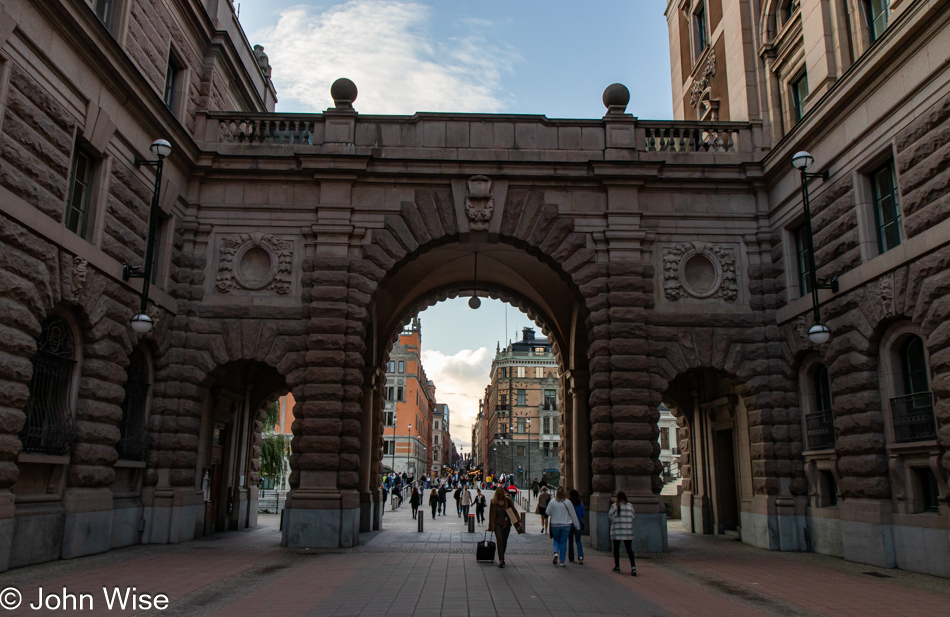
So much already seen, and yet we’ve only been a little more than 2.5 hours in the capital city. Tomorrow is our only full day in Stockholm because, on the day after, we are heading up to Uppsala. I reluctantly admit that our brief visit was based on the shortsighted idea that maybe we should limit our time in any one place so we can orient ourselves and that it’s better to capture a little bit of everything than to have never been present to participate in the life of a city, even if for only a few minutes.
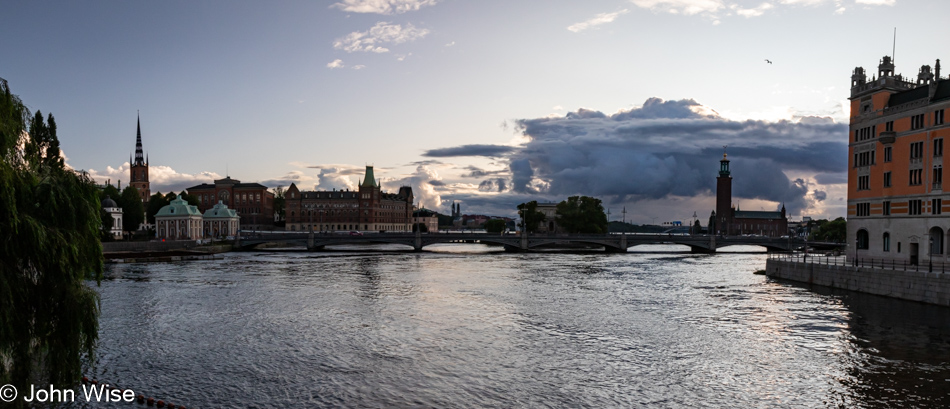
Wow, Stockholm, we never knew that this is where Vienna meets Venice. Are you just the best-kept secret, or did we arrive on the single most perfect day in the history of this city?
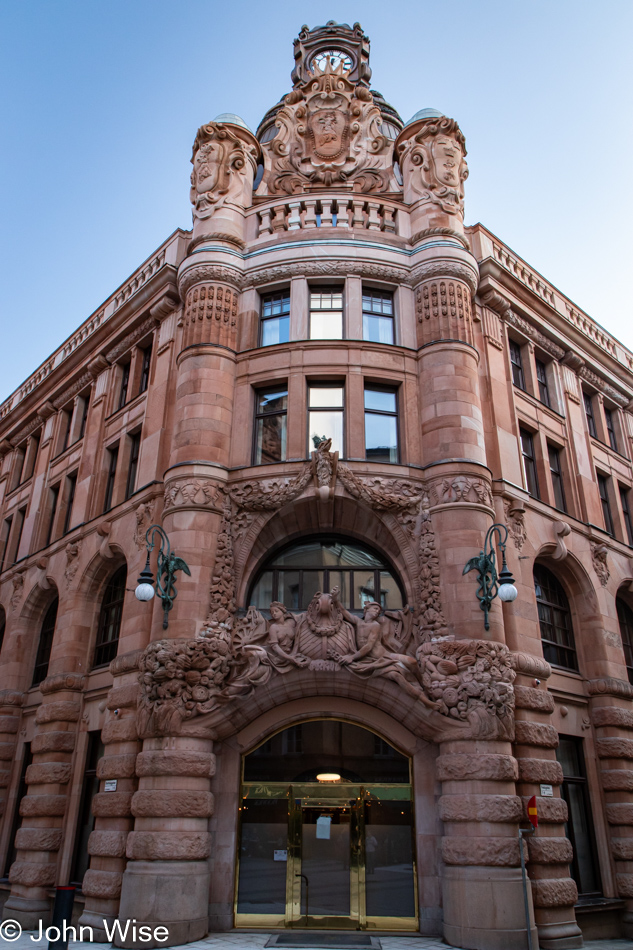
If anything, in this photo, the Art Noveau Baroque Skånebanken building looks appealing, even though the finer details are underrepresented due to the resolution. This is a tiny fraction of the ornate character spread out in all directions. Stockholm is a city you must experience with your own eyes and ears, but before you ever arrive, start learning about the history of Scandinavia and have a better itinerary to explore the details you’ll certainly want to know about instead of being dumb tourists like us who will really only be able to scratch a small corner of the surface of things.

We are crossing the Norrbro Bridge heading north, just walking around to admire the architecture as there’s so much eye candy to be found here.
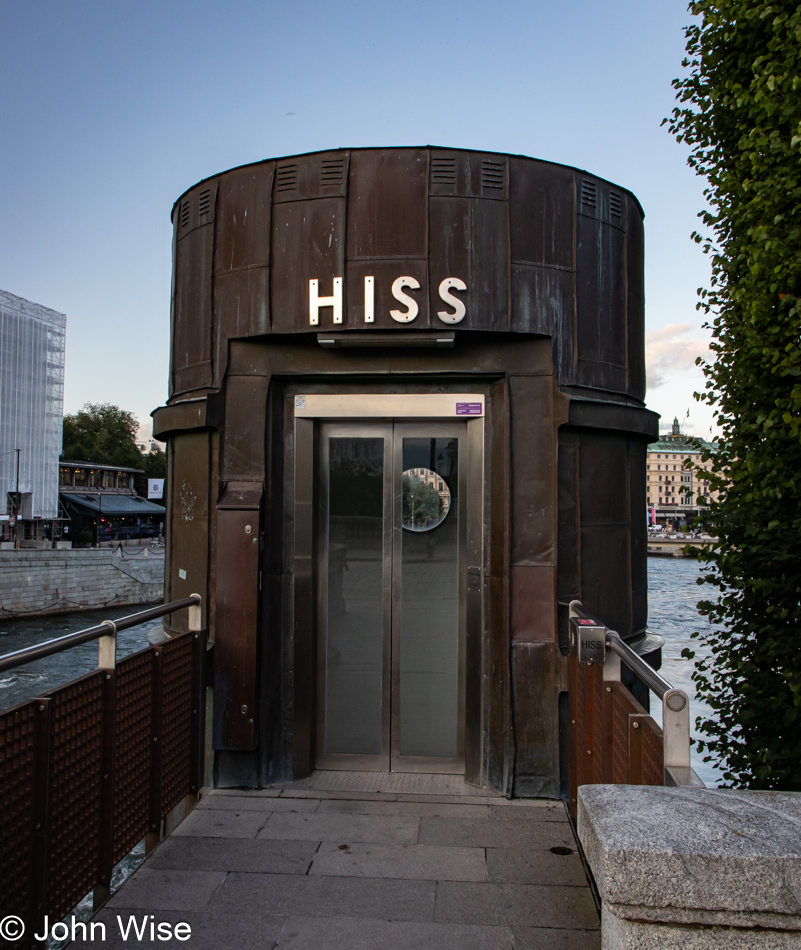
Caroline, the polyglot, was enjoying her laugh at the word Hiss, which is Swedish for lift/elevator.
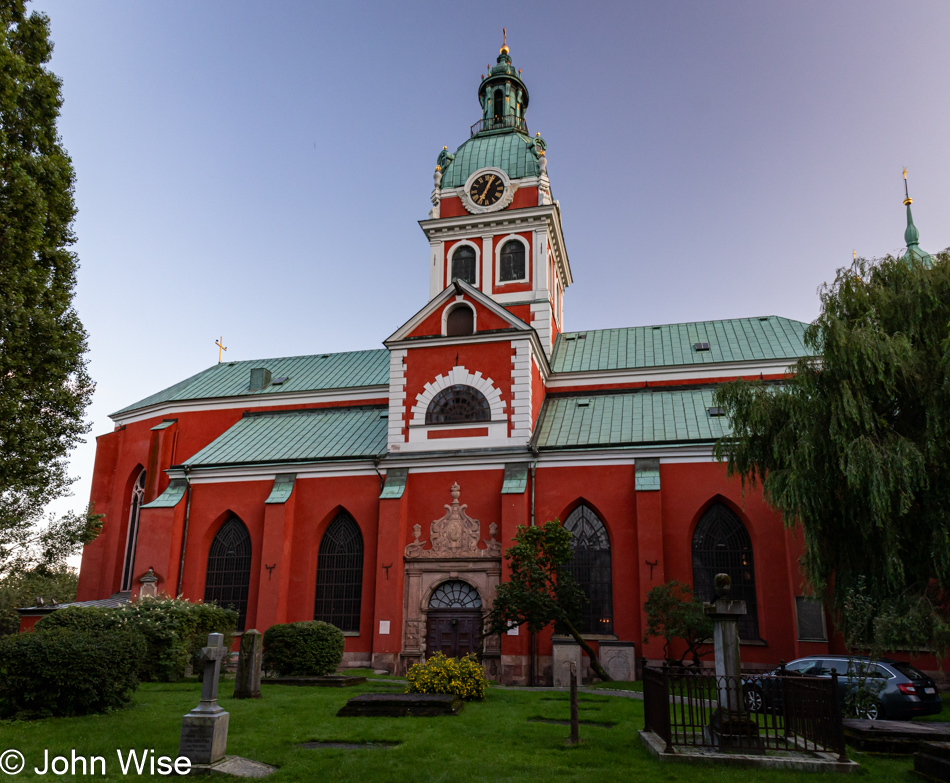
St Jacob’s Church will be our last stop of the day. We are growing fatigued after walking more than 21 km (13 miles), so we’ll head to dinner after this and then try to convince ourselves to make our way to the hotel to take a rest.
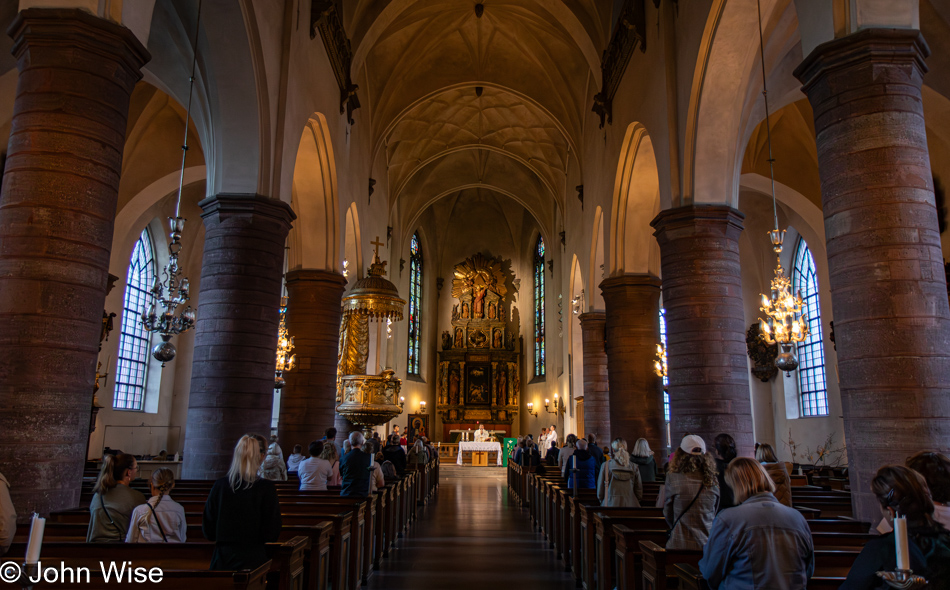
Listen up tourists, it is a serious faux pas to take photos during church services, but my travels require as many church photos as I can possibly take, even if it means I must occasionally act the tactless fool. With everything else closed, services at this time presented an opportunity I couldn’t pass up because who knows if we’ll be able to include this tomorrow.
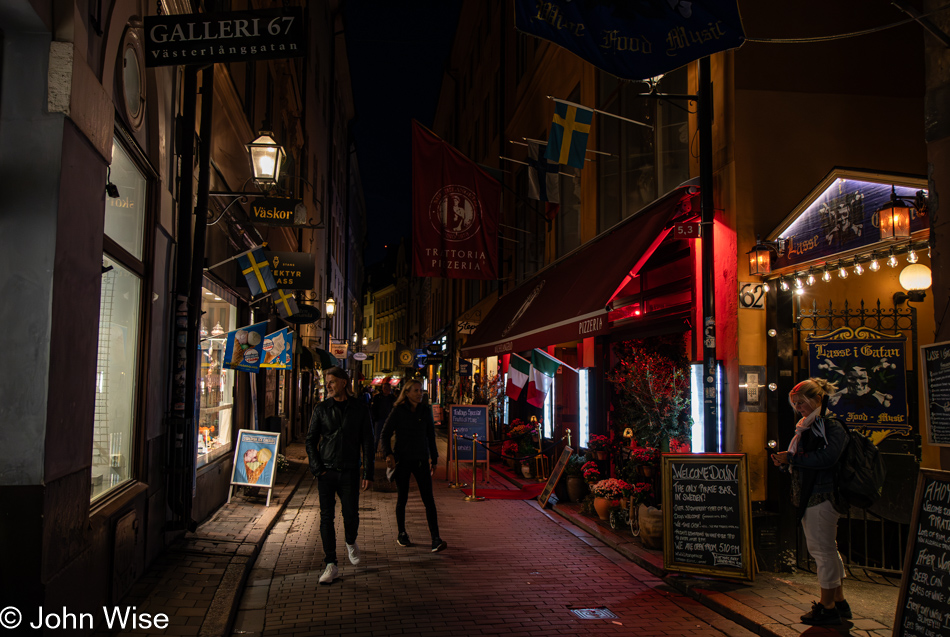
Dinner was at Kryp In Gamla Stan, which specializes in traditional Swedish meals, allowing us to start with an appetizer of chanterelles followed by venison stuffed dumplings for Caroline and flounder for me. It’s a hard balance of hoping to find authentic meals and being drawn into tourist restaurants that serve what they believe the visitor expects and are far from real flavors. With so many different languages being spoken in European capitals, one never really knows if locals eat at these places. Our meal was good, so I suppose that’s enough, but the uncertainty usually taints these experiences, having me walking away believing I was overcharged and possibly duped. On the other hand, for Caroline, there was a surprise to be found in the women’s room: free tampons, you don’t see that every day.
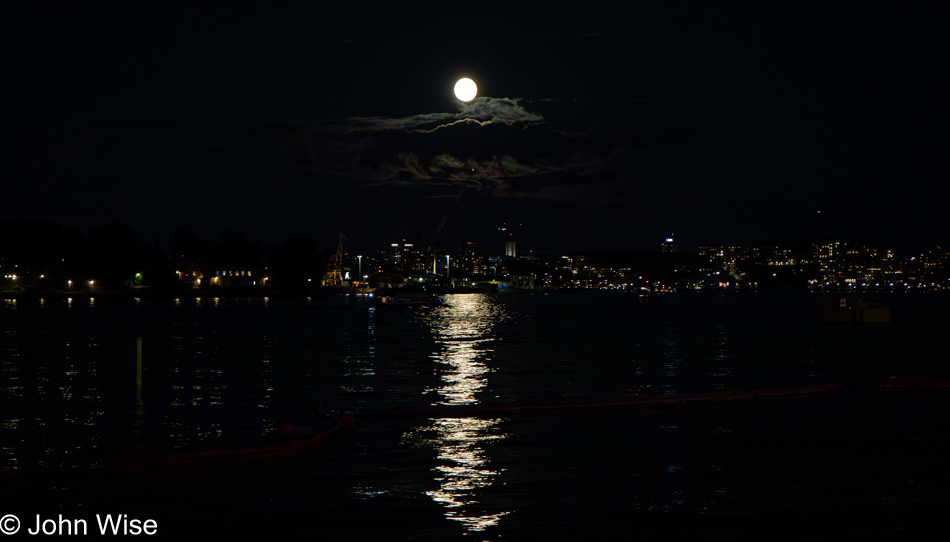
Reenergized not just from dinner but the beautiful reflected moonlight over the lake, we continued walking around Stockholm, enjoying everything about this day filled with wow.
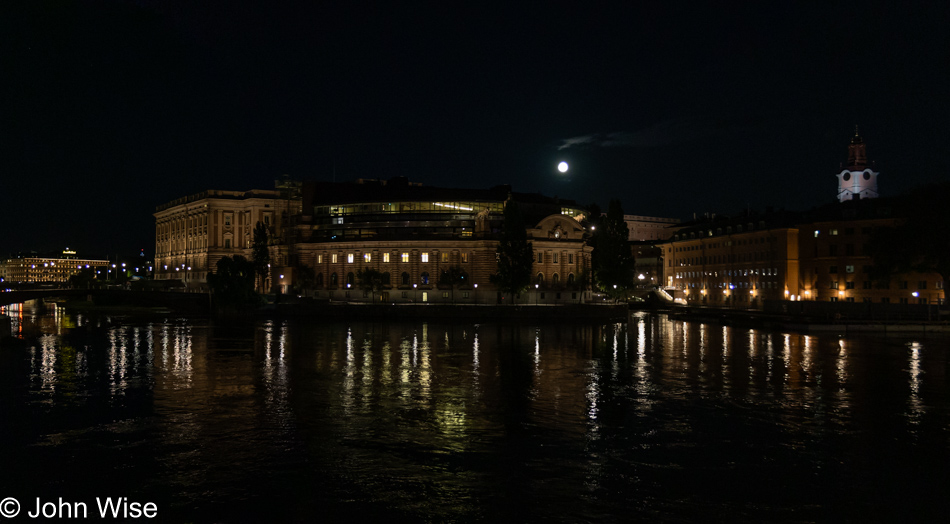
It was only a couple more miles, if that, before we felt that enough was enough and that we’d extracted as much as could from our day. Plus, we’d have all day tomorrow to explore a few places in detail.


